- You are here:
- Countries & Parks
- Kenya Travel Guide
- Best Time To Visit


Kenya Travel Guide Kenya
- Parks & Reserves
- Weather & Climate
- Popular Routes
- Getting There
- Malaria & Vaccinations
Best Time To Visit – Kenya

Anthony is a renowned Africa expert and author of many Lonely Planet guidebooks, including the guide to Kenya.
Anthony is a renowned Africa expert and author of the Lonely Planet guide to Kenya.
Anthony is the author of the Lonely Planet guide to Kenya.
The best months for visiting Kenya (and the best time for wildlife viewing) are during the Dry season from June to October. The wildebeest migration usually reaches the Masai Mara in July or August and remains in Kenya throughout September. It starts moving back to Tanzania’s Serengeti National Park around October. Wildlife viewing is good year-round, but this can differ for some parks, depending on the rains. There is a dry spell between the rains in January and February that is also a great time to visit.
June to October – Dry Season
- Wildlife is easier to spot because the bush is thin and animals gather around water
- It's unlikely to rain – the days are sunny with clear skies
- There are fewer mosquitoes
- August to October are the best months to see the wildebeest migration
- It gets very busy and crowded in the most popular parks
Wildlife Photos

November to May – Wet Season
- The scenery is beautiful and green
- Rates drop because it's the low season
- Newborn animals can be seen
- Migratory birds are present from November to April
- Except for March to May, rains are usually just short showers in the afternoon
- During March to May the rains can be continuous
- Some lodges and camps close down during part of the Wet season

Best Time To Go by Major Park
The Masai Mara National Reserve offers great wildlife viewing throughout the year. In the peak of the rainy season, most other parks, especially in the highlands and along the coast, can be problematic with regards to heat, humidity and continuous rain. Some of the lodges and camps close as a result. The dry months offer quality wildlife viewing throughout Kenya.
- Amboseli National Park Amboseli National Park Excellent "> Jan J Excellent "> Feb F Good "> Mar M Fair "> Apr A Fair "> May M Excellent "> Jun J Excellent "> Jul J Excellent "> Aug A Excellent "> Sep S Excellent "> Oct O Fair "> Nov N Good "> Dec D
- Buffalo Springs NR Buffalo Springs National Reserve Excellent "> Jan J Excellent "> Feb F Good "> Mar M Fair "> Apr A Fair "> May M Excellent "> Jun J Excellent "> Jul J Excellent "> Aug A Excellent "> Sep S Good "> Oct O Fair "> Nov N Good "> Dec D
- Lake Nakuru National Park Lake Nakuru National Park Excellent "> Jan J Excellent "> Feb F Good "> Mar M Fair "> Apr A Fair "> May M Excellent "> Jun J Excellent "> Jul J Excellent "> Aug A Excellent "> Sep S Excellent "> Oct O Excellent "> Nov N Excellent "> Dec D
- Masai Mara NR Masai Mara National Reserve Good "> Jan J Good "> Feb F Fair "> Mar M Fair "> Apr A Good "> May M Excellent "> Jun J Excellent "> Jul J Excellent "> Aug A Excellent "> Sep S Excellent "> Oct O Fair "> Nov N Fair "> Dec D
- Samburu National Reserve Samburu National Reserve Excellent "> Jan J Excellent "> Feb F Good "> Mar M Fair "> Apr A Fair "> May M Excellent "> Jun J Excellent "> Jul J Excellent "> Aug A Excellent "> Sep S Good "> Oct O Fair "> Nov N Good "> Dec D
- Tsavo East National Park Tsavo East National Park Excellent "> Jan J Excellent "> Feb F Good "> Mar M Fair "> Apr A Fair "> May M Excellent "> Jun J Excellent "> Jul J Excellent "> Aug A Excellent "> Sep S Excellent "> Oct O Fair "> Nov N Good "> Dec D
- Tsavo West National Park Tsavo West National Park Excellent "> Jan J Excellent "> Feb F Good "> Mar M Fair "> Apr A Fair "> May M Excellent "> Jun J Excellent "> Jul J Excellent "> Aug A Excellent "> Sep S Excellent "> Oct O Fair "> Nov N Good "> Dec D
Want To Visit Kenya?
1,899 Kenya Safaris
- Kenya Family Safaris
- Kenya Camping Safaris
- Kenya Private Safaris
- Tour Operators for Kenya
Safari Tours to Kenya

8-Day Exceptional Luxury Safari -Magical Kenya Fairyland
$3,212 to $3,850 pp (USD)
Kenya: Private tour Luxury Lodge & Tented Camp
You Visit: Nairobi (Start) , Amboseli NP, Lake Naivasha (Naivasha) , Lake Nakuru NP, Masai Mara NR, Nairobi (End)
Apodiformes Adventures
4.8 /5 – 175 Reviews

3-Day Fly in Fly out Masai Mara National Reserve
$1,635 to $1,943 pp (USD)
Kenya: Private tour Luxury+ Tented Camp
You Visit: Nairobi (Start) , Masai Mara NR, Nairobi (End)
Kameraz of Afrika
4.8 /5 – 101 Reviews

3-Day Amboseli Group Joining Safari 2023 - 2025
$330 to $375 pp (USD)
Kenya: Shared tour (max 8 people per vehicle) Budget Tented Camp
You Visit: Nairobi (Start) , Amboseli NP, Nairobi (End)
Bienvenido Kenya Tours and Safaris
4.3 /5 – 77 Reviews

- South Korea
- Indonesia (Bali)
- Central Asia
- African Safari
- South Africa
- Itinerary Ideas
The Best Times(Worst Time) to Visit Kenya 2024/2025 for Safari /Beach
Kenya will abolish visa requirements for global visitors starting in January 2024, guaranteeing a smooth and expedited entry process.
The best times to visit Kenya for a safari are from July to September or January to February during the country's dry seasons, however, these are also the most crowded travel times.
The best time for you to visit Kenya largely depends on what you want to see and your personal preferences. Read our article to find out the best times to visit Kenya based on different factors
Kenya Weather and Climate in Brief
Kenya is located on the equator and temperatures there are similar all year round , but it does have different climate zones: mild/warm in the highlands, warm/hot on the coast, and hot/scorching in the northern desert. There are major two seasons in the country: the rainy season and the dry season.
- Dry season : January to February, July to September
- Rainy seasons : October to December (short rainy season), March to May (long rainy season)
- Wettest month : April
- Hottest month : March, 21°C (70°F)
The Best Time to Visit Maasai Mara for the Great Migration
The best time to see the wildebeest migration in Maasai Mara is from July to September . During this period, you would see enormous herds of wildebeest and zebra in Maasai Mara. If you want to see the animals cross the Mara River, the best times are July and August.
This is also the dry season and, apart from the spectacle of the migration, you would have the best chance to see much more wildlife than usual as they gather around the water holes.
This is also the summer vacation season, so it is a great opportunity to see this impressive occasion with your family.
- Weather : sunny and dry
- Temperature : min: 10°C (50°F), max: 25°C (77°F)
- Travel conditions : high travel season, most crowded, most expensive; good lodges and camps are hard to book.
The Best Times to Visit Kenya for Wildlife and Safari
The best times to go to Kenya for a safari are from June to October and January to February. These are the dry seasons. The weather is comfortable with sunny days and cool evenings. Animals are easy to spot as they gather around the water holes. As a bonus, there are fewer mosquitoes.
The period from January to February is relatively quieter compared to the migration period from July to September. Moreover, it is the optimal time to witness the presence of baby wildlife. Fortunately, in Maasai Mara and Amboseli National Reserves, you can encounter adorable baby elephants, lion cubs, baby zebra, and more.
- Temperature : June to October: 10–25°C (50–77°F), January to February: 9–28°C (48–82°F)
- Travel conditions : It's the high travel season, which is crowded and expensive. Lodges and camps are in huge demand.
However, the best time for weather does not always mean the best experience. The smart arrangement and flexible schedule even matter more . Contact us to tailor a tour that offers the best possible experience by carefully arranging and maintaining a flexible schedule.
The Best Time to Visit Mombasa for Beach in Kenya
The best time to go to Kenya's pristine coastline for a beach vacation is from October to early March due to the comfortable weather conditions. If you prefer water activities, such as diving and snorkeling, the best time for you to visit Kenya's beaches is in November. Kenya boasts some of the best beaches, including Diani Beach in Mombasa and Lamu Island.
- Weather : Kenya's coast is humid all year round and rain could occur at any time, but it is pleasantly warm/hot.
- Temperature : 24–30°C (75–86°F)
- Travel conditions : high travel month
The Cheapest Times to Visit Kenya
The cheapest times to visit Kenya are during its rainy seasons . The short rainy season is from November to December and the long rainy season is from late March to May. March to May is definitely the cheapest time for a safari . But your travel experience may not be as good as hoped as the rain may interrupt your visit.
- Weather : wet, cloudy
- Animals : Animals are not easy to see as they tend to scatter around the park, but they may be very active.
- Travel conditions : It's the low travel season, with cheaper prices and fewer crowds. Good discounts for lodges are easy to get.
The Worst Months to Visit Kenya
The worst time to go to Kenya for a safari and beach vacation is from late March to May, which is the long rainy season in Kenya. Kenya's beaches around the Indian Ocean coastline are very hot and wet with tropical storms.
- Weather : Very wet — there are usually frequent storms and showers during this period
- Road conditions : The paths in the parks could turn pretty muddy and some roads may not be accessible because of the floods.
- Animals : You might also see fewer animals as they tend to spread out when it's wet rather than gathering around water holes.
- Travel conditions : Some camps may close because of the bad road conditions. It is the cheapest time of the year to travel.
Benefits of Traveling during the Worst Months
However, the worst period is not too bad to travel, as the rain doesn't usually last all day and it often happens in the mornings or evenings. The sun also usually comes out quickly after a shower. There are some benefits to visiting Kenya aside from the weather.
- Cheap prices : You could enjoy very reasonable prices. Safari lodges even offer discounted rates that are 30–50% lower than usual.
- Very quiet : There are fewer travelers and you don't have to wait your turn to see the animals.
- Animals are active : Some animals, such as lions, leopards, cheetahs, and hippos, are more active.
Don't let the weather stop your Kenya travel plans. If these months are your only opportunity, seize the chance ! A flexible itinerary and being accompanied by an experienced guide could truly elevate your experience. Let's customize a private trip exclusively for you .
The Rainy Seasons in Kenya
There are two rainy seasons in Kenya: the short rainy season from late October to December and the long rainy season from mid-March to May. The long rainy season sees a higher amount of rainfall than the short rainy season.
The short rainy season : This period has lower rainfall than the long rainy season and lasts from mid-March to May. You could expect brief but intense showers, usually in the afternoons or evenings. The sky is often overcast and temperatures are relatively cool. Due to the lower amount of rainfall, this season does not see much flooding, which the main rainy season does.
The long rainy season : This is the wettest period in Kenya. There are many heavy showers or downpours, which mainly occur in the evenings or at night. They usually last for about half an hour to an hour. The rain may cause floods and roads inside the wild animal reserves may become inaccessible.
Weather and Climate in Kenya
The temperature in Kenya is quite similar all year round . It has two types of seasons: rainy and dry seasons. It is dry with almost no rain in the dry seasons while the wet seasons are very humid.
The dry seasons typically occur from January to March and from July to October. During these periods, there is almost no rain. The weather is sunny, clear, and dry. The temperature is very comfortable. For example, Nairobi has average temperatures ranging between 20°C (68°F) and 28°C (82°F) during the day but is cooler at night at about 10°C (50°F) to 15°C (59°F).
The dry season is the best time for a safari trip in terms of the weather. It is also the busiest time to travel there.
Month-by-Month Guidance for Traveling in Kenya
Visiting kenya in january.
It is one of the high travel months in Kenya. It is the dry season. It is a great time to see wildlife in Maasai Mara and to get stunning views of Mount Kilimanjaro in Amboseli National Park. The land is green after the short rainy season and the animals are very active. You can also have the chance to see newborn animal babies.
The weather is very comfortable. In Nairobi, it stays around 24°C (75°F) going down to 13°C (55°F) sometimes. Over at Maasai Mara, the temperature swings between 12°C and 30°C (54°F and 86°F) on average. And if you decide to visit the coastal towns and resorts around Mombasa, expect it to be warmer at about 32°C (90°F) in the afternoon.
It is a great time to go on a safari and go hiking, diving, and snorkeling. However, it becomes crowded during this month, especially around New Year when prices and visitor numbers are highest.
Visiting Kenya in February
February is one of the best seasons for safari trips. It is the dry season. The tracks inside the park are dry, making it easy to drive along. Animals in Samburu National Reserve and Maasai Mara are very active. You will spot elephants, zebras, and giraffes in the park in large numbers.
The weather is very comfortable and similar to that in January. February is also the best month for bird-watching.
Visiting Kenya in March
The rainy season arrives in this month. Animal-view this month is a bit challenging, but you can still do it. The rains may make the tracks through the park full of mud, making them inaccessible. It is challenging for game viewing as animals may be dispersed from water sources and the thick vegetation may make it harder to spot them. However, your skillful driver would know where to find them.
It is the low travel season. There are fewer travelers in the national parks and on wildlife safaris. You may have the chance to get a better view of the animals if you're well-guided. You can travel at a very competitive price. Hotels offer great discounts and airfares are much cheaper.
Visiting Kenya in April
April is the wettest month in Kenya. If April is the only time you can visit Kenya, don't hesitate. Just go for it! And if you are after a bargain trip, April could be a top pick. You can get a great discount on lodges this month and the airlines may also offer great discounts.
In April, you may expect storms and showers but the rain doesn't usually stick around for too long. It often comes in the evening or as a quick shower, so it probably won't mess up your safari plans for the next day.
Animals are not easy to spot but our experienced drivers and guides still know where to find them. And you will see many hippo calves in Maasai Mara this month.
Be aware that some camps may close this month and the coast is wet and hot.
Visiting Kenya in May
Most travel guides suggest that you don't go during this month because of the rainy season. However, it is not actually that bad.
It is true that it's the rainy season, but the rains often come in the late afternoon or at night and don't last long. Sometimes there are short showers.
The rain brings inconvenience to a game drive, but you can still do one with an experienced driver. The roads through the park may be muddy and certain routes may be blocked, but our drivers can often take a detour.
Visiting Amboseli National Park in May can be an amazing experience — you'll see cloudy skies and huge herds of elephants enjoying the lush green vegetation in the swamps. If you're heading to Maasai Mara, just make sure to pick a camp or lodge that stays open in all weather conditions. Some camps close during the wet season because some roads can get too tricky to travel on.
Visiting Kenya in June
June is a good time to travel with children as you do not need to worry about the heat from the sun and the humidity . The large numbers of travelers are yet to arrive so you will have a bit of time to see the sights with fewer travelers in the park.
The rainy season ends this month, although there are occasional showers. June marks the beginning of the high travel season. The weather is comfortable, being warm by day and cool at night in the highlands/savanna. Although dry, it may be cloudy on most days.
June is not a good time for a beach vacation and underwater activities as it is hot and wet on the coast.
Visiting Kenya in July
From July to September, Maasai Mara and other parts of Kenya have the most traveler numbers. The Great Migration of Wildebeest in Maasai Mara attracts large numbers of travelers from all over the world.
July is one of the best times to travel, both for a safari tour and a beach vacation in Kenya. The weather is dry with almost no rain (except for on Mount Kenya and in Hell's Gate). Animals are easier to spot as the vegetation is less dense. The weather is sunny on the coast, so it is a good season for underwater activities.
If you're worried about travel costs, July might not be the best fit for you. Accommodation can get pricier — sometimes even double compared to the low travel season. And finding a place to stay could be a challenge due to high demand. But, on the upside, the experiences you'll have in Kenya are surely worth it.
Visiting Kenya in August
The Great Migration of Wildebeest in Maasai Mara is in full swing this month. You will have the chance to witness countless wildebeest and zebras crossing the Mara River. The weather is warm in the day and dry. This is the best month to go weather-wise.
August is also the best month to watch humpback whales off the coast of Kenya, breaching the surface of the water and displaying their might.
But be warned of the high travel season. It is the most crowded month of the year. You might see rows of vehicles lining up by the river banks, all there to witness the awe-inspiring river crossings of wildebeest. But the incredible views are absolutely worth it.
Be aware that the exact timing of the animal river crossings can't be predicted. But don't worry! Choosing a skillful travel guide and driver can definitely boost your chances of catching this unforgettable sight.
Visiting Kenya in September
September is a good time for an exciting safari trip without many crowds. You may see the last wave of wildebeests cross the Mara River. As the vegetation has dried out, animals tend to cluster around the water holes in the parks. So, it is easy to see them and also a good photo opportunity as there is no grass or other vegetation blocking your view.
Although it is still the high season, there are fewer travelers than in August. The chance to see humpback whales off the coast is also high this month.
Visiting Kenya in October
The early part of October can still be an excellent time for game viewing: it's the dry season without many travelers. The weather changes from the dry season to the wet season during this month. Rain usually arrives late in the month. You may still have the chance to see the migration out of Maasai Mara, depending on the weather.
Visiting Kenya in November
November is the shoulder season in Kenya. It is the short rainy season, which means that you may have short periods of rain or occasional showers during this period. The grassland is beautiful with lots of greenery and the sky is clear. If you are not worried about the haze and pollen in the air, this is a good time to go.
The animals may not be in large herds and are more dispersed across the parks, but tourist numbers are moderate.
Visiting Kenya in December
The rain in December should not affect your safari too much as it often falls in the afternoon and rarely lasts long. This is the shoulder travel season so you may enjoy a very reasonable travel price (but not as good as the low season from March to May). There are not as many travelers so you may find some beautiful quiet areas, where you can enjoy watching a cheetah or a herd of elephants all to yourself.
Although it gets busier in the latter part of the month, as the Christmas holidays come along, it is still much quieter than in the high travel season from July to October.
It's also a fantastic time of year to take a wildlife safari into any of the many national parks. In Samburu National Reserve, for example, you'll see zebras, giraffes, elephants, cheetahs, and all manner of African animals. Amboseli National Park has stunning views of Mount Kilimanjaro and December is one of the best times to visit because the lack of haze affords better views of the giant mountain.
Visit Kenya with Us
A safari trip to Kenya can be a memorable adventure. But without proper planning, it might not go as you hope. You wouldn't want to travel all the way there and not spot any animals or have to deal with unwanted large crowds, would you? So, let's turn this around. We will tailor-made a thrilling safari trip to ensure that you'll have a fantastic time in Kenya.
Why Global Highlights (10,000+ reviews & 98.8% 5-star rating)
- Save Your Time:
- Less research, more enjoyment!
- Real-time 1V1 expert planning
- Maximize Your Flexibility:
- Personal local guide and ride
- Explore at your own pace
- Celebrate Your Journeys:
- Specially-crafted family adventures
- Celebrate milestones with style!
- 9-Day Kenya Active Family Private Safari Tour
- 12-Day Kenya and Tanzania Best Safari Tour
- 12-Day Kenya Best Safari Tour with Amboseli
- 15-Day Egypt and Kenya Highlights Tour
- 1 Week in Kenya — 4 Time-efficient Itineraries
- How to plan a Family Trip To Kenya That Everyone will Enjoy
- How to Plan a Lifetime Trip to Kenya
- 2 Weeks in Kenya — 4 Unique Itineraries for Families and Couples
- Kenya Weather in January: Travel Tips for First-Timers
- Kenya Weather in February: Travel Tips for First-Timers
- Kenya Weather in March: Travel Tips for First-Timers
- Kenya Weather in April 2024: Travel Tips for First-Timers
- Kenya Weather in May 2024: Travel Tips for First-Timers
- Kenya Weather in June 2024: Travel Tips for First-Timers
- Kenya Weather in July 2024: Travel Tips for First-Timers
- Kenya Weather in August 2024: Travel Tips for First-Timers
- Kenya Weather in September 2024: Travel Tips for First-Timers
- Kenya Weather in October 2024: Travel Tips for First-Timers
- Kenya Weather in November: Travel Tips for First-Timers
- Kenya Weather in December: Travel Tips for First-Timers
Get Inspired with Some Popular Itineraries
More travel ideas and inspiration, sign up to our newsletter.
Be the first to receive exciting updates, exclusive promotions, and valuable travel tips from our team of experts.
Why Global Highlights
Where can we take you today.
- Southeast Asia
- Japan, South Korea
- India, Nepal, Bhutan, and Sri lanka
- Travel Agents
- Loyalty Program
- Privacy Policy
Address: Building 6, Chuangyi Business Park, 70 Qilidian Road, Guilin, Guangxi, 541004, China
TOP DESTINATIONS
- Kruger Park
- Okavango Delta
- Serengeti National Park
- Victoria Falls
TOP COUNTRIES
- South Africa
TRAVEL DEALS
View All Travel Deals
SOUTHERN AFRICA
East africa, indian ocean islands, top experiences.
- Beach Holidays
- Family Safaris
- Honeymoon Safaris
- Desert Safaris
- Luxury Rail Safaris
- Multi-Generational Safaris
- Positive Impact Safaris
- Photographic Safaris
- Walking Safaris
WILDLIFE SAFARI
- Big Five Safaris
- Birding Safaris
- Gorilla Trekking Safaris
- Migration Safaris
- Mobile Camping Safaris
- Horseback Safaris
FEATURED EXPERIENCES
Comfort levels, property types.
- Tented Camps
- Boutique Hotels
Featured Safari Collections
- Red Carnation
- The Safari Collection
GET TO KNOW US
- Meet The Team
- Pricing Explained
- Traveller Reviews
- Traveller Stories
- Why Book With Us?
- HerdTracker
- Safari Cost Calculator
- South Africa In 360
- Trusted Safari Partners
What are you looking for?
- Safaris & Tours
- Destinations
- Experiences
- Accommodations
- Why book with us?
Hello traveller!
It's in Cape Town now.
We're sorry. Our safari planners aren't available now. Our office hours are 08:00 - 19:00 (GMT+2).
Call us to speak to an experienced safari planner.
Alternatively, we recommend...
Schedule a phone or Zoom call with one of our safari planners
Complete our travel enquiry form to connect with a safari planner

- Kenya in September
Africa's best authentic tailor-made safaris

By Matthys van Aswegen
Safari Travel Planner
Nairobi and the central highlands are hot by day, cool at night, and receive practically no rain. Mombasa and the coast are hot by day, relatively cool at night, and receive a fair amount of rain.
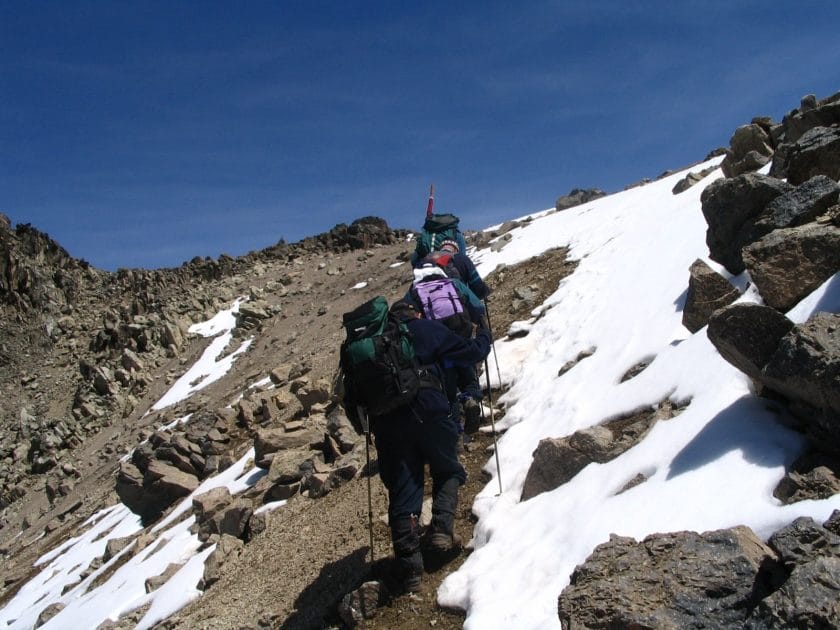
The Rift Valley and western interior are hot by day, cool at night, and receive moderate rainfall.
- September is a good time for beach holidays on the Kenyan coast, being relatively cool and dry.
- Game viewing in most safari destinations during a holiday in Kenya is good in September. The wildebeest migration is usually well ensconced in the Masai Mara, making it arguably the best time to visit this reserve.
- Humpback whales are often seen off the coast in August-September. Being relatively dry in the highlands, September is one of the best months for climbing Mount Kenya .
How it Works
View our recommended safaris for inspiration and get ready to plan your dream safari
Contact us or fill out an enquiry form and one of our travel experts will help you tailor make your perfect safari
Enjoy an authentic African experience.
Travel with Confidence
With over 20 years of experience, our team will help you tailor your itinerary to your perfect adventure., 24/7 support, personalized, popular kenya safaris, these recommended tours for kenya can be tailor-made to match your budget..

Affordable Masai Mara Safari
East Africa Kenya Maasai Mara
From $ 3050 /USD
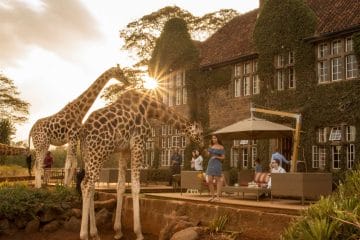
Giraffe Manor and Luxury Mara Wildlife Discovery
East Africa Kenya Nairobi Maasai Mara
From $ 10900 /USD
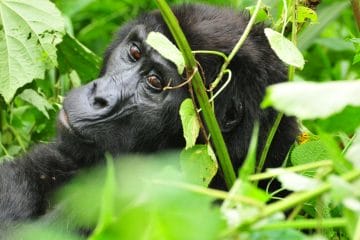
Migration in the Mara and Gorilla Trekking
East Africa Kenya Maasai Mara Uganda Entebbe Bwindi Impenetrable
From $ 6740 /USD
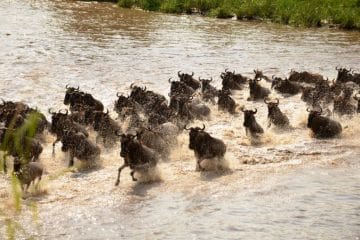
Migration Safari in Kenya and Tanzania With a F...
East Africa Kenya Maasai Mara Tanzania Safaris Serengeti Ngorongoro Crater
From $ 7250 /USD
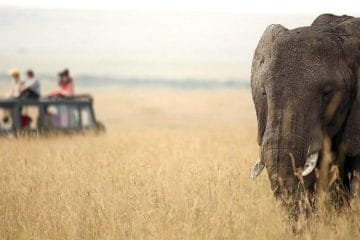
Masai Mara and Serengeti Combo
East Africa Kenya Maasai Mara Tanzania Safaris Serengeti
From $ 11850 /USD
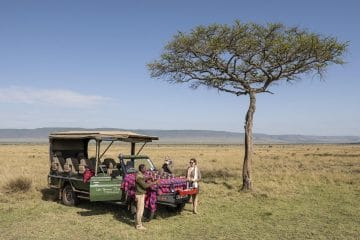
Migration River Crossings Safari with Governors...
From $ 4440 /USD
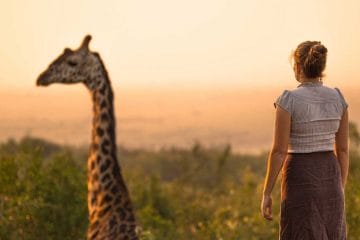
21 Kenya Safaris to choose from
Stay for 4 - 17 days
Experience our Tailor-made Tours in Kenya
Our recommended tours in kenya.
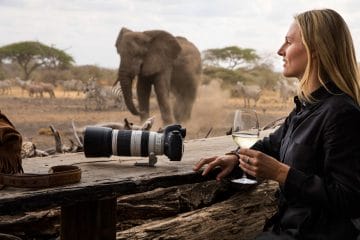
Enchanted Kenyan Safari
East Africa Kenya Chyulu Hills Maasai Mara
From $ 8900 /USD
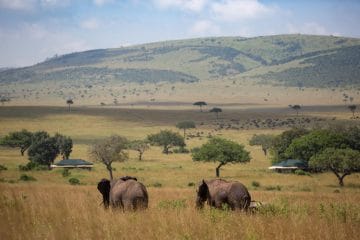
Highlights of Kenya Luxury Fly-In Safari
East Africa Kenya Nairobi Chyulu Hills Maasai Mara
From $ 10068 /USD
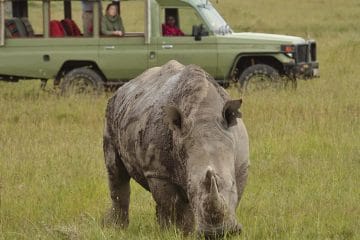
- Family Safari in Kenya
East Africa Kenya Laikipia, Lewa and Ol Pejeta Conservancy Maasai Mara
From $ 15300 /USD
What Our Guests Have to Say?
Read recent reviews from travellers who have planned and booked their trips with us, the tour operator provided a very professional, punctual and friendly service..
14 Day Cape Town, Victoria Falls and Chobe Safari Adventure Review
Brian Jane, Canada 18 Apr 2024
Megan was the best.
7 Day Cape Town & Safari Adventure Review
Calynn, Bahamas 24 Mar 2024
Great at organising our itinerary..
3 Day Kruger Shalati Safari Review
Ron, United Kingdom 29 Aug 2023
Megan is an expert- all her arrangements were perfect- she really listened....
14 Day Botswana & Victoria Falls Holiday Review
Lucy Rose, United States 13 Feb 2023
Excellent experience all-around with discover africa.
Kruger Adventure Review
Ryan L., United States 23 Feb 2019
I am glad to say all of us are very happy and....
African Holiday Review
Asit, India 07 Jun 2017
Ready to plan your tailor-made safari.

Andre Van Kets, Co-founder, Discover Africa
Free safari planning advice from destination experts
- Kenya in January
- Kenya in February
- Kenya in March
- Kenya in April
- Kenya in May
- Kenya in June
- Kenya in July
- Kenya in August
- Kenya in October
- Kenya in November
- Kenya in December
- Amboseli National Park
- Laikipia Plateau
- Masai Mara National Reserve
- Mombasa and Surrounds
- Mount Kenya and Aberdares
- Northwest Safari Circuit
- Rift Valley Lakes
- Samburu Springs and Mount Meru National Park
- Southern Safari Circuit in Kenya
- The Coastal Belt
- Tsavo East and West
- Watamu and Malinda
- Camel Safaris
- Walking safaris – short walks, 2 – 3 hours
- A Relaxed Safari Holiday in Kenya
- Adventure Holidays in Kenya
- An Active Holiday in Kenya
- Beach and Bush Safari Holidays in Kenya
- Big Five Safari Holidays in Kenya
- Birding Safari Holidays in Kenya
- Foodie Holidays in Kenya
- Kenya Honeymoon Safari
- Kenya Photographic Safari
- Malaria Free Holidays in Kenya
- Walking Safari Holidays in Kenya
- Couple Holiday in Kenya
- Solo Travelling Through Kenya
- Affordable Safari Holiday in Kenya
- Budget Safari Holiday in Kenya
- Luxury Safari Kenya
- Changing Money in Kenya
- Cultural Practices of Kenya
- Getting Around in Kenya
- Health Care in Kenya
- Highlights of Kenya
- Is Kenya Safe?
- Kenya Food and Tipping
- Kenya Visa Requirements and Fees
- Kenya vs South Africa
- Kenya vs Uganda
- Languages in Kenya
- Lodges in Kenya: The Do’s and Don’ts
- Medical Emergencies in Kenya
- Medical Insurance in Kenya
- Medical Requirements for Kenya
- Packing List for a Kenya Holiday
- Shopping in Kenya
- Travelling to Kenya
- Welcome to Kenya
- What Vaccinations do I Need for Kenya?
- Wildlife in Kenya
- Kenya Safari
Registered Members of these Organizations

USEFUL LINKS
- Safari Tours
- Accommodation
- Why Book with us?
- Safari Cost Estimator Tool
- Wildebeest Migration
- Privacy Policy
- Website Terms of Use
POPULAR COUNTRIES
- View All Countries
POPULAR DESTINATIONS
- View All Destinations
- Cape Town Holidays
- Kruger National Park
- Etosha National Park
- Chobe National Park
TRAVEL BLOGS
- Travel News Digest, 7 June: SA named friendliest country in the world, Tiffindell closes permanently, and more
- Qatar Airways adds New Africa Gateway to DRC
- Travel News Digest, May 31: Tanzanian tourism industry on the up, OR Tambo is Africa’s busiest airport, and more
- Africa Hits Full International Tourism Recovery, as Seasonality Shift
- Travel News Digest, May 24: AU Passport Call Intensifies, Fuel Price Cuts expected in June
OUR LOCATION
2nd floor, Tygervalley Chambers One, 27 Willie van Schoor Avenue, Bellville, Cape Town , 7530
- Privacy Policy
- Cookie Policy (ZA)
Explore the Splendors of Kenya in September: A Luxurious Safari and Beach Getaway.
Embark on an unparalleled adventure to Kenya in September, where experiences await. This month offers a delightful combination of dry and sunny weather with fewer crowds, making it the ideal time to immerse yourself in the marvels of a safari or indulge in the serenity of a beach vacation. Although you can travel to Kenya any time of the year, we chose September because it is usually the time of the year when the Migration reaches the further north point, Maasai Mara National Park and then they start their way back to South Serengeti so September – October is the best time to visit Maasai mara and Kenya.
Captivating Safaris
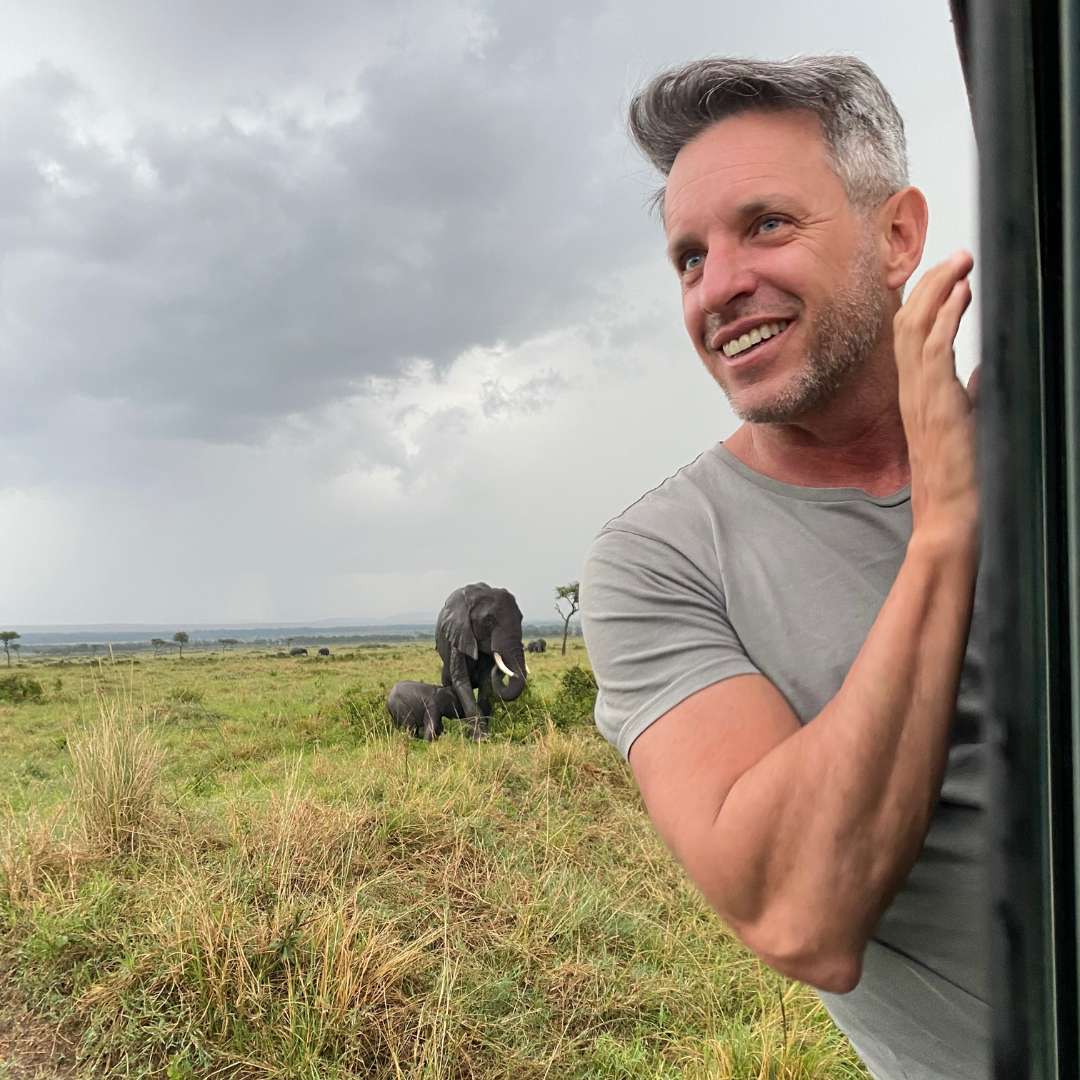
Delve into the heart of Africa’s finest safari destinations, with Kenya boasting a plethora of renowned parks, including the prestigious Masai Mara National Reserve , Tsavo National Park , Amboseli National Park , and Lake Nakuru National Park . Witness a mesmerizing array of wildlife, including majestic lions, majestic elephants, graceful giraffes, elegant zebras, and elusive leopards.
For an extraordinary safari experience, Kenya offers a selection of exceptional lodges and camps. Immerse yourself in the splendor of the surrounding landscapes while relishing breathtaking views from these lodges. Indulge in exclusive amenities like private plunge pools and personalized butler service, ensuring your every desire is catered to.
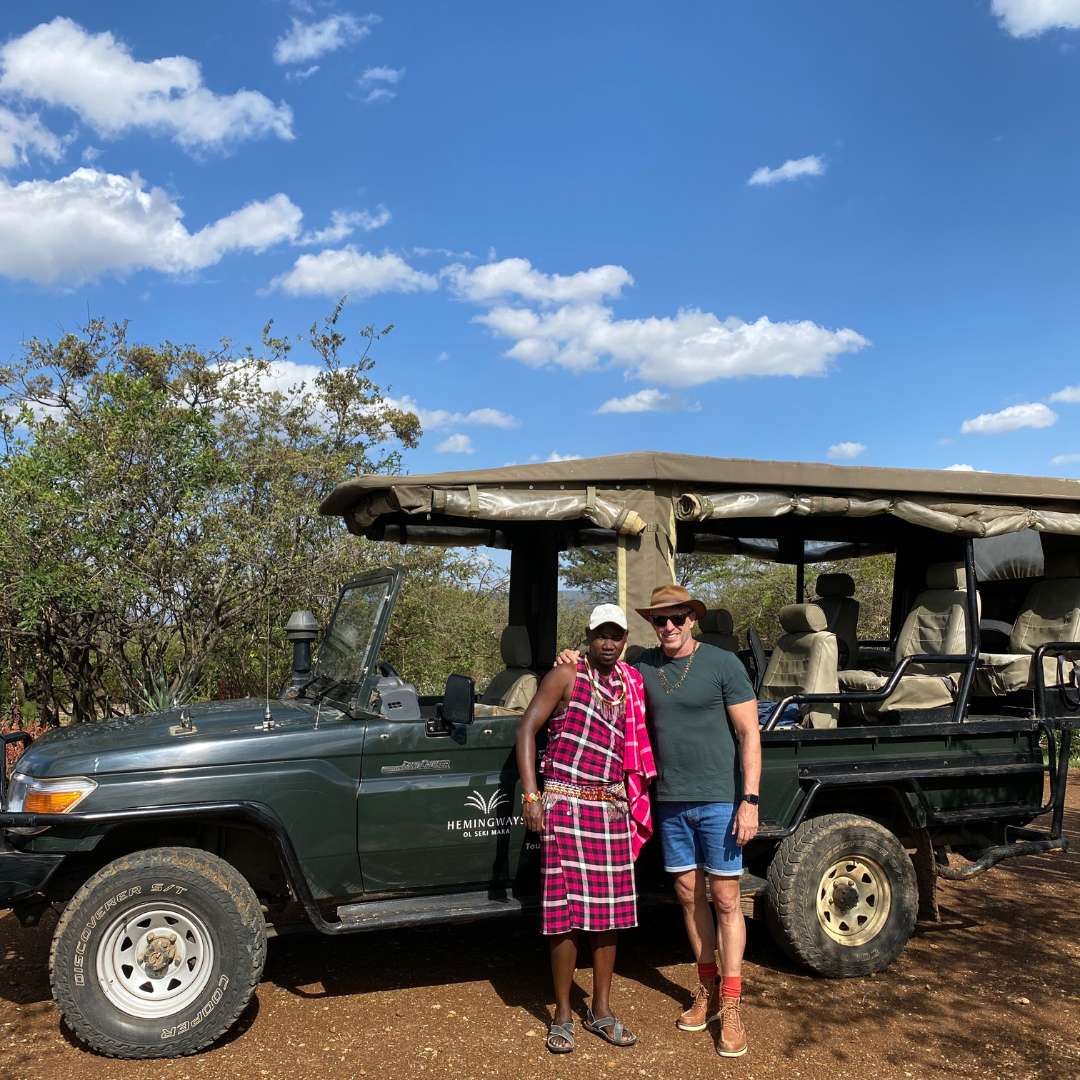
Activities Beyond Imagination
In addition to captivating safaris and serene beach vacations, Kenya has a plethora of other activities that will enchant luxury travelers like you, such as:
Beaches in Kenya
Venture to Kenya’s pristine beaches, where luxury and tranquility blend harmoniously. Diani Beach, Lamu, and Chale Island are among the most sought-after destinations for relaxation and leisure. Bask in the embrace of clear blue waters, stroll along soft white sands, and bask in the glorious African sunshine.
Hot Air Ballooning
Hot air ballooning is a truly unique and unforgettable way to experience the Masai Mara National Reserve . As you soar above the savannah, you’ll have a bird’s-eye view of the vast herds of animals that roam the reserve, including lions, elephants, zebras, and giraffes. You may even spot the occasional cheetah or leopard.
Hot air ballooning is typically offered at sunrise when the light is most magical. As you float silently above the landscape, you’ll feel a sense of peace and tranquility that is hard to find anywhere else. So don’t complain about waking up REALLY early because it’s worth it.
Game Drives
Game drives are another popular activity for luxury travelers in Kenya. These 4×4 safaris take you into the heart of the African bush, where you can see all sorts of amazing wildlife up close. You’ll likely spot lions , elephants , zebras , giraffes , and many other animals. During September and October , the Wildebeest migration is in the north of Serengeti and in the Maasai mara, so if you are really lucky you might witness a river crossing and that is Nature’s most amazing show to watch,
Game drives are typically conducted in the morning and afternoon when the animals are most active. Your guide will point out the different animals and tell you about their behavior. You may also be able to see some of the animal’s natural habitats, such as watering holes and grazing areas.
If you’re looking for a more intimate experience with nature, you can go on a bush walk. These guided walks take you through the bush, where you’ll have the chance to see animals up close and learn about their natural environment.
Bush walks are a great way to get away from the crowds and experience the African bush in a more personal way. You’ll also have the opportunity to learn about the plants and trees that grow in the bush, as well as the different types of animals that live there.
Luxurious Spa Treatments
After a long day of exploring, there’s nothing quite like a luxurious spa treatment to help you relax and rejuvenate. Kenya has some of the best spas in Africa, where you can enjoy a variety of treatments, such as massages, facials, and body wraps.
Many of Kenya’s spas use natural ingredients, such as essential oils and herbs, to create their treatments. This helps to ensure that you’ll experience a truly authentic and relaxing experience.
Private Dining
If you’re looking for a truly special dining experience, you can book a private dinner under the stars. These dinners are typically held in the bush, where you’ll be surrounded by the sounds of the African night.
You’ll enjoy a delicious meal that has been prepared with fresh, local ingredients. You may even be able to spot some animals while you’re dining.
Private dinners are a great way to celebrate a special occasion or simply enjoy a romantic evening in the bush.
These are just a few of the many luxury activities that await travelers in Kenya. Whether you’re interested in wildlife safaris, spa treatments, or private dining, you’re sure to find something to enjoy in this beautiful country.
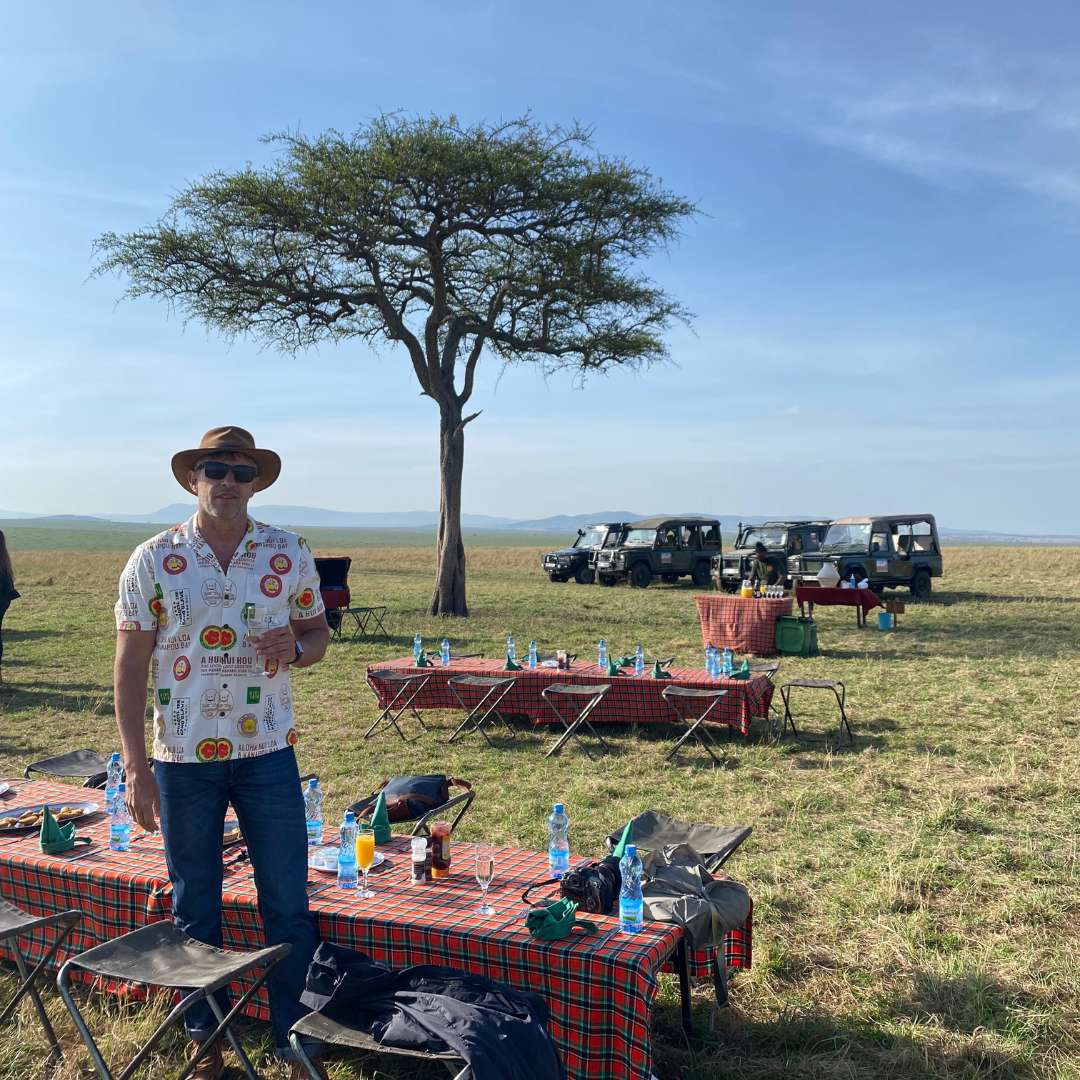
Luxury Accommodations in Kenya
Kenya boasts an array of splendid accommodations to cater to your discerning taste. Lavish lodges and camps present a range of options that exude opulence. Some of the most exceptional places for luxury travelers to stay in Kenya include:
Hemingways Nairobi
Hemingways Nairobi is an opulent hotel nestled in the heart of Nairobi. The hotel is named after Ernest Hemingway, who lived in Nairobi in the 1930s. The hotel is decorated in a colonial style, and it features a library, a bar, and a restaurant. The hotel also has a swimming pool and a spa.
Giraffe Manor
Giraffe Manor is a unique retreat in Nairobi, where a herd of Rothschild giraffes roams freely. The manor is a restored colonial home, and it features spacious rooms with private balconies. Guests can feed the giraffes from their balconies, and they can also go on guided walks through the surrounding property.
Ol Tokai is a luxurious lodge situated in the Maasai Mara National Reserve. The lodge is built on a hilltop, and it offers stunning views of the Mara River and the surrounding savannah. The lodge features spacious rooms with private balconies, and it has a swimming pool, a spa, and a library.
Angama Mara
Angama Mara is a sumptuous camp located in the Masai Mara National Reserve. The camp is built on a ridge, and it offers panoramic views of the Mara River and the surrounding savannah. The camp features spacious tents with private decks, and it has a swimming pool, a spa, and a restaurant.
Elewana Tortilis Camp
Elewana Tortilis Camp is a luxurious camp set in the Masai Mara National Reserve. The camp is built on a private concession, and it offers guests a unique opportunity to experience the Mara in a truly exclusive way. The camp features spacious tents with private decks, and it has a swimming pool, a spa, and a restaurant.
Tulia Lodge Boutique Hotel & Spa
Tulia Boutique Hotel & Spa is a lavish lodge gracing the enchanting Tsavo West National Park. The lodge is built on a private concession, and it offers guests a truly immersive experience of the African bush. The lodge features spacious suites with private balconies, and it has a swimming pool, a spa, and a restaurant.
Olonana by Sanctuary lodges
Located in the Masai Mara National Reserve , Olonana is an exclusive hideaway for families and couples. The lodge is set on a private concession and offers stunning views of the Mara River and the surrounding savannah. The lodge features spacious suites with private balconies. Guests can enjoy game drives, bush walks, and hot air balloon rides.
Bateleur by &Beyond
Situated in the Kichwa Tembo private concession , which neighbors the Masai Mara National Reserve , Bateleur is a luxurious camp that offers guests an intimate safari experience. The camp features 12 tented suites with private decks. Guests can enjoy game drives, bush walks, and cultural experiences with the Maasai people.
Kichwa Tembo, by &Beyond
Located in the Mara Triangle, Kichwa Tembo is a tented camp that offers guests a unique opportunity to experience the Masai Mara in a truly exclusive way. The camp features 12 classic tents, 20 superior tents, and 8 superior-view tents, all with private decks. Guests can enjoy game drives, bush walks, and hot air balloon rides.
These are just a few of the many luxury places to stay in Kenya. Whether you’re looking for a city hotel, a safari lodge, or a private camp, you’re sure to find something to suit your taste and budget.
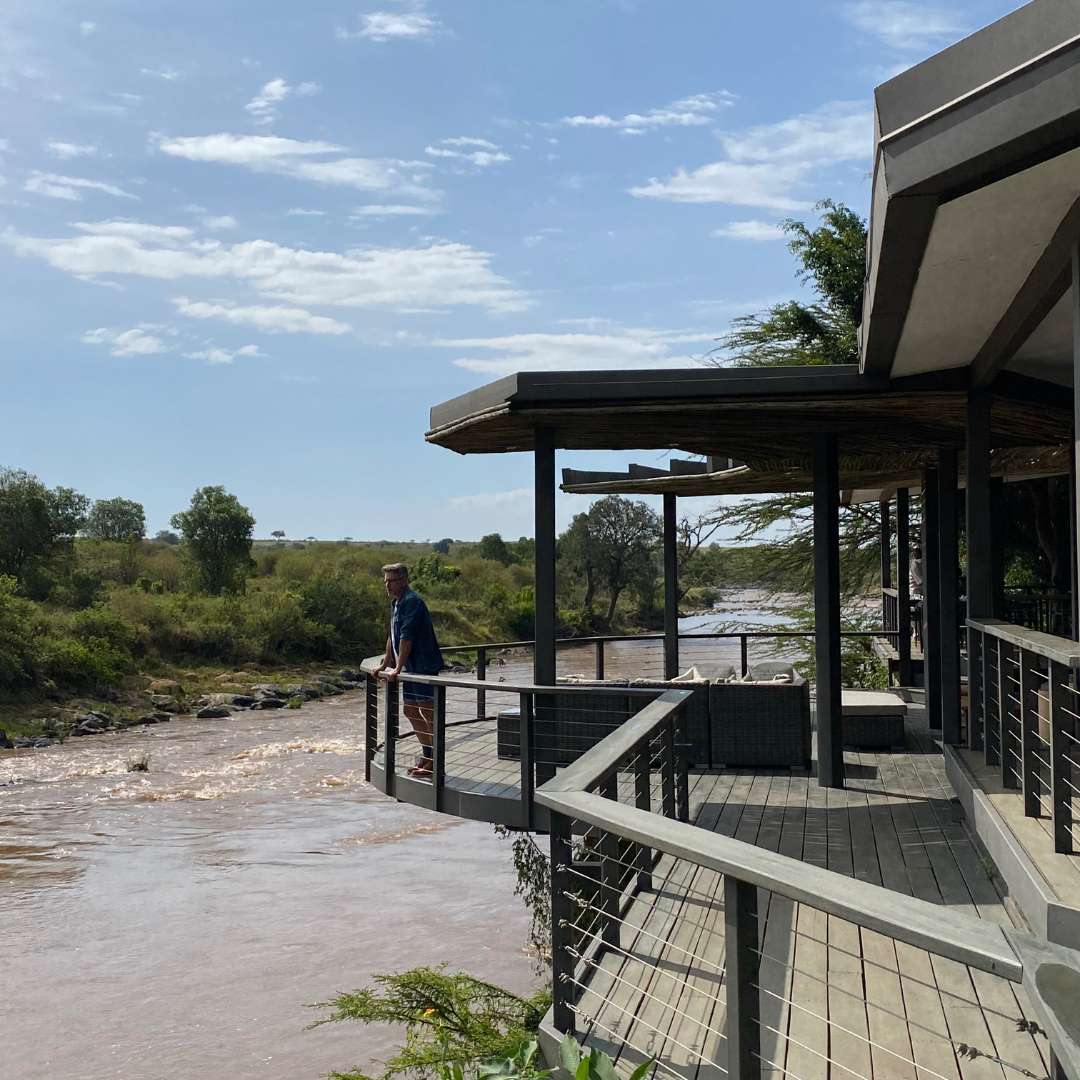
Essential Tips for Your Luxury Trip
As you plan your extraordinary journey to Kenya, remember these essential tips:
Best Time to Visit: July to September offers the finest weather conditions in Kenya, boasting dry and sunny days, it is time for the Wildebeest Migration, one of nature’s biggest shows. However, Kenya is a year-round destination, allowing you to visit at any time.
Visa Requirements: Prepare in advance and acquire a visa to enter Kenya. You can conveniently apply online or obtain one at the airport.
Currency and Language: The local currency in Kenya is the Kenyan shilling, and English is widely spoken. Familiarizing yourself with a few basic Swahili phrases adds to the enchanting cultural experience.
Safety Measures: Kenya is a safe country for travelers, but petty theft can occur. Stay vigilant, be aware of your surroundings, and take precautionary measures.
Malaria Precautions: Considering the higher malaria risk in Kenya, ensure you take the necessary malaria medication for a safe and enjoyable trip.
Prepare yourself for an unforgettable journey filled with exquisite luxury, breathtaking wildlife encounters, and serene beach moments in the captivating land of Kenya. Let the allure of Africa’s wonders leave an indelible mark on your heart, as you create cherished memories of a lifetime.

Are you ready to experience the magic of Kenya?
Schedule a free planning session with me, and together we will create a personalized itinerary that fits your interests and budget. i’ll help you choose the perfect lodge, plan your activities, and book your transportation..

What Our Clients Say
Welcome to Nanan Travel , click on one of our representatives below to start a chat.
Nanan Travel Chat Powered by WhatsApp
- Travel Guides Plan your adventure
- Destinations Our favourite places
- Tours Book a trip
- Travel Companies Independent specialists
- Travel Guides
- Destinations
- Travel Companies
The best time to visit Kenya for safari
When to go on safari in kenya.
Stuart Butler
- In this guide
- Samburu, Buffalo Springs & Shaba
- Meru National Park
- Lake Nakuru National Park
- Amboseli National Park
- Nairobi National Park
- Off the beaten track
- Kenya besides safari
- Month to month
- Climate by region
- Safari seasons
Festivals and holidays
The best time to go on safari in kenya: quick reference.
In my experience, the best times to go on safari in Kenya are the two "shoulder seasons" in June and later in September-October.
June is perhaps my overall favourite month. Everything is green after the rains, it's nice and cool with far fewer tourists than the July peak season, and the first migrant wildebeest might start to arrive from the Serengeti into the Masai Mara .
Likewise, during September-October the crowds are starting to thin out, the migrating herds should hang around until about the middle of the month and there are good opportunities to watch them cross the Mara River. Wildlife viewing in all the other parks is also excellent and on the coast the sea is calm and perfect for snorkelling and diving. Temperatures are idyllic.
On the other hand, the worst month for safari in Kenya is probably April: the height of the wet season, with many camps closed and roads washed away.
Overall best months: June & September-October
High season: July-September & Christmas-February
Low season: March-April & November
Best weather: February & September
Worst weather: April
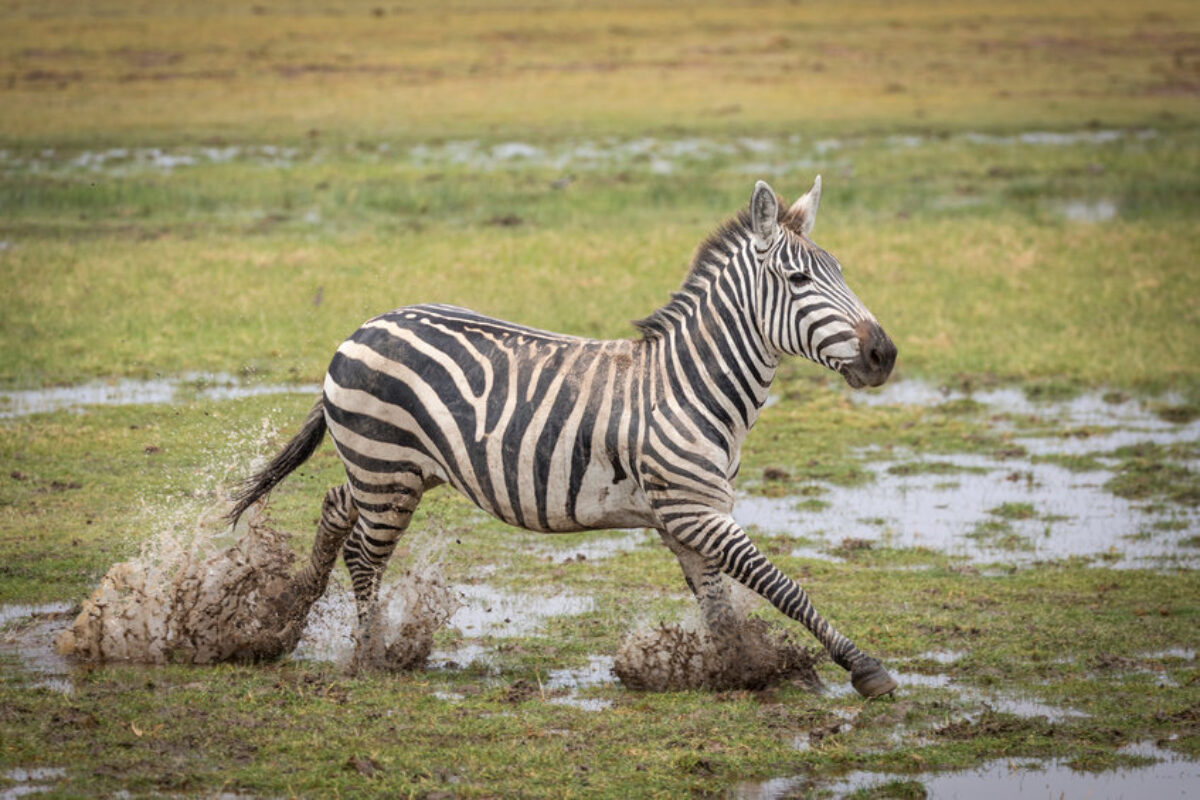
A zebra trudges through the rains Amboseli National Park
Featured Trips
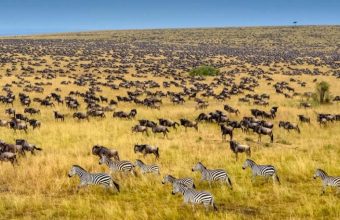
Tanzania and Kenya Safari
The greatest safari on earth.
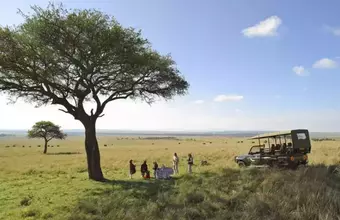
Affordable Masai Mara Safari
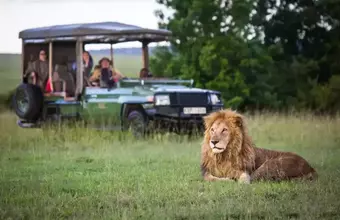
Enchanted Kenyan Safari
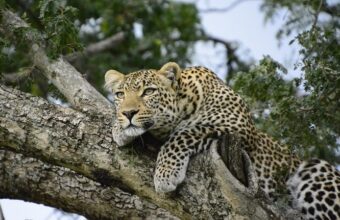
Family Memories
16 day private guided safari.
Samburu, Rhinos and Mara Safari
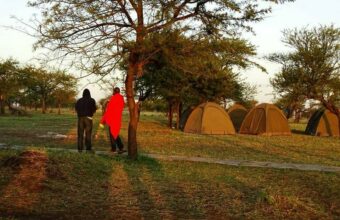
Kenya & Tanzania East African Adventure
21 day small group tour.
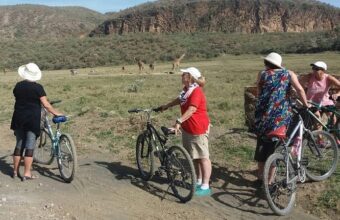
A Taste of Kenya
19 day small group tour, the best time for safari in kenya, safari in kenya month to month.
January & February
This is a hot and dry period. Animals gather around water holes and river banks which makes for a good period to be on safari. Many migratory birds are present. On Kenya’s coast, water clarity is at its best between January and February. A busy time for tourism, especially the start of January.
The start of the long rainy season and generally a bad time to go on safari. But, with few other visitors and lower prices if the rains are late arriving then this can be a good period.
The height of the wet season. Many safari camps close and roads can be washed away in flash floods. A bad time to be in Kenya.
The first part of May is similar to April, but by the tail end of the month things should be starting to dry out. The landscape will be lovely and green and although the safari camps will be starting to re-open, prices remain low. If you’re lucky with the weather then late May can be a lovely time to visit.
A superb time to be in Kenya. Everything is nice and green, the high season crowds are yet to arrive, the temperatures are pleasantly warm (but note that it can be miserable on the coast) and the wildebeest will be starting to mass on the Kenya-Tanzania border which makes for some exciting river crossing spectacles.
Although best known for the wildebeest migration, June is also the beginning of the humpback whale migration. Head to the Watamu Marine National Park to see whales — and dolphins — on boat tours between June and August.
Generally dry throughout the country with spectacular wildlife viewing in the parks and reserves. Wildebeest flood the plains of the Mara. The coast is now hot and dry. But this is also a busy and expensive time to visit.
August & September
A repeat of July, but by September there is a slight tail off in visitor numbers as school holidays end.
A superb time to visit. The wildebeest should hang around until about the middle of the month and there are good opportunities to watch them cross the Mara River. Wildlife viewing in all the other parks is also excellent and on the coast the sea is calm and perfect for snorkelling and diving. Temperatures are idyllic.
Safari prices start to drop as tourists head home and the short rains fall. Even so, this isn’t a bad time to be in the country as the rains are rarely strong enough to totally disrupt your travels. Migratory birds start to arrive.
The country is nice and green after the short rains and there are birds everywhere. The Christmas period is a busy tourist season but if you can come before that then you’ll benefit from lower prices and a tranquil safari.
Kenya climate by region
There are two things that define Kenyan weather: altitude and the monsoons. With the equator running straight through the middle of Kenya you might expect the country to be relentlessly hot. But it’s not as simple as that. Kenya is rippled in high mountains and plateaus and so altitude plays an immensely important role in Kenyan weather patterns.
In fact, it’s possible to stand in searing 40 degree heat in the northern deserts and snap a photograph of the snow and ice covering the summit of Mt Kenya!
The coastal strip is low-lying and has a hot and humid tropical climate year round (although things do cool down quite considerably between June-August). The vast northern deserts and semi-deserts (where parks such as Samburu are located) are always hot – sometimes too hot for comfort. Rain is also rare throughout the north.
The central and western parts of the country are much cooler, wetter and greener and for this reason this is where the majority of Kenyans live. The climate in Nairobi and other highland areas is one of almost eternal spring, and nights can get quite chilly.
This area is home to the Laikipia area conservancies, the Aberdares National Park and Nairobi National park among others. In the far west of the country, around Lake Victoria, the altitude is a little lower and it can be hot and humid with frequent rainfall.
In between the low and high altitude extremes is the Rift Valley. Fairly low lying and prone to drought, this is where some of the most famous national parks and wildlife conservancies (such as Tsavo and Amboseli) are located. It can be very hot here in the middle of the day but cool enough to need a fleece at night. The Masai Mara National Reserve is a bit higher and wetter and while days in the Mara are often idyllic it can be damn right cold on an early morning safari.
Kenya’s rainfall and monsoons
Aside from temperature the big thing that will impact when you visit Kenya and where you go is the rainfall.
Kenya receives two monsoon rains a year. The long rainy season runs from around March to May and the short rainy season provides the wet stuff between about late-October and mid-December.
During the long rainy season you can expect rain throughout the country on a near daily basis. Rivers can burst their banks and roads can get washed away. Most of the time the rain falls in the afternoon, but it sometimes rains all day. Nairobi can have what feels like endless days of grey, dreary drizzle. Throughout the country, even when it’s not raining it can be very cloudy. In general this is not the best time to visit Kenya.
The short rains are less predictable and may fail to materialise at all. However, as with the long rains, the rain mostly falls in the afternoon and not always everyday. There can be pleasant sunny periods in between the rain showers.
With changing climatic patterns these monsoon periods have become much less defined and in recent years there have been droughts when it should have been raining and floods when it should be bone dry.
Even though it’s not technically a wet season, the period between June and September still sees regular rainfall over large parts of the country, in particular the highland areas, the west and the Masai Mara. Temperatures are neither too hot nor too cold and everything is lovely and green. On top of that this is also when the wildebeest migration rolls through the Masai Mara. Overall this is a great time to go on safari in Kenya.
The driest and hottest time of year is January to March. On the coast and at lower altitudes it can be overwhelmingly hot. At this time of year the vegetation in many areas is dry and sunburnt but it’s a good time to be on safari – especially in a park such as Samburu or Tsavo when animals are drawn to the remaining water sources.
One of the biggest surprises visitors to Kenya get is how chilly it can get on a safari, especially those at higher altitudes such as the Maasai Mara and Laikipia where nighttime temperatures can fall below 10C. Factor in the windchill when zipping along in an open jeep at dawn and the reality is that safari-goers can become quite cold. Pack layers and be prepared.
Green, ‘shoulder’ & peak seasons
When booking a Kenyan safari you’ll likely hear the terms green season, shoulder season and peak season bandied about. But what do they all mean?
Peak season means high tourism season (July-September/October and Christmas to late February). Naturally enough this corresponds with the best times to be in Kenya, but it also means lots of other tourists, booked out lodges and high prices.
Shoulder season (roughly late-May, June and October) is the in-between time of year. For reasons of weather or wildlife sightings, the shoulder season is considered not quite as good as high season but much better than low season. There are fewer tourists and lower prices than in high season. A little secret: the advantages of travelling to Kenya in the shoulder season outweigh the negatives, and this is perhaps the best time to travel here (except for on the coast, which can be unexpectedly cold and wet).
The term ‘green season’ was perhaps coined to make potential visitors think of lush green landscapes. In reality though it means low season and it covers the months of mid-March to early May and November to early December. Kenya will be looking beautifully green at this time, but that’s because it rains – and at times it rains a lot!
Many safari camps are closed and getting around can be hard. This is generally a bad time to visit Kenya. On the plus side there are few other visitors and safari prices are as low as they get. Northern parks such as Samburu, Buffalo Springs and Shaba can actually be quite rewarding at this time.
Kenya generally observes a Christian calendar so major celebrations and holidays such as Christmas and Easter are observed countrywide. Muslim holidays such as Eid ul Fitr will be observed in most coastal and north eastern areas. Only the holy Islamic month of Ramadan will have an effect on your travels — during this time, you might find stores and hotels closed during daylight hours and at sunset for the breaking of the fast.
There are fewer music and cultural festivals than you might expect, but for a chilled out festival, try the Lamu Yoga Festival in February — five days of yoga in stress-free, car-free Shela, Lamu. Various styles of yoga are taught by instructors from all over the world and are combined with celebrations of Swahili culture such as sunset dhow cruises.
The Kenya Music Festival is held over ten days in August in Nairobi. It draws big name African and international acts.
The end of the year brings the Rusinga Cultural Festival — an extravaganza of colour, music, dance and sport to celebrate and preserve the culture of the AbaSuba people of Uganda and Kenya. Held on the last Thursday and Friday before Christmas on the islands of Rusinga, the celebrations address various social and cultural issues. The headlining event is the boat races in wooden canoes where both men and women row along the lake in clouds of song and dance — not to be missed!
When to go FAQs
Your questions, our expert answers, is february a good time to visit the masai mara, or would june-july be better what would be the differences.
February is a very good time for safari in the Masai Mara , but also very different to the experience in June and July.
It's hotter and drier in February and generally there are fewer other tourists. There will still be plenty of zebra and wildebeest around but these are the non-migrating resident herds, so they don't form the massive iconic herds that you might see on TV.
July is good because the migrant wildebeest are all normally in the Mara by then, but its also absolute peak high season so can be busy and expensive. June is perhaps my overall favourite month. Everything is green after the rains and it's nice and cool with far fewer tourists than July, but the first migrant wildebeest might start to arrive (it all depends on rains and the state of the grass).
In short, all three months are excellent but each is different so it might be best to go with whatever just suits your timings better.
I will be in Kenya in early March and am looking for a five day safari for wildlife photography and birdwatching. Where would you recommend for me noting it is the start of the rainy season?
Early March is still a bit early for the rainy season so you might just get the odd thunderstorm. If birds are your real interest and you only have five days then probably the easiest is to go down to the Masai Mara via the Rift Valley lakes of Naivasha and Elementia or Nakuru. This would give you a good range of avian habitats and species in a short space of time. Don't forget as well that Nairobi itself has some excellent birding in the various forests and parklands in and around the city. Plus of course, there's the superb Nairobi National Park where you will see a lot of wildlife and birds.
Masai Mara safaris
About the author.
Stuart is an award-winning travel journalist covering safari, trekking and conservation in Africa for the Lonely Planet, Rough Guides, BBC, Bradt Travel Guides, amongst many others. He is the author of Walking With The Maasai , a journey through some of Kenya's lesser-visited Maasai lands.
Featured tours
Other guides you might like, safari in kenya, kenya's best safari reserves and camps, south africa safari, an expert guide to safaris in south africa.
Anthony Ham
Wildebeest migration safaris, an essential guide to planning a migration safari in tanzania and kenya.
Hans Cosmas Ngoteya
Safari in zambia, an expert guide to zambia's best safari parks, camps & lodges.
Sarah Kingdom
Safari in tanzania, an expert guide to tanzania's best safari parks & camps, safari in botswana, an expert guide to botswana's best safari reserves, camps and experiences, where and how to see the big 5 on safari in africa, safari in africa, our travel writers' top africa safari picks, zimbabwe safaris, an expert guide to the best safari camps in zimbabwe, chimpanzee trekking, an expert guide to seeing chimpanzees in the wild.
Philip Briggs
Namibia safari, an expert guide to the best safaris in namibia.
Melanie van Zyl
Featured tours view all.
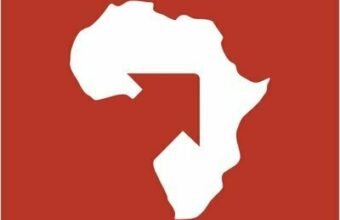
Why Horizon Guides?

Impartial travel guides
Our guides are written by the leading experts in their destinations. We never take payment for positive coverage so you can count on us for impartial travel advice.

Expert itineraries
Suggested itineraries and routes to help you scratch beneath the surface, avoid the tourist traps, and plan an authentic, responsible and enjoyable journey.

Specialist advice
Get friendly, expert travel advice and custom itineraries from some of the world's best tour operators, with no spam, pressure or commitment to book.
Our guides are 100% impartial and are written by independent, professional travel journalists. We make money by charging carefully-screened travel companies to list their business on our website. Our advertisers have no influence on our editorial content and we never accept payment for positive coverage.
Read more about how we work and what we believe in here .
- Travel guides
- Work with us
Sitemap , Privacy Copyright © 2024 Horizon Guides

- Uganda Safaris
- Kenya Safaris
- Tanzania Safaris
- Rwanda Safaris
- Multi-Country Safaris
- Safari Discounts
- Uganda Attractions
- Kenya Attractions
- Tanzania Attractions
- Rwanda Attractions
- Lodges in Uganda
- Lodges in Kenya
- Lodges in Tanzania
- Lodges in Rwanda
- Responsible Travel Tips
- Covid-19 Safe Travel
- Terms and Conditions
- Your Privacy
When to Visit Kenya for a safari. Best time & monthly breakdown
Kenya is a beautiful country in East Africa that is well known for a rich diversity of culture, wildlife and landscapes. As you think about planning your own trip, it is best to consider the question of “When to visit Kenya?”
The best time to visit Kenya largely depends on what activities you intend to engage in and what regions you plan to visit.
It is a country with a varied climate, influenced by several factors such as especially the effects of changing topography and the Indian Ocean. Generally, the country has two rainy seasons and two dry seasons each year, which can affect travel plans and wildlife viewing experiences.
The best time to visit Kenya for wildlife viewing is from January to February and from June to September, which also coincides with the Great Migration of millions of wildebeests and zebras.
These are dry season months when animals tend to gather around the remaining water sources, making them easier to find in big numbers. During these periods, the weather is generally warm and dry, with plenty of sunshine and clear skies.
If you plan to visit the coastal regions, the best time to go is during the dry season, which runs from June to September and December to March. During this period, the weather is warm and dry, with plenty of sunshine and calm seas.
If you’re interested in bird watching, the best time to visit Kenya is during the rainy seasons, particularly the long rainy season that runs from March to May. During this period, migratory birds arrive in the country, making it a great time for bird watching.
It’s important to note that weather patterns are unpredictable, and rainfall can occur even during the dry seasons. Additionally, some roads and national parks may be inaccessible during the rainy seasons due to flooding and muddy conditions.
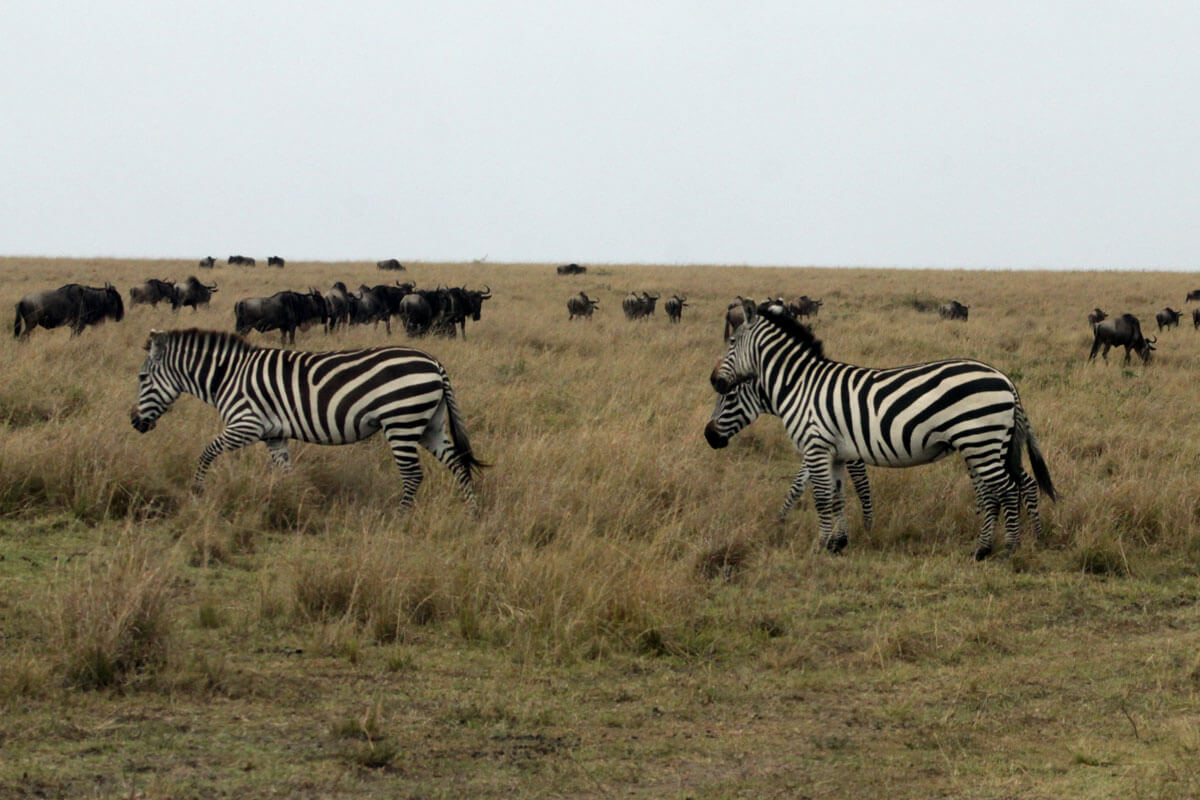
General Climate of Kenya
Kenya has a tropical climate, which is influenced by its location near the equator. The weather is generally hot and sunny throughout the year with average temperatures ranging from 22-34 degrees Celsius along the coast and 10-28 degrees Celsius in the highlands.
Kenya has two rainy seasons and two dry seasons each year. The long rainy season occurs from March to May, while the short rainy season occurs from October to December.
During these periods, heavy rainfall is experienced in most parts of the country. There are occasional showers and thunderstorms, which can be heavy at times and flooding can occur in low-lying areas.
The coastal region is usually hot and humid with temperatures ranging from 25°C to 30°C. The rest of the country experiences cooler temperatures, with temperatures ranging from 15°C to 28°C.
The dry seasons in Kenya occur from June to September and from January to February. They are characterized by minimal rainfall, low humidity, and high temperatures. During these months, the weather is generally dry and sunny with occasional rainfall in some regions with the coastal region still being the hottest.
The climate in Kenya varies depending on altitude and location, with the coastal regions being hot and humid and the highlands being cooler. The country’s diverse topography, which includes mountains, highlands, savannas, and coastal plains, also influences the climate.
It is important to note that temperatures and rainfall patterns can vary based on the region and season – therefore it is advisable to check the weather forecast before traveling to Kenya to plan accordingly.
Climate of Kenya by Month
January is a hot and dry month in Kenya.
The coastal regions experience high humidity, and temperatures can reach up to 30°C. The highlands are cooler, with temperatures ranging from 10°C to 28°C. Rainfall is scarce during this period, making it an ideal time for outdoor activities and wildlife viewing.
2. February
February is also a hot and dry month in Kenya, with temperatures similar to those of January.
The coastal regions experience high humidity, and the highlands are cooler. However, towards the end of February, the long rainy season starts in some parts of the country, particularly in the western regions.
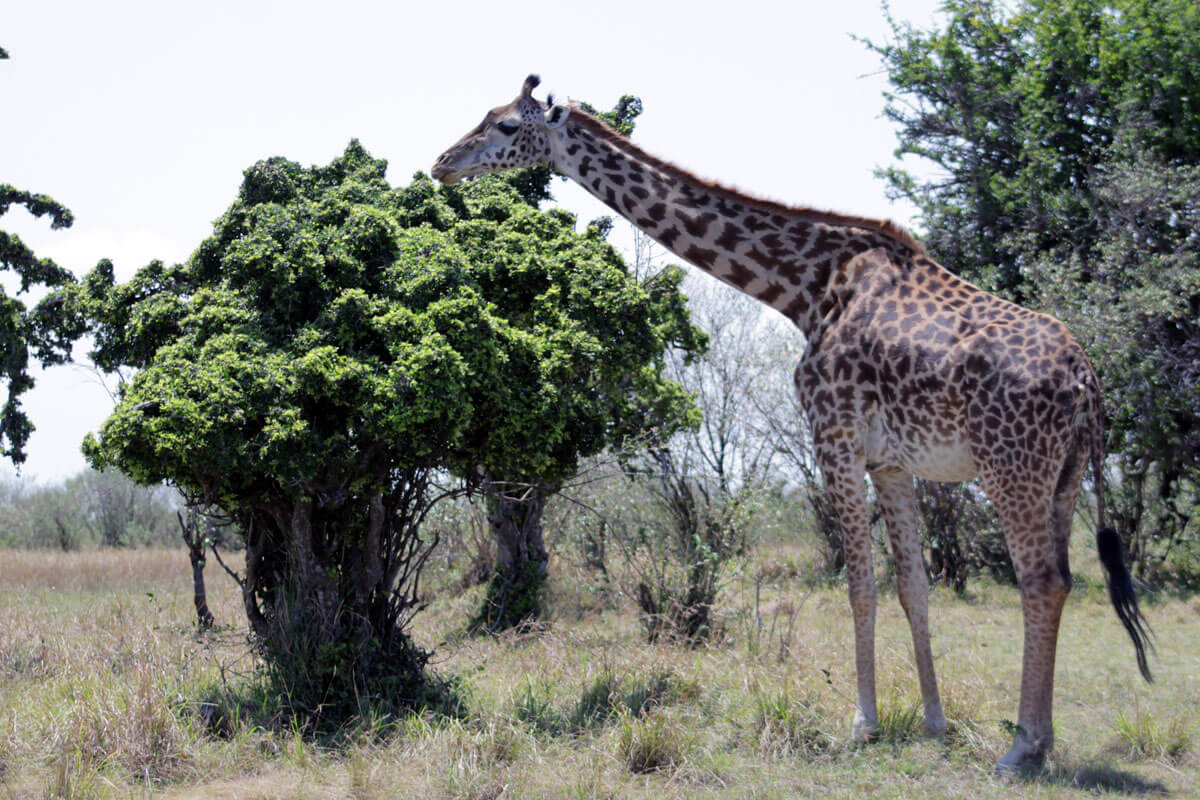
March is the end of the short dry season in Kenya.
The coastal regions continue to experience high humidity, and temperatures can reach up to 32°C. The highlands are cooler, with temperatures ranging from 10°C to 28°C. Some parts of the country may experience occasional showers towards the end of the month.
April marks the beginning of the long rainy season in Kenya. Heavy rainfall is experienced throughout the country, particularly in the highland areas.
Temperatures are cooler, with the coastal regions experiencing temperatures ranging from 23°C to 30°C, and the highlands ranging from 10°C to 26°C.
May is one of the wettest months in Kenya, with heavy rainfall experienced throughout the country.
Temperatures are cooler, with the coastal regions experiencing temperatures ranging from 23°C to 28°C, and the highlands ranging from 10°C to 24°C. The humidity is high, and it can be challenging to engage in outdoor activities during this period.
June marks the end of the long rainy season in Kenya. Heavy rainfall is still experienced in some parts of the country, particularly in the western regions.
Temperatures are cooler, with the coastal regions experiencing temperatures ranging from 22°C to 26°C, and the highlands ranging from 8°C to 22°C.
July is the beginning of the long dry season in Kenya.
Temperatures start to rise, and the coastal areas experience hot and humid conditions, with temperatures ranging from 23°C to 30°C. The highlands are relatively cooler, with temperatures ranging from 10°C to 25°C.
August is a hot and dry month in Kenya. The coastal regions experience high humidity, and temperatures can reach up to 30°C. The highlands are cooler, with temperatures ranging from 10°C to 25°C.
This period is ideal for wildlife viewing in Kenya’s national parks, as the grass is short, and animals gather around water sources.

9. September
September is also a hot and dry month in Kenya.
The coastal regions experience high humidity, and temperatures can reach up to 30°C. The highlands are cooler, with temperatures ranging from 10°C to 25°C. This period is ideal for outdoor activities and wildlife viewing.
10. October
October marks the end of the long dry season in Kenya.
Temperatures start to cool, and the coastal regions experience temperatures ranging from 23°C to 29°C, while the highlands range from 10°C to 24°C. Some parts of the country may experience occasional showers towards the end of the month.
11. November
November is the beginning of the short rainy season in Kenya.
Rainfall is experienced mainly in the coastal regions and a few areas in the highlands. Temperatures are generally warm, with the coastal regions experiencing temperatures ranging from 23°C to 29°C, and the highlands ranging from 10°C to 24°C.
12. December
December is the end of the short rainy season in Kenya. Rainfall is still experienced in some parts of the country, particularly in the coastal regions.
Temperatures are generally warm, with the coastal regions experiencing temperatures ranging from 23°C to 29°C, and the highlands ranging from 10°C to 24°C. The humidity is high during this period, making it important to dress in breathable and light clothing when engaging in outdoor activities.
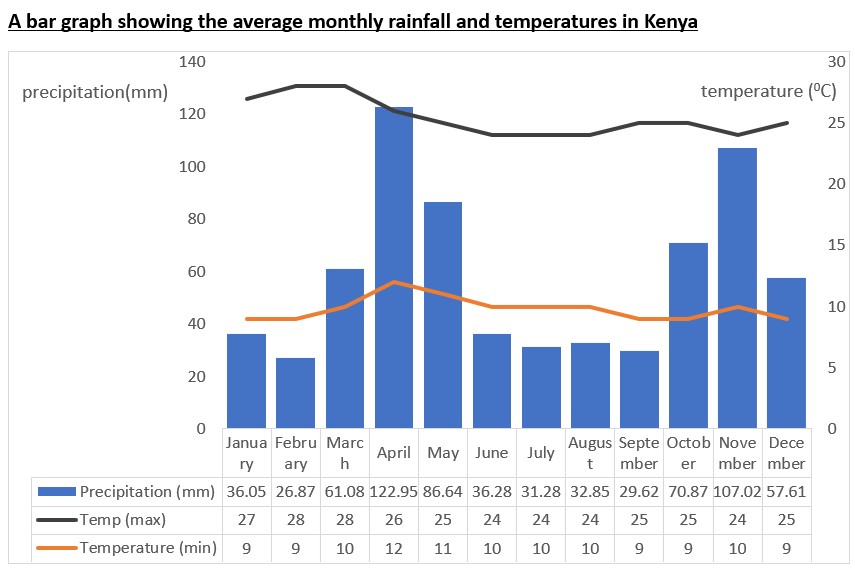
What to wear on Safari in Kenya
What you wear in Kenya will depend on the purpose of your trip and the places you plan to visit. Kenya has a warm and sunny climate, so it’s important to dress in lightweight, breathable clothing that is comfortable and appropriate for the environment.
For casual everyday wear, it is recommended to wear lightweight, breathable clothing made from natural fabrics like cotton or linen. Khaki and neutral colors are good choices as they blend in with the environment. Shorts, t-shirts, and sundresses are all appropriate options.
In case you plan to visit religious or cultural sites, it is recommended to dress modestly and avoid wearing revealing clothing. For women, it’s advisable to bring a scarf or shawl to cover your head and shoulders if needed.
If you plan to go on safari, it is recommended to wear long-sleeved shirts and pants to protect against the sun, insects, and thorny bushes. Neutral colors like khaki, beige, or olive green are good choices as they blend in with the environment. Sturdy, closed-toe shoes or hiking boots are recommended for game walks and hikes.
In general, it’s a good idea to pack a light jacket or sweater for the evenings, as temperatures can drop especially in high-altitude areas like Mount Kenya or in the evenings during the dry season.
Remember, it’s important to check the weather forecast for the areas you plan to visit, as weather patterns can vary depending on the region and time of year.
In conclusion, Kenya is a beautiful country to visit with a tropical climate that offers warm and humid conditions throughout the year. However, the best time to visit Kenya depends on your travel goals and destinations.
Whether you’re interested in wildlife, beaches, or cultural experiences, Kenya has something for everyone, and with proper planning, you can have a memorable and enjoyable trip to this beautiful country.
Related articles
- Is Kenya safe for tourists
- Kenya visa requirements for tourists
- Packing list for Kenya safari
Our Travel Deals
- All Inclusive Tour Holidays East Africa
- Birding Safaris in East Africa. Uganda, Kenya, Tanzania & Rwanda
- Cultural Encounters in Uganda & East Africa
- Destinations. Showing you East Africa’s beauty
- Game Safaris. Wildlife Viewing Experiences
- Gorilla tracking guide for your ultimate adventure
- Gorilla Tracking Safaris in Uganda & Rwanda
- Hiking & Nature Walks in Uganda & East Africa
- Aberdare National Park – Kenya
- Hell’s Gate National Park – Kenya
- Amboseli Serena Safari Lodge – Amboseli N.P
- Amboseli Sopa Lodge – Amboseli N.P
- Akagera National Park – Rwanda
- Dian Fossey Grave Site, Volcanoes N.P – Rwanda
- Bigodi Wetland Sanctuary, Kibale – Uganda
- Budongo Forest Reserve – Uganda
- Bwindi Impenetrable National Park – Uganda
- Equator in Uganda, Kayabwe. Kampala – Masaka Highway
- Jinja City & Source of the Nile – Uganda
- Kampala City. Uganda’s capital & biggest city
- Arusha National Park – Tanzania
- Gombe Stream National Park – Tanzania
- Kenya Safaris Tour Packages
- Kasubi Tombs, Kampala – Uganda
- Lake Bunyonyi, Kabale – Uganda
- Lake Mburo National Park – Uganda
- Mgahinga Gorilla National Park – Uganda
- Mount Elgon National Park – Uganda
- Murchison Falls National Park – Uganda
- Katavi National Park – Tanzania
- Lake Manyara National Park – Tanzania
- Mahale National Park – Tanzania
- Mikumi National Park – Tanzania
- Mkomazi National Park – Tanzania
- Mount Kilimanjaro National Park – Tanzania
- Kigali Genocide Memorial Centre
- Lake Kivu – Rwanda
- Masai Mara National Reserve – Kenya
- Mount Kenya National Park – Kenya
- Primate Tracking Uganda & Rwanda
- Rhino Trekkking in Uganda. Best way to see rhinos in the wild
- Rwanda Safaris Tour Packages
- Special Deals on Uganda Safaris and Trips for 2024 & 2025
- Tanzania Safaris & Tour Packages
- Uganda Safaris Holidays
- Ngorongoro Conservation Area – Tanzania
- Nyerere National Park – Tanzania
- Ruaha National Park – Tanzania
- Serengeti National Park – Tanzania
- Tarangire National Park – Tanzania
- Nyungwe National Park
- Pian Upe Wildlife Reserve – Uganda
- Queen Elizabeth National Park – Uganda
- Rwenzori Mountains National Park – Uganda
- Semuliki National Park – Uganda
- Sipi Falls, Mount Elgon – Uganda
- Ssese Islands, Lake Victoria – Uganda
- White Water Rafting and Kayaking
- Volcanoes National Park – Rwanda
- Ziwa Rhino Sanctuary – Uganda
- 7 Reasons to Visit Kenya
- Top 10 East Africa Adventure Tours
- Best Time for Gorilla Trekking
- Birdwatching Safaris & Tour Journeys in East Africa
- The Chimpanzee Habituation Experience in East Africa
- The Ease and Difficulty of Chimpanzee Tracking
- Chimpanzee Trekking in Budongo
- Uganda Experiential Tourism
- Family Safari Holiday
- Gorilla Habituation in Uganda Bwindi
- Kilimanjaro Hiking and Gorilla Trekking
- IK Cultural experience. Uganda’s smallest tribe
- Nyero Rock Paintings. Ancient rock art in Eastern Uganda.
- Is Gorilla Trekking Sustainable Tourism?
- Is gorilla Trekking Safe?
- The Big Five Safari Uganda
- Why Choose Primate World Safaris?
- Why Choose a Tailor-Made Safari?
- How To Plan for Your First Africa Safari?
- Gorilla Trekking Porters
Popular Safari Packages
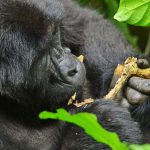
Gorilla Trekking & Masai Mara Safari – 8 Days.
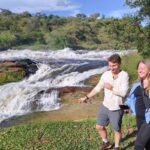
Murchison Falls Luxury Wildlife Safari – 4 Days
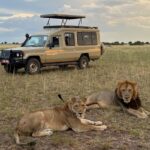
Ultimate Uganda Luxury Safari – 14 Days
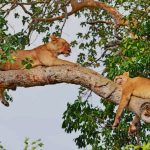
Uganda Wildlife & Activity Holiday – 15 Days
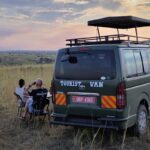
Wildlife & Primates Safari in Uganda – 9 Days
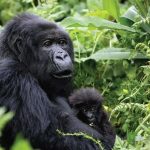
3 Days Rwanda Gorilla Trekking Safari
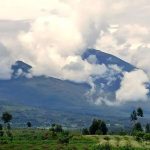
Best of Rwanda Budget Safari – 6 Days.
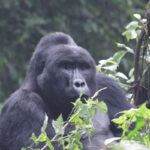
Uganda & Rwanda Activity Holiday – 8 Days
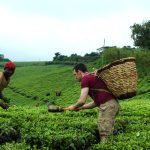
Uganda & Rwanda Wildlife Holiday – 20 Days.
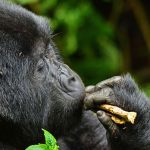
4 Days Gorilla & Chimp Tracking Safari
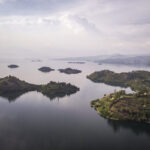
Classic Rwanda Safari – 10 Days
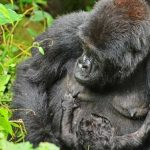
Wildlife & Gorilla Trekking Holiday – 9 Day
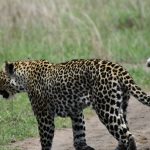
Group Adventure Holiday – 7 Days
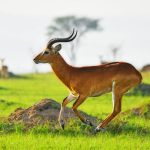
Uganda Wildlife Holiday – 8 Days
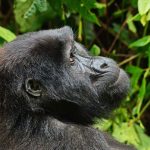
Luxury Gorilla Tracking Safari By Road – 4 Days
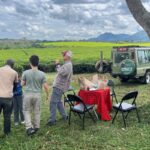
All Inclusive Uganda Family Safari – 12 Days.
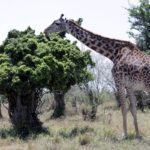
Ngorongoro Crater & Lake Manyara Safari – 4 Days
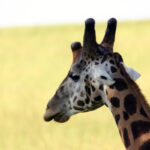
Eastern Uganda Safari Trail – 12 Days
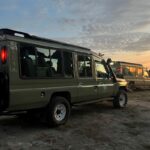
Grand East Africa Safari – 20 Days. Uganda, Kenya & Tanzania
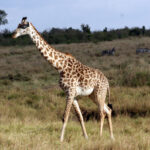
Glimpse of Kenya Wildlife Safari – 5 Days
- Central African Republic
- Democratic Republic Of Congo
- Indian Ocean
- Republic Of Congo
- South Africa
- Latin America
- Galapagos Islands
- North America
- Polar regions
- Arctic Canada
- Australasia
- Gorilla Tracking
- Grizzly Bears
- Polar Bears
- Puma Tracking
- Snow Leopards
- Blue Whales
- Bengal Tigers
- Siberian Tigers
- African Lions
- Spirit Bears
- Lowland Gorillas
- Experiences
- Jungle Holidays
- Bush and Beach Combinations
- Conservation Travel
- Natural World Heroes
- Work with Us
- Consumer Protection Overview
- Privacy Policy
- Press and Awards
- Client Reviews
- Expedition Leaders
- Specialist Leaders
- Expeditions for Change
- Journey to Natures Edge
- Country: Settings: Country:
- Currency: Currency:
- Call Us 01273 691642
- Destinations
- Gorilla Trekking
- EXPERIENCES
- In the Press
- Journey to Nature's Edge
When to visit Kenya
The best time to visit Kenya is between June and October. Due to Kenya’s equatorial setting, the country enjoys year-round warm weather and relatively low annual rainfall. However, with a range of altitudes and the country’s two rainy seasons, it is possible you will experience some variation depending on when and where you visit. The temperatures vary greatly from Nairobi to Laikipia, and from Nakuru to the coastal regions.
Kenya's best time to see wildlife coincides with the dry months of June through October. During this time, there are fantastic possibilities to see the Great Migration, when millions of wildebeests and zebras travel over the savannah, in national parks like the Maasai Mara and Amboseli. The combination of this show with the open skies and lush surroundings creates an outstanding safari experience. Additionally, viewing the Big Five and a variety of other African species in their natural habitats is perfect during the dry season.

Talk to a Kenya Destination Specialist
The best time to visit kenya.
January is generally a warm and dry month in Kenya, with hot temperatures and low humidity. The weather is ideal for outdoor activities and wildlife viewing, making it a popular time to visit the country. The average temperature in Kenya during January is around 25°C (77°F), with average highs of 29°C (84°F) and lows of 21°C (70°F). In terms of rainfall, most parts of Kenya experience little to no rain in January, making it a great time to visit for those who want to enjoy the outdoors without being hampered by wet weather. However, some areas along the coast may experience occasional brief showers. January is a great time to go on safari in Kenya, as wildlife is abundant and easily visible in the dry, open plains. It's also a great time to visit Kenya's beaches and coastal areas, as the weather is sunny and warm, and the sea is calm. It's important to note that January is peak tourist season in Kenya, so prices for accommodations and tours may be higher, and popular destinations can be crowded. It's advisable to book in advance to secure preferred accommodations and activities.
June to October in Kenya
This long dry season coincides with the Great Migration of wildebeest and zebra, a great time to visit Kenya.

November to May in Kenya
Known as the low season, this period of rain brings about beautiful green scenery, ideal for wildlife photography. This can be one of our favourite times due to the quieter parks, the green back drop and plentiful game.
Experience Kenyan Culture
There are many cultural events throughout the year that ignite the whole country. Visitors are welcome to join in with festivities but should always observe religious and private gatherings from a respectful distance, unless otherwise invited of course! Of particular note, are the Mombasa Carnival in November and the Ramadan celebrations of May/June.
Experience the Great Migration
The exact timing of this renowned natural event can never be guaranteed, as it is ultimately up to the whims of the wildebeest, but it goes without saying that this is one of the best times to visit Kenya if you are wanting impactful wildlife events! The animals' movements can be estimated to a fair degree of accuracy, however: they can arrive in the Masai Mara as early as July, but as a general rule they can be found in abundance between August and September, beginning their journey back to the Serengeti around October. This is a spectacular event where you can witness river crossings and predator-prey interactions.
Safaris & Planning

Short Big Cats & Game Safari
Enjoy a tailor-made safari to Kenya taking in the big cats and game of the Masai Mara and the private Olare Motorgori Conservancy. After catching a flight to the Masai Mara Reserve, you will be able to spot game en route during your transfer to Naibor Camp. Due to the stunning location of the camp there may even be a number of resident game wandering through the grounds as you arrive.

Luxury Kenya Safari
Take in the best of Kenya in ultimate luxury. Starting in Nairobi where you can stay in one of the most exclusive properties in town, before heading out to the Chyulu hills located between Kenyas Tsavo and Amboseli parks, take part in some unique safari experiences such as on horseback or by mountain bike and spot elephants and big cats.

Masai Mara Kenya Safari
A memorable safari, exploring the Masai Mara and Ol Pejeta Conservancy before relaxing on the Kenyan coast, surrounded by the beautiful Indian Ocean. Spend some quality time with your family within idyllic private camps.
Kenya climate guide
Additional kenya information, visit a national park.
Kenya boasts a remarkable array of national parks and reserves, each with its own unique ecosystem and wildlife population. These protected national parks are at the heart of Kenya's incredible commitment to wildlife conservation and offer some of the most spectacular and well-known safari experiences in Africa.
National parks include:
- The Maasai Mara National Reserve
- Amboseli National Park
- Tsavo National Park
- Samburu National Reserve
- Lake Nakuru National Park
- Aberdare National Park
- Meru National Park
- Mount Kenya National Park
- Nairobi National Park
- Hell's Gate National Park
Discover more on where to go in Kenya in our detailed guide.
Take a Hot Air Balloon Safari
A hot air balloon safari in Kenya offers a truly unique way to experience Kenya's wildlife and landscapes. It can provide an opportunity to see African wilderness from a new perspective, high above the savannah, and offers a serene and magical experience. Trips are typically offered in several Kenyan wildlife reserves and parks, with the Maasai Mara National Reserve being one of the most popular due to its abundant wildlife and stunning vistas. Flights typically occur as the sun because to rise over the African plains where the stillness of the early morning make for a breathtaking and peaceful experience. Witness animals in their natural habitat without disturbing them with opportunities to spot elephants, giraffe, antelopes and even big cats like lions and cheetahs.
Explore the Great Rift Valley
The Great Rift Valley is a journey through one of the most geologically significant and visually stunning regions on Earth. The massive geological trench, often referred to as the "Cradle of Mankind", stretches from the Middle East down through East Africa. Your visit to the Great Rift Valley could include wildlife viewing, hiking and trekking, exploring the many lakes and cultural encounters with the various ethnic communities.
What to expect from a trip to Kenya


Kenya Packing List: What to Wear and What Not to Bring
This post may contain affiliate links which means we may get a commission if you make a purchase at no additional cost to you. As an Amazon Associate we earn from qualifying purchases. Please read our disclosure for details.
"Each product we feature has been independently selected and reviewed by our editorial team. If you make a purchase using the links included, we may earn a commission."
Are you heading to the upcountry? Masaai Mara? Nairobi? The coast? The different parts of the country can wildly vary in a climate, so it’s important to note the exact place you’ll be staying before you start packing. Our Kenya packing list will give you everything you need to know for a trip to Kenya.

Kenya is an incredible country with breath-taking scenery, sunny beaches, and lush mountains. Being one of the best safari destinations in Africa is an added reason to visit Kenya.
The country is considerably diverse, so your Kenya packing list will depend on which part of the country you intend to visit and the type of activities you will take part in.
Before we dive into what to pack for your Kenya trip, let us talk briefly about the weather.
Weather in Kenya
One of the most critical factors you will want to consider when crafting the perfect Kenya packing list is the weather and the season at the time of your visit.
Kenya typically has a dry and rainy season. The dry season runs from mid-December to March, and the rainy season usually starts from late April through to July and early August.
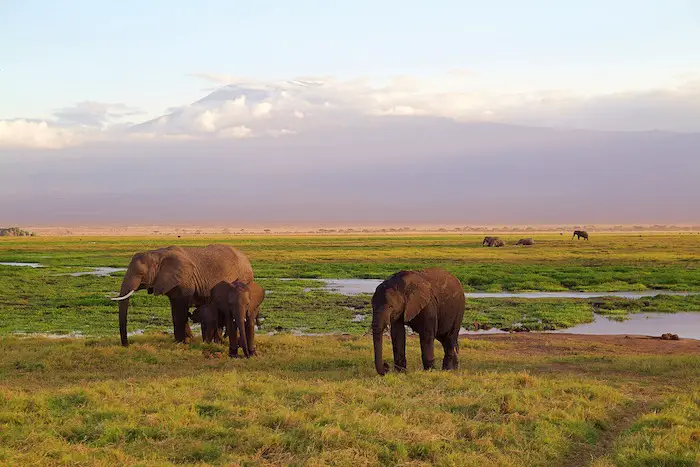
The country also experiences short rains from time to time. However, since the equator runs through the country, the climate is temperate, so even on the rainy season, it never gets too cold.
Assuming you’ll take part in different top excursions and adventures if you visit Kenya, here is a list of recommended items plus tons of good ideas.
21 Top Kenya Packing List Items
The coastal part of the country offers fantastic pearly beaches, so make sure you pack smart-casual in case an opportunity for a romantic dinner date arises.
For safari trips, you’ll need to wear loose and comfortable clothing.
Remember, avoid wearing brightly-colored clothes on a safari – one reason being you need to camouflage with the surroundings as much as possible lest you miss a chance to spot lions.
The second reason is a safari in Africa can be pretty dusty since the roads in Animal National Parks are not tarmacked.
For beach and other activities; however, your preference should guide you best.
Shirt or Blouse
If you’re headed to the Kenyan coast lightweight button-up shirt/blouse are great whether you’re strolling along the white sandy beaches or you’re out for nightlife.
Great Rift Valley and the western part of the country can get a little bit cold at night so be sure to pack a few warm clothes and cozy nightwear .
A pair or two of comfortable pants would be great for early morning excursions like morning or dusk safari walk.
Even in the dry season, the bushes will be full of morning dew enough to make your legs wet, so shorts may not be the best option.
Cargo pants , for instance, are a great alternative as they’re comfortable and can be used for adventurous activities like hiking or rock-climbing.
Hiking Shoes
Pack footwear best suited for the purpose of your trip. If you plan to have an adventure in the mountains, be sure to get a good pair of grip boots.
A smart traveler travels light, so it’s vital to pack multi-purpose clothing and footwear is no exception. Make sure your hiking boots can serve you well if you decide to go on walking safaris.
Ideally, they should be lightweight with at least ankle support, which will perfect for the bush since the terrain can be uneven and rocky. They should also be comfortable to avoid blisters.
Make sure you wear the boots a couple of times before you travel to break them in. You can get some from here .
Casual Shoes
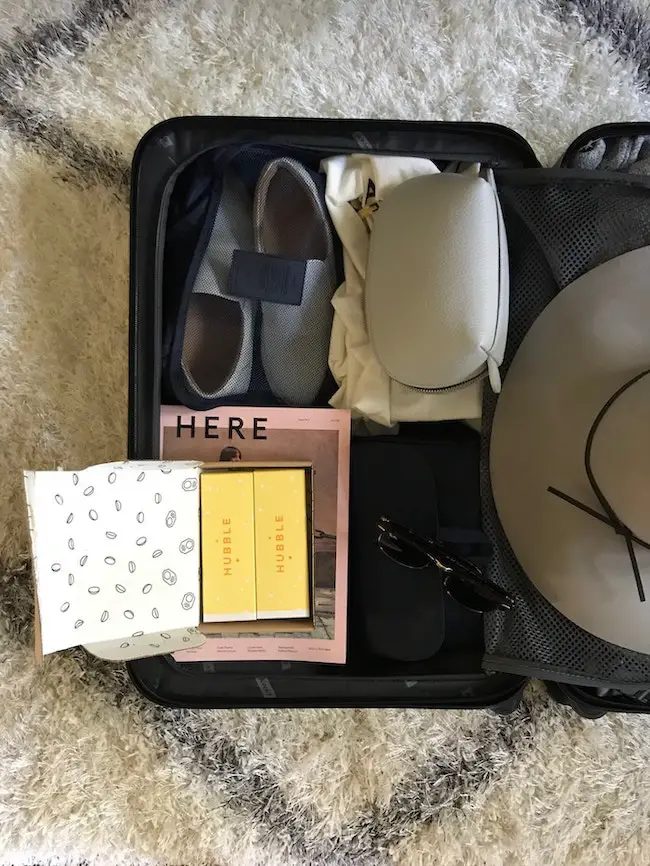
Pack a casual pair of shoes for city strolls or night dates. Sturdy sandals are fantastic, especially if you’re going to explore the charming streets of the coastal part of Kenya.
Most high-end accommodations usually provide their guests with room slippers, but it’s always a good idea to carry flip flops just in case.
Rain Jacket
A rain jacket will be necessary if you’re visiting towards the end of the rainy season. One minute could be all bright and shiny, but the next could be gloomy and raining. You can get one from here .
Kenya is blessed with a lot of sunshine, but too much of anything will definitely make you uncomfortable.
Whether you’ll be going on a safari, a hiking tour, or lying lazily on the beach, a hat is a must-pack item when visiting Kenya. You can get one here .
If you wear contact lenses and you intend to go on a safari, you may want to wear some sunglasses to prevent your eyes from drying out in the heat.
But if you do not wear contact lenses, you should plan on having sunglasses, so you do not have to squint on those sunny days.
Tech and Gear
This is an obvious item for any avid traveler, but there is a need to remind you that Kenya is full of picturesque locations. Make sure you invest in a good camera to capture those unforgettable memories.
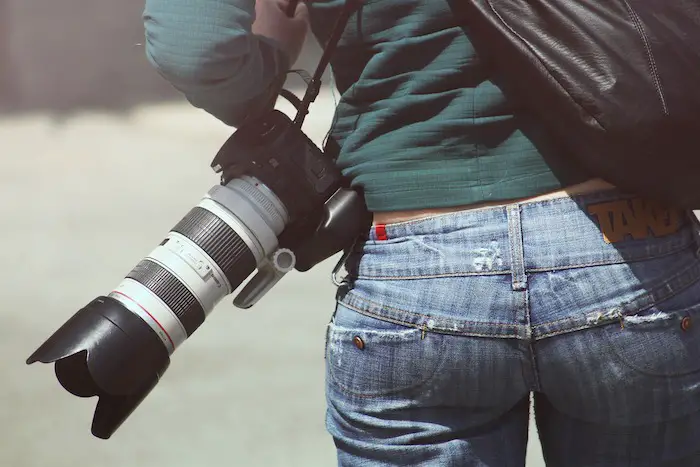
Plug Adapter
If you’re traveling from anywhere else apart from the UK, make sure you pack a plug adapter. A universal plug adaptor would be great, especially if you have any layovers in destinations that use a different type of plug.
Also, invest in proper power converters as Kenyan electric switches supply between 220 and 240 volts.
Portable Charger
This is one of the most essential gadgets as you’ll need to recharge your camera or phone if they run low on battery. Seriously, you can’t afford to miss a moment in Kenya. You can buy one here.
Binoculars
Binoculars are especially crucial for hiking and safaris, where you’ll have the Big Five to spot plus lots of birdwatching opportunities. If you’ll take part in nocturnal game drives, be sure to park night vision equipment .
Power isn’t exactly reliable in Kenya or the capital. Although many high-end hotels have a back-up in case of a blackout, you may want to have a small flashlight just in case. It also helps a lot if you’re camping.
Wet Wipes and Hand Sanitizer
Trust me, wet wipes and sanitizers are not among the most common items in Africa. Kenya is not any different, especially if you are traveling to rural areas.
These items are widely available in Nairobi and other major cities, but you may not have the extra time to run to the store.
Plan to pack a few hand sanitizer bottles/ wet pipes or both. Some parts of the country are short of running water and hand wash so you’ll need a lot of hand wipes so you can stay healthy.
Bug and Insect Repellent
The coast and the western part of the country are famous for having bugs and malaria-causing mosquitos.
Be sure to pack an ample amount of bug and mosquito repellent spray . If you are going on a safari, beware of the tsetse flies, blood-sucking insects that transmit sleeping sickness in humans. A good bug repellent should keep them away.
This is yet another safari essential and, obviously, a must-pack for a beach getaway in Kenya. You can get one here .
Documents and Details
Have your passport plus your stamped visa ready for inspection at the customs offices. You might also need to provide your itinerary as well as travel insurance papers.
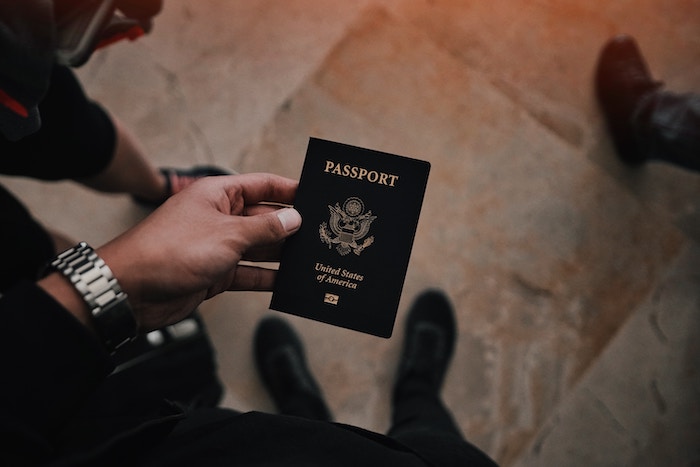
You should also have a list of contacts that can be used in case of an emergency.
Travel Insurance
It is essential to get travel insurance no matter where you are traveling to.
It’s mainly a requirement that is helpful when traveling to Kenya and East Africa in general, where treatment in an excellent health facility can be costly.
Passport Holder
You’ll need a passport holder that can withstand both dusty and wet environments.
A Swahili Phrasebook
This is not a necessity. Swahili is a fun language to learn, and locals appreciate any tourist that attempts to communicate in their native language. Even a simple ‘Hi’ or a ‘Thank you’ will earn you brownie points.
Medications and Vaccination
Before you travel, be sure to pay your doctor a visit so that they can advise on the recommended vaccines.
Most African countries require proof of Yellow Fever vaccination prior to entry. Check the CDC website to confirm if up to date information on whether or not you will need a yellow fever vaccination.
Anti-malaria drugs are essentials, especially if you’re traveling to the western or coastal parts of the country.
You will find all over-the-counter medications in the larger cities, especially in the capital but not in rural areas or in the game reserves. For this reason, it’s advisable to shop in major cities for prescribed or other drugs you might need.
First-Aid Kit
A first-aid kit is essential, particularly if you are planning to take part in adventurous excursions.
What Do People Wear in Kenya?
Women in kenya .
Kenya is one of the most modernized countries in Africa, according to the World Population Re view. So as long as you dress appropriately, you should not encounter any problems. Wearing clothes that are at least knee-length is the standard dress code.

You might be barred from entering spiritual places like temples, mosques, and churches if you are dressed inappropriately.
Ideally, if you will be visiting any religious institution, maxi dresses will be perfect. When you’re visiting malls or other public places, knee-length skirts or shorts will do.
Men in Kenya
There is no particular dress cord, although if you visit rural areas like the Maasai villages, you might see some men dressed in traditional sheets.
Feel free to dress in traditional sheets if you like, but it is not a requirement. When you’re visiting religious institutions, wear trousers and long-sleeved shirts.
Other Commonly-forgotten Items for a Trip to Kenya
Jeans Sandals Heels Headphones Aloe Vera Mosquito repellant Backpack Travel sheet Travel pillow Kindle/Kindle cover Memory card Headphones Headphone splitter GorillaPod Lightweight scarf
Vitamins/Supplements Dramamine Lip balm Contact lens solution Hairbrush/Comb Loofah glove Underpants/Bras Feminine products Toiletry bag Headlamp Umbrella Journal Small lock Swimsuit
Swimsuit cover-up Hats/Caps Jacket: Women’s & Men’s Luggage/Packing cubes Steamer Razor Immunization Records Drivers License/Photo ID Credit Card and Cash Money Belt Neck Pillow Eye Mask Water Bottle Towels
Packing List for Kenya: What Not to Bring
It’s important to note that plastic bags are not allowed in Kenya. This includes:
- Ziploc bags
- Grocery bags
- Garbage bags
- Duty-free bags
When traveling in Kenya, it’s advisable to use woven reusable bags instead.
Concluding the Kenya Packing List
The above list contains all the essential items that you’ll need on your Kenyan visit. Most of the items listed are lightweight to help you travel as light as possible.
This post helps you pack everything you need to be comfortable when you are away. But at the same time, not pack too much where it becomes a burden; this Kenya packing list provides precisely that.
You should use this packing list as a checklist to make sure you don’t leave anything behind on your getaway to Kenya.
If you plan on visiting multiple African countries on your trip, our travel guide , destinations , African national park pages will provide some inspiration. Happy Traveling!
21 Kenya Packing List Items
Tech and Gear
Shirt or Blouse Hiking Shoes Casual Shoes Rain Jacket Hat Sunglasses
Camera Plug Adapter Portable Charger Binoculars Flashlight
Wet Wipes Hand Sanitizer Insect Repellent Sunscreen Medications
Passport Travel Insurance Passport Holder Phrasebook Vaccination First-Aid Kit
Love it? Share and Pin it!

You may also enjoy:
Ultimate mozambique packing list: your mozambique travel ….
I may contradict with you on power…. Power in Kenya is reliable.. Though the article is great.. ?????❤️
Thanks, Cyprian! We appreciate you sharing your honest feedback.
xo ~ Louisa
Great Article, One day i will like to visit Kenya and have some good time in the country, I hope the have good Livescore sporting activities.
Follow Us Around the World
Our next destination.
Fez, Morocco

Best Time to Visit Kenya
Best time to visit kenya for safari, migration, beaches + worst time (month by month).
Best Time to Visit Kenya for Safari, Migration, Beaches + Worst Time month by month. Between July and September, you may experience the Great Migration of wildebeest and zebra, making it one of the prime periods to visit Kenya. This is also the dry season of the country.
There are less tourists and more opportunities to see the breathtaking verdant foliage during the wet seasons, making them ideal for vacation. The short rains in December make it an ideal time to visit Kenya , as you may observe migratory bird species, newborn animals, and more. Wet weather is only experienced during the height of the “long rains” in March, April, and May.
In July, when the Great Migration is typically in full swing in the Mara, I love going there because I can see the animals up close and personal without having to fight my way through hordes of other tourists.
Speak to a certified Kenya specialist to start planning your tailor-made vacation…
Sharon, Africa Safari & Kenya Specialist
Month-by-month guide for traveling in Kenya
Visiting kenya in january.
When summer is in full swing, it’s easy to see animals on the move, whether they’re on the ground or in the sky. Although there may be occasional showers to alleviate the scorching weather, the terrain is verdant with long grass due to the “short rains” that occur in November and December. On the coast, you’ll experience the purest seas and hottest, sunniest days of the year.
Visiting Kenya in February
You may still see a lot of wildlife, both flying and on the ground, this month. Long grass should still be carpeting the landscape from the’short rains’ that fall in November and December, and temperatures will remain hot with the occasional storm.
Visiting Kenya in March
As the ‘long rains’ approach Kenya, the weather becomes wetter, but game viewing remains good.
Visiting Kenya in April
You shouldn’t go during the “long rains” in April and May because the park trails might become mudslides and the beaches along the coast of the Indian Ocean can get hot and very wet.
Visiting Kenya in May
It is not recommended to travel during the “long rains” of April and May since the park tracks can become muddy and the beaches along the coast of the Indian Ocean can be hot and very wet.
Visiting Kenya in June
The majority of the rain has passed, while a few light showers may still occur; at higher elevations, the nights can be chilly. The lengthy dry season is almost here, and although the tall grasses can make it difficult to see wildlife, it is still a stunning time to go. When the Great Migration finally makes it to the Masai Mara , everyone starts getting excited.
Visiting Kenya in July
Conditions are pleasant for a visit at this time of year, with mild temperatures, dry but not very dusty weather, and the possibility of periodic showers. Masai Mara game viewing and travel are at their highest in the months leading up to the arrival of the first herds from Tanzania .
Visiting Kenya in August
It is one of the busiest times of year because the weather is warm and typically dry. Spectacular wildlife watching is available right now in the Masai Mara , where the Great Migration is in full swing, with thousands upon thousands of wildebeest and zebra making their way across the Mara and Talek Rivers.
Visiting Kenya in September
In most cases, the weather remains dry. Game viewing in the Mara is ongoing, and wildlife viewing in Kenya is generally top-notch.
Visiting Kenya in October
Some precipitation may be possible as the mercury gradually rises. But if you want to escape the crowds without sacrificing great game viewing possibilities, it’s a beautiful time to travel. While the migratory herds have left the Mara, the resident numbers are still exceptional. This is the best time of year to visit any of Kenya’s other popular tourist spots.
Visiting Kenya in November
The Mara, like most other tourist spots, is open for business despite the warm weather and the beginning of the brief rains. But there are a lot of closed camps in the Laikipia Plateau . Even with the darker sky, game viewing is still good, and activities carry on as usual. There are less people around, and you can usually get better prices.
Visiting Kenya in December
Depending on where you are in the country, some camps may be closed (especially in the north) or open as we approach the end of the year, which means hot weather and the possibility of rain. You can still see a lot of birds and other wildlife while the camps are open.
Wildlife spectacles abound in Kenya’s dry season
The common belief holds true in Kenya as it does in most of Sub-Saharan Africa : the best time to visit is during the long dry season, which begins in June and lasts all the way until October.
At this time, animals start congregating around the few remaining water sources, making themselves more visible. At the end of July, the Masai Mara often welcomes the wildebeest migration , which originates in the Serengeti and the Loita Hills. Hundreds of thousands of wildebeests brave the Mara and Talek rivers, despite the presence of enormous crocodiles, creating an incredible spectacle.
Late July through October is the sweet spot for a dry safari in Kenya’s coastal regions. Seasonal rains begin in late April and continue through early July, with brief downpours in late October and early November. The hottest months are typically March and April.
Beat the crowds during Kenya’s green season
Between December and May, you shouldn’t miss the green season. The wildlife is still amazing, there aren’t many tourists, and the bush becomes a verdant, verdant mess, teeming with the noises of breeding birds and flamboyant plumage.
After it rains, some places, like the Chyulu Hills , really shine. Skilled vacationers know that the shoulder and low seasons are the best times to visit since they provide a mix of reasonable prices and less tourists.
A trip to the coast of Kenya for some relaxation and rejuvenation is also highly recommended at this time. The coast of Kenya is an excellent stop on any safari because of its beautiful white sand beaches and turquoise waters, which are second to none in all of Africa. Late November through March is when it really shines.
Kenya travel guides
Kenya is a popular safari destination for good reason: the country is home to some of Africa’s most famous reserves, where safari-goers can catch a glimpse of the Big Five, and the chance to explore less-traveled regions keeps them coming back.
Learn all about the best times to visit Kenya, from where to see the Big Five to what to do during the country’s verdant season and even how to take a hot air balloon safari for an unforgettable experience, with the help of our comprehensive travel guides. Kenya is a great place for families to visit because of its abundance of family-friendly lodges and the opportunity to learn about Maasai culture . On the other hand, individuals seeking a little more luxury can choose from a variety of beach retreats and safari camps.
Inspiring Kenya Itineraries
Our goal in creating these itineraries was to provide you with some ideas for what you may see and do in Kenya by highlighting some of the best routes we’ve discovered.
Kenya Travel Advice
Am I safe to go to Kenya? If we wouldn’t go there with our own families, we certainly wouldn’t recommend it to our clients. Safe and welcoming locals will make your safari experience in Kenya one you won’t soon forget.
Places to Visit in Kenya
Millions of zebras, antelope, and wildebeests make the journey to the Masai Mara National Reserve every year, hoping to find a better life in the swaying grasslands. Predators like lions, leopards, and hyenas follow after these. It doesn’t get much better than this as far as safari locations go, and our experts have been on safari all around Kenya, so they can tailor their recommendations to your specific interests.
Things to Do in Kenya
Kenya has a reputation for offering visitors a range of gratifying experiences, making it an appealing destination for first-time safari-goers. Experience the wonder of the Great Migration firsthand, visit wildlife reserves, and go snorkeling in the warm waters of the Indian Ocean off the coast of Kenya.
Kenya in September: Wildlife, Weather, and Tips
Weather in kenya in september.

Crowds and Costs in Kenya in September
6 best things to do in kenya in september.

- The Great Wildebeest Migration: Masai Mara hosts the climax of the Great Wildebeest Migration in September. Millions of wildebeests brave the Mara River, pursued by predators like lions and crocodiles, creating a breathtaking wildlife spectacle.
- Beach Holidays: September is ideal for beach vacations along the Kenyan coast. With warm temperatures and calm seas, you can swim, snorkel, and relax on the pristine beaches of Mombasa, Malindi, and Diani Beach.
- Thrilling Wildlife Safaris: Kenya's wildlife thrives in September, making it an ideal time for safaris. Parks like Masai Mara, Amboseli, and Tsavo offer exceptional wildlife viewing opportunities, with migrating herds attracting predators for thrilling encounters.
- Conquer Mount Kenya: September is perfect for hiking Mount Kenya, Africa's second-highest peak. Mild weather and clear skies offer stunning views and less crowded trails.
- Flamingo Spectacle at Lake Nakuru: Lake Nakuru hosts thousands of flamingos in September, turning its waters pink as they feed in the shallow areas. This creates a stunning sight against the park's beautiful backdrop for photography.
- Hiking or Mountain Biking in Hell's Gate: September is a great time for hiking and biking at Hell's Gate National Park. The weather is nice and sunny, making it perfect for outdoor activities in Kenya's Rift Valley.
Festivals and Events in Kenya in September

- Nairobi International Trade Fair: Hosted by the Agricultural Society of Kenya, this event showcases agricultural, technological, and industrial innovations, fostering networking and business opportunities.
- Machakosfest: Celebrating music and culture, this festival in Machakos County features live performances, dance competitions, art exhibitions, and local food vendors.
- Saaremaa Food Festival: Held in September in Saaremaa, this annual event offers food enthusiasts competitions, fairs, and culinary activities, including Restaurant Week.
- Eid al-Fitr: Marking the end of Ramadan, this Islamic celebration in September brings Muslims together for prayers, festive meals, and gift exchanges, fostering community and gratitude.
Tips for Travelling to Kenya in September
- Pack for varied weather: September brings warm and dry days, but be ready for occasional rain, especially along the coast. Pack light clothes for hot days and waterproof gear for rain.
- Visit parks early: Head to national parks like Masai Mara and Amboseli in the morning to avoid crowds and catch wildlife when they're most active.
- Be aware of crowds: Though September has fewer tourists, popular spots like Masai Mara can still get busy. Consider quieter destinations or book accommodations away from tourist hubs.
- Monitor migration: Keep track of the Great Wildebeest Migration for thrilling wildlife sightings, especially during river crossings.
- Book early: Secure accommodations in advance, especially in popular areas like Masai Mara and coastal regions, even in the quieter September season.
This post was published by Varsha Alva
Share this post on social media Facebook Twitter
Kenya Travel Packages
Compare quotes from upto 3 travel agents for free
6 Days Kenyan Safari & Lake Adventure for Families
8-day kenyan wildlife tour: mara, amboseli & elementaita, 9 days african safari package: the great migration & cultural encounters, 10 days kenya sun and sand safari package, kenya masai mara safari package - 3 nights 4 days, kenya's 7-day wildlife and lake safari adventure, related articles.

Travel Tips
20 Intriguing Facts about Kenya
Online Visa for Kenya: A Complete Guide to Apply for E-Visa
Kenya Requirements for Entry: What You Need to Know
Kenya in December: Everything You Need to Know
Kenya in Winter: Weather, Places to Visit & Travel Tips
Kenya in July: Everything You Need to Know
Kenya in May: Travel Tips and Everything You Need to Know
Kenya in November: Everything You Need to Know
Kenya Travel Advice: Tips for a Stress-Free Trip
Is it Safe to Visit Kenya?
Kenya in January: Weather, Things to Do, & Tips
Kenya in February: A First Timer’s Guide
Kenya in March: Everything You Need To Know
Kenya in April: Weather & Travel Tips
Kenya in June: Weather, Wildlife, and Festivals
Kenya in August: Great Migration and Peak Season Safari
Kenya in October: A Guide to the Shoulder Month
Kenya Visa-Free: Your Complete Guide to Kenya eTA
Kenya Visa Requirements for Indian Citizens: Simplifying the eTA Process

Food & Drink
Food of Kenya: 20 Must-Try Kenyan Dishes

Scuba Diving in Kenya: Top Spots and Expert Tips

Wildlife & Nature
Wildlife in Kenya: A Traveller’s Guide
The Big Five in Kenya
10 Must-Visit Waterfalls in Kenya

10 Must-See Landscapes of Kenya

A Guide to Shopping in Kenya - What and Where to Buy

Best Spas in Kenya: From Cities to Safari Lodges

Airports in Kenya: A Comprehensive Guide to Navigating in Kenya

Sightseeing
Major Cities in Kenya
Best National Parks in Kenya
Comments on this post
Browse package collections, kenya package collections.
Kenya Honeymoon Packages
Africa Safari Tours & Packages
Best Wildlife Safari Kenya Packages
Kenya Safari All Inclusive Packages
Kenya Tanzania Safari Packages
Top Listed Packages
5 Days Kenya Safari Including Mount Kenya Climbing
Kenya and Tanzania: 7 Nights 8 Days Tour Package
Best Kenya Safari Tour - White Rhinos Adventure
Browse Hotel Collections
By hotel type.
5 Star Hotels in Kenya
Best Resorts in Kenya
Best Hotels in Kenya
Beach Resorts in Kenya
Safari Lodges in Kenya
Luxury Hotels in Kenya
Top Places in Kenya

Get the best offers on Travel Packages
Compare package quotes from top travel agents
Compare upto 3 quotes for free
- India (+91)
*Final prices will be shared by our partner agents based on your requirements.
Log in to your account
Welcome to holidify.
Forget Password?
Share this page
+254-753-029-209 [email protected] +254-759-588-041
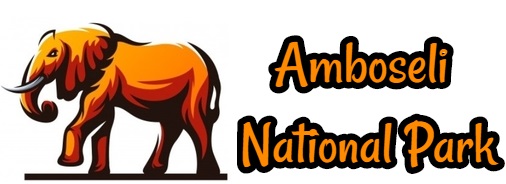
Kenya in September
Kenya in September : In September, you can expect bright skies and mild weather in Kenya. The arid winter season is in the midst of the month. The savannas are teeming with migratory herds during this time of year, when Kenyan wildlife is at its most active. It’s the ideal warm weather to laze around on the Indian Ocean beaches or go hiking in the highlands inside the country. September in Kenya can be a bit pricey, but the opportunity to see the spectacular Maasai Mara wildebeest migrations is well worth the extra money that makes your safari the most wonderful one.
Weather in Kenya in September.
In September, the snow-capped Mount Kenya frequently experiences below-freezing temperatures. September weather in Kenya varies greatly depending on your location within the nation. You may anticipate daily highs of 30°C and lows of 25°C in Mombasa, which is located near the coast of the Indian Ocean. Nairobi experiences three days of rain a month with temperatures that range from 13 to 24 degrees Celsius.
In Maasai Mara National Reserve, located further inland, daytime highs of up to 27°C are common, with chilly evenings. The temperature in the early morning hours may drop as low as 12°C. The summit of Mount Kenya is permanently covered in snow, and September temperatures frequently drop below zero.
Why visit Kenya in September.
In September, a hatchling green turtle in Kenya makes its way down a beach.
For the first time, a green sea turtle hatchling on Kenya’s Lamu Island makes its way into the Arabian Sea.
African flamingos that are standing in still water in Kenya can be spotted in September.
The Lesser Flamingo found in Kenya is the shortest of the five species in the world.
If you want to experience Kenya’s renowned gorgeous wildlife, September is the ideal time to come. This is the time of year when animals are most active and the undergrowth is short. This month is a great time to visit Nairobi, the capital of Kenya, because of the mild daytime temperatures. Further justifications for travelling to Kenya in September are as follows:
September is the ideal month to go on a safari in Kenya : it’s wild, wild land. The Maasai Mara’s great migrations are already underway, and witnessing the wildebeest crossing the Mara River is a breathtaking safari experience. September is also a better month to see the Big Five: lions, rhinos, elephants, buffalos, and leopards.
Mombasa and Lamu: Kenya’s oldest city, Mombasa is located on the Indian Ocean and still has a lot of the character of its ancient Islamic community. There will be a lot of local tourists on the beaches in Mombasa and the neighboring Malindi in September. Travel north to the islands of the Lamu Archipelago for a more sedate beach vacation.
Trek the equatorial highlands: The cool September weather is perfect for multi-day treks in the highlands of Mount Kenya (5,199m). Remember that many of the rivers in the area are susceptible to flash flooding during sporadic rains.
Beautiful flamingos: Millions of flamingos live in Kenya’s west around Lake Nakuru, one of several alkaline lakes. The birds are at their most stunning in September, and the low hills surrounding the lake provide an easy way to watch them because of the sparse vegetation.

Where to go and what to do in Kenya during September.
In August, visitors to Kenya can relish an open-roof vehicle safari and feel the excitement of the African Savannah.
To get up close and personal with Kenya’s wild animals, September is the ideal time to visit Nairobi National Park and catch a glimpse of some of them. Local safari operators provide day tours to the park with a hotel pickup service.
Nairobi has some amazing museums that you can visit to take a break from the September sun. Among the city’s most visited attractions are the Banana Hill Art Gallery and the Nairobi National Museum. Looking for genuine Maasai items in Nairobi’s street markets can be a fascinating safari experience.
Many of the best safari attractions in Kenya see large numbers of visitors in September. While the masses swarm to the Maasai Mara’s savanna grasslands and the beaches along the Indian Ocean, you may take an off-the-beaten-path trip to explore some of Kenya’s less well-known wildlife parks. Discover the lion-loving Tsavo National Park, and the stunning Marsabit Reserve, which is home to many elephants. Amboseli National Park is another safari destination where you can go to see wildlife and take in breathtaking views of Mount Kilimanjaro.


- Where to Go on an African Safari in September
- Africa , Travel Tips
- Lauren Coetzee
- No Comments
- September 20, 2022
Destinations for an African safari in September include Kenya , Tanzania , South Africa , Botswana, and Namibia . It’s the end of the dry season, and wildlife viewing in East and Southern Africa is generally excellent. Temperatures steadily rise in September, and many safari destinations across the continent approach their peak season during this time. Between June and October, wherever you go in Africa, you’ll be rewarded with spectacular game viewing.
South Africa Safari in September

The Garden Route is famous for its stunning beaches, indigenous forests, and charming seaside villages. Private game reserves in the Eastern Cape are teeming with elephants, lions, and kudu amid fields of spring flowers and mountainous backdrops. The Eastern Cape is malaria-free and a fantastic option for a September family safari. Between July and October, southern right whales breed in the waters of South Africa’s southern Cape. The best time to see them is from August to September in Hermanus. The ‘whale-crier’ wanders along the town’s waterfront during this time to announce their comings and goings. The number of whales seen at close quarters from the cliff paths is astounding. Safari-goers can plan their trip to coincide with the annual whale festival to take part in the week-long celebration of these incredible creatures.

After several months of drought, the Katuma River in Tanzania is reduced to a narrow stream, and wildlife, which is normally dispersed throughout the reserve, congregates on the floodplains, making September a special time to visit Katavi National Park . The number of hippos contending for space in the remaining pools is most impressive. The stagnant water is thick with mud, and bulls fight for their territories, resulting in dramatic interactions. Crocodiles crowd in with the hippos, but as the temperature rises, they dig caves on the riverbank to provide cool shelter.
The abundance of wildlife during the dry season is mirrored at Ruaha National Park , which has Tanzania’s largest elephant herds, all of the big cats, rare wild dogs, and nearly 500 recorded bird species. Selous Game Reserve is another excellent place to visit during a safari in September.
Kenya Safari in September

Depending on the rains, the Masai Mara in Kenya is the best place to see the world-famous wildebeest migration when on safari in September. Many of the large herds have crossed the Mara River, which separates the Serengeti and Masai Mara. A river crossing is still possible in September, but safari-goers are better off being on the Kenyan side during this period. It’s incredible to see thousands of wildebeest scrambling across a crocodile-infested river. Following the crossings, the wildebeest and their accompanying zebras and gazelles congregate to resume their journey north. Predators, predictably, follow suit — and this is where the action takes place.

The dry winter months of May to October are widely regarded as the best time to visit Namibia for game viewing, particularly in the country’s flagship Etosha National Park . The skies are clear, the risk of malaria is low, and massive herds of game gather around the season’s last remaining water sources.

Between May and October, floodwaters cause the Okavango Delta to swell to three times its usual size. Temperatures are mild, and there is an abundance of wildlife to be seen, including elephants, buffalo, cheetahs, leopards, white and black rhinos, African wild dogs, and lions. The Okavango Delta is regarded as Africa’s Eden and one of the continent’s last true wildernesses. A safari in September provides incredible game viewing in one of Mother Nature’s true masterpieces.
- #Best time to go on a safari
- #Go to Africa
- #Safari in September
- #Safari Parks
- #safari tips
- #When to go
- #Where to go on a safari

The Best Time To Visit Kenya For Safari - Low, High, Peak, & Festive Seasons

What is the best time to visit Kenya? The best time for safari in Kenya is during the great migration season that occurs between July and October. The great migration involves the movement of over 1.2 million wildebeest from Serengeti National Park to Kenya’s Masai Mara National Park.
The arrival of the migratory herds corresponds with the best weather along the Kenya coastal strip. Starting July to Early December, it is possible to have a spectacular Kenya safari and beach holiday Combo.
Other than that, Kenya is an year round safari destination with good game viewing all year long. Note that June to October is the high tourism season in Kenya. Visting Kenya at this time requires advance planning – minimum 3 months advance booking.
Contact Us to Start Planning Your Kenya Safari
You can Contact Us via phone or WhatsApp at +254-704-532-105 to find out more about visiting Kenya or to start planning your Kenya safari holiday.
You can also reach us via email at [email protected] , [email protected] or even fill out our “ Book a Safari Form .”
We are the local experts of Kenya travel, and we promise to plan the perfect itinerary for you.
Our Frequently Booked Kenya Safari All-Year-Round with Pricing
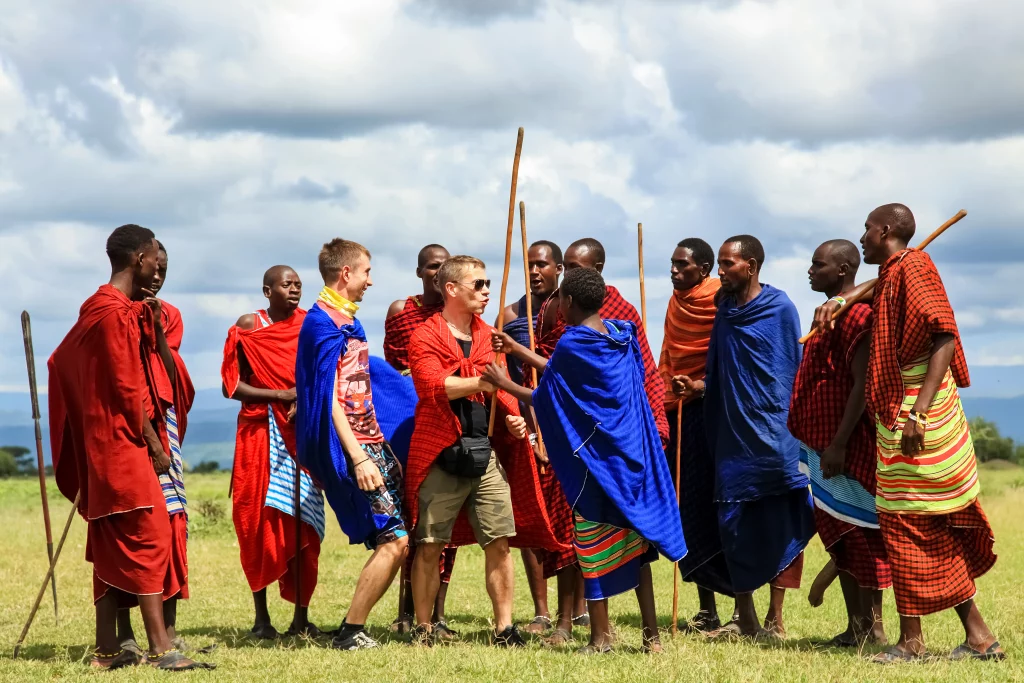
The Classic, 3-Day, 2-Night Masai Mara Safari
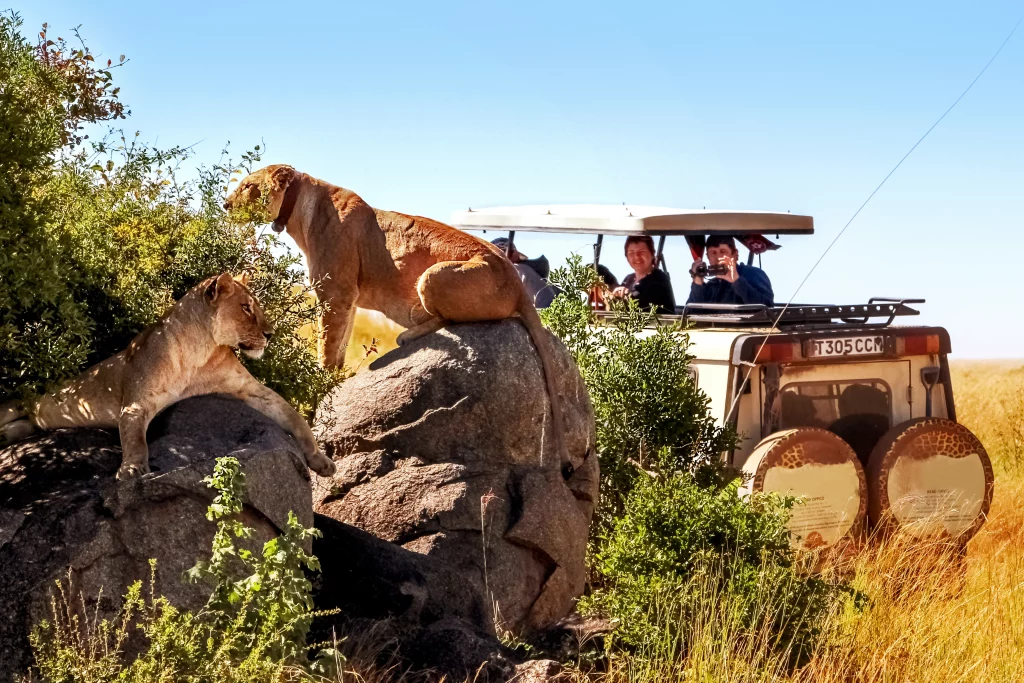
The Best, 4-Day, 3-Night Masai Mara Safari
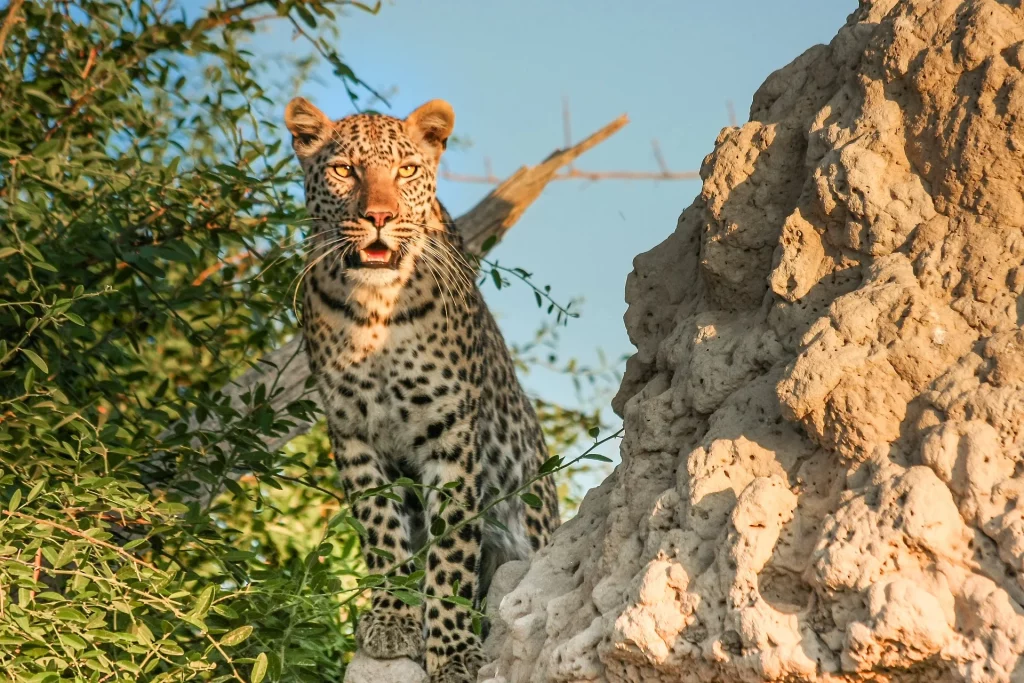
The Budget, 3-Day, 2-Night Jambo Masai Mara Safari
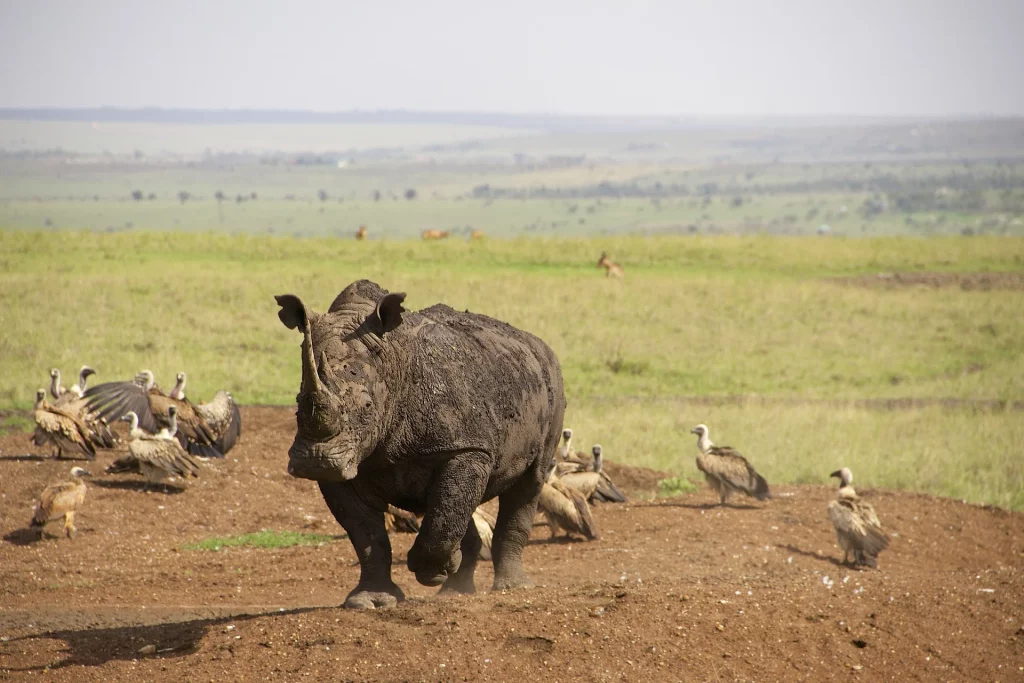
The Luxury, 4-Day, 3-Night Basecamp Masai Mara Safari
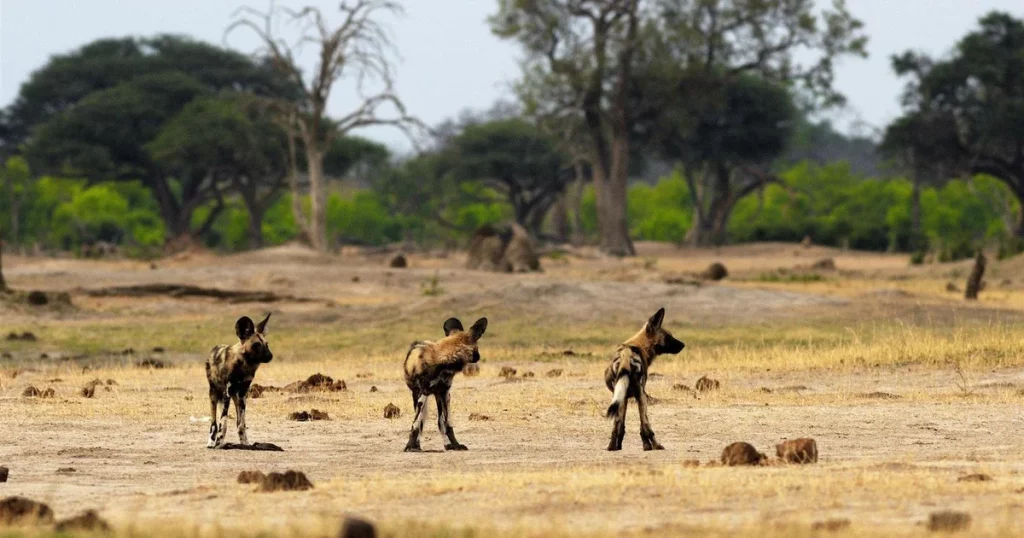
The Perfect, 4-Day, 3-Night Keekorok Lodge Safari
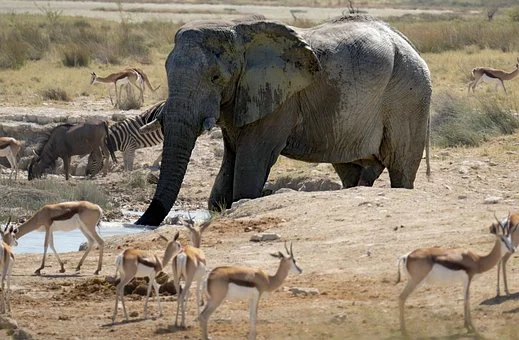
The Adventures, 4-Day, 3-Night Masai Mara Luxury Family Safari
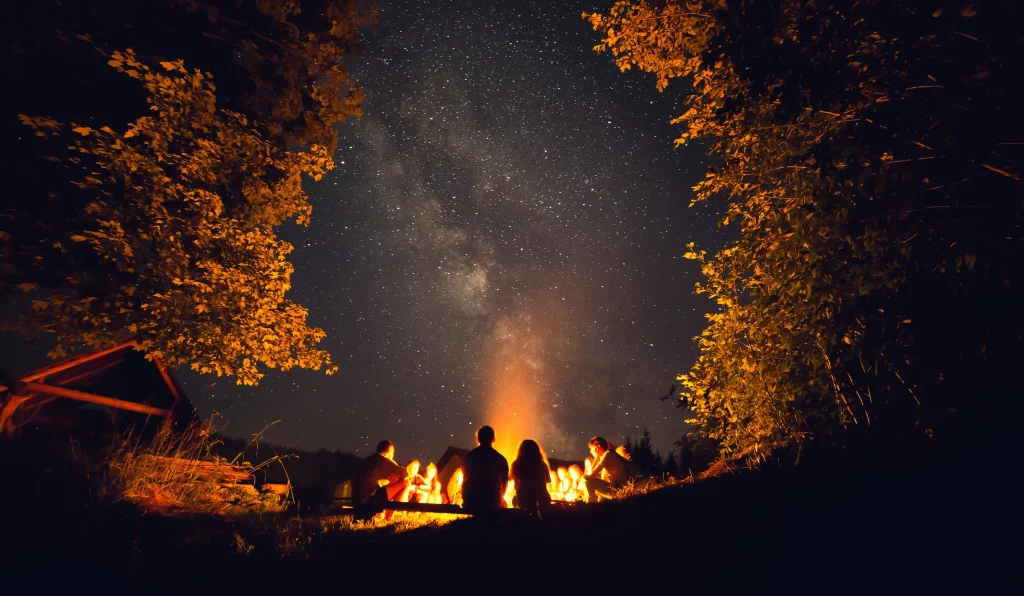
The Magnificent 8-Day, 7-Night Family Safari to Kenya
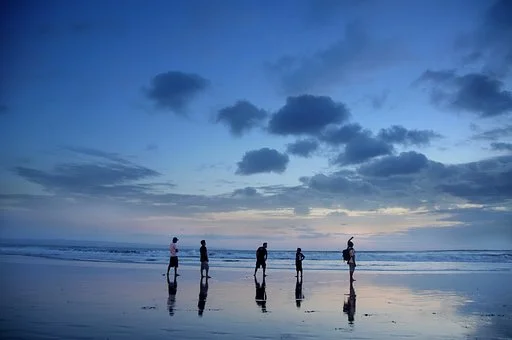
The Classic, 10-Day, 9-Night Family Safari in Kenya
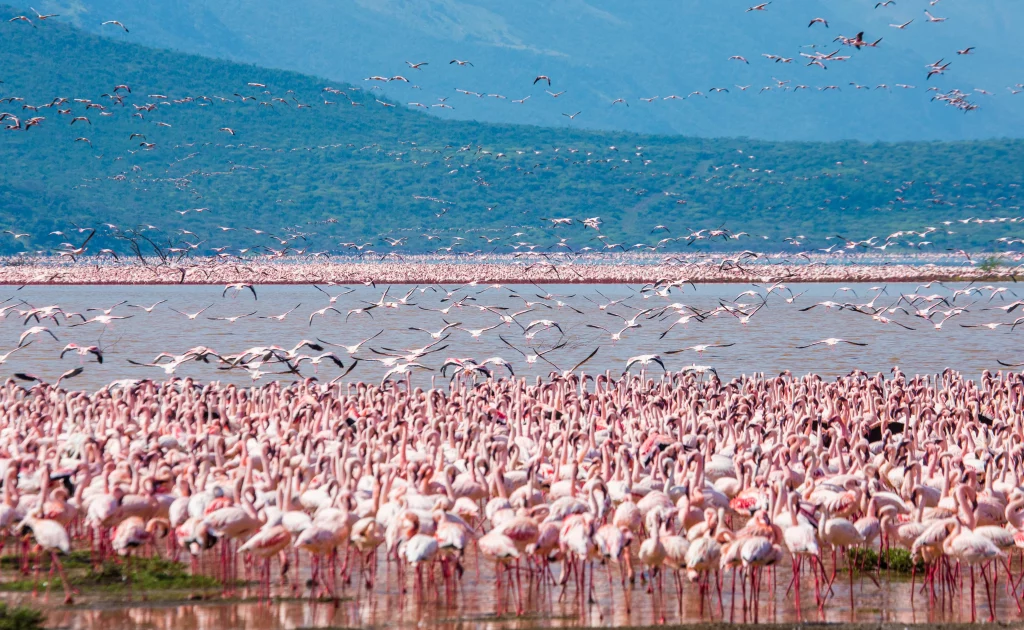
The Magical, 4-Day, 3-Night L. Nakuru & Masai Mara Safari
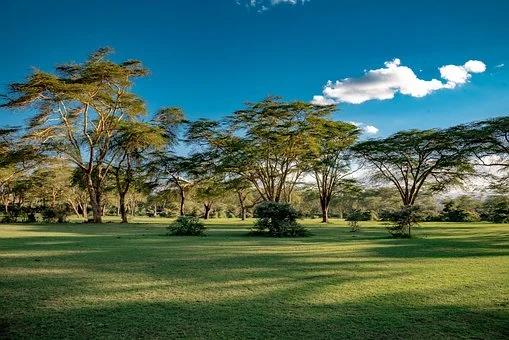
The Luxury, 5-Day, 4-Night L. Naivasha, L. Nakuru, & Masai Mara Safari
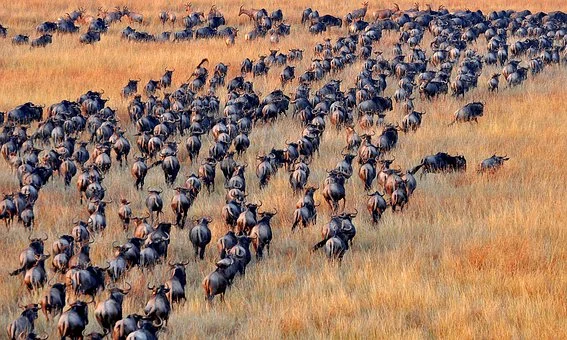
The Super, 5-Day, 4-Night Nairobi & Masai Mara Safari

The Magical, 6-Day, 5-Night Amboseli, L. Naivasha, & Masai Mara Safari
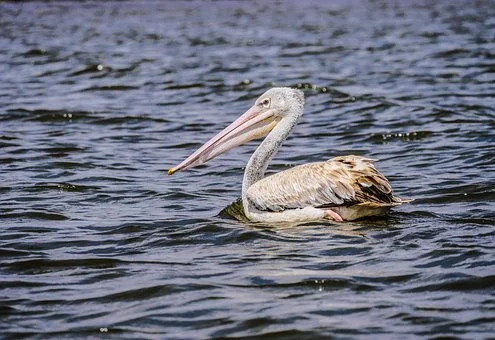
The Adventures. 7-Day, 6-Night Kenya Wildlife Adventure
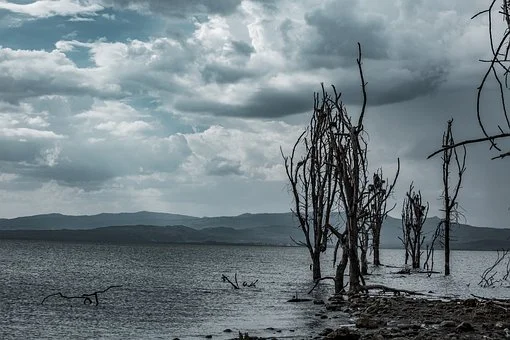
The Magnificent, 7-Day, 6-Day Kenya Wildlife Safari
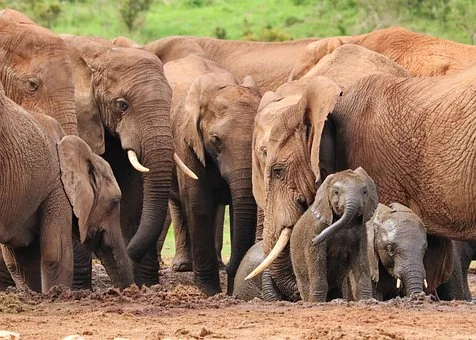
The Top, 8-Day, 7-Night Kenya Wildlife Safari
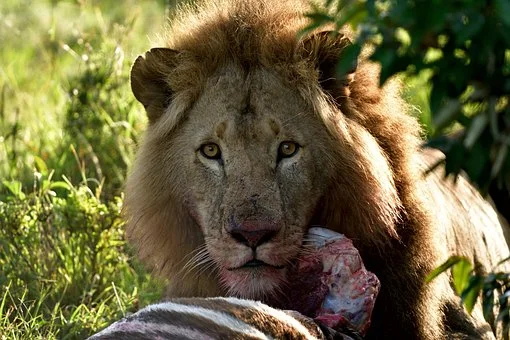
The Memorable, 5-Day, 4-Night Masai Mara Honeymoon Experience
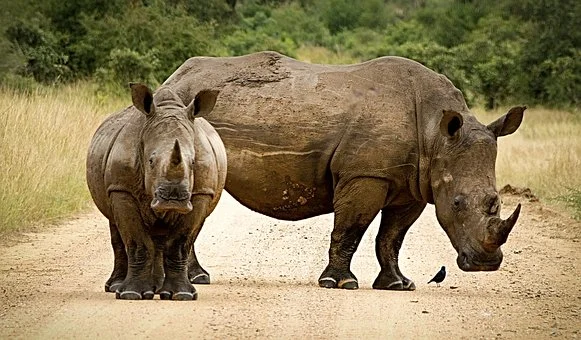
The Magical, 7-Day, 6-Night Honeymoon Safari to Kenya
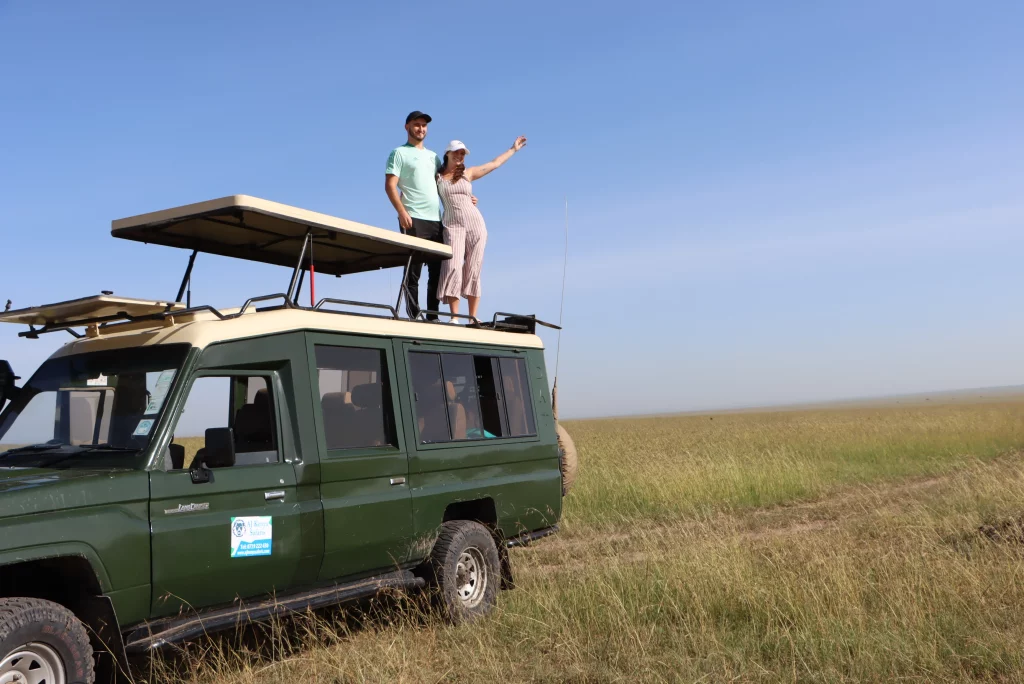
The Luxury, 8-Day, 7-Night Honeymoon Experience in Kenya
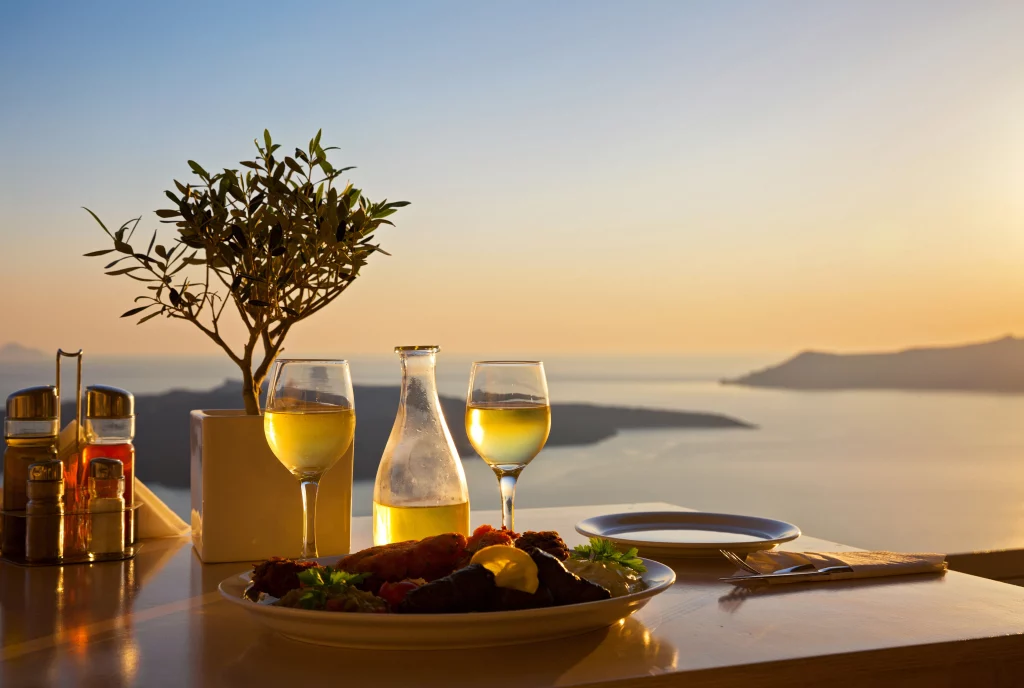
The Romantic, 14-Day, 13-Night Kenya Honeymoon Safari
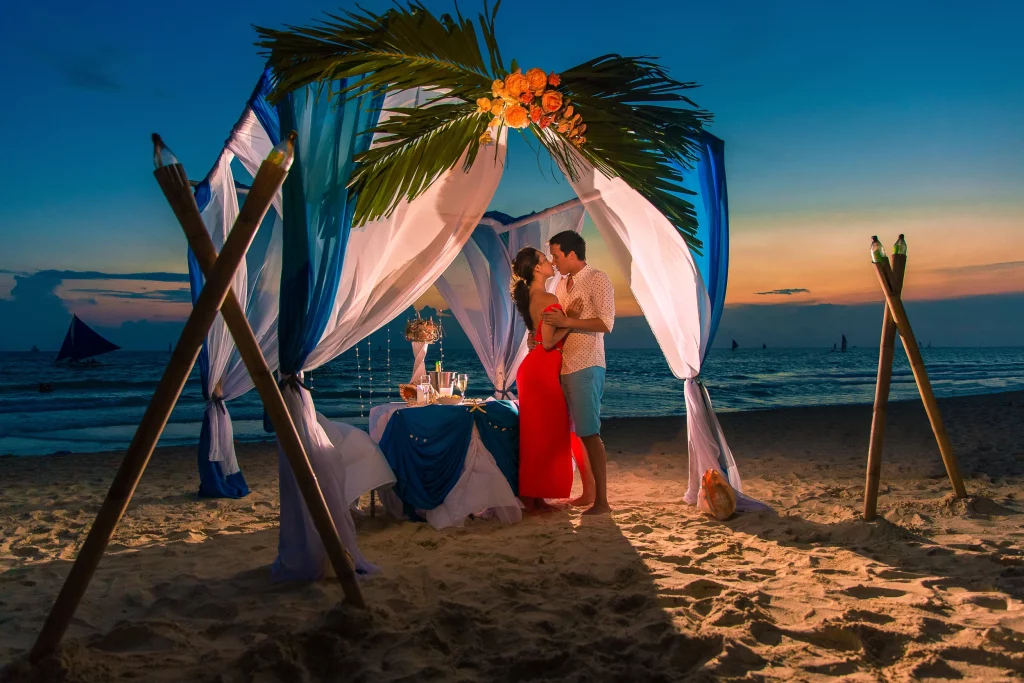
The Lovely, 14-Day, 13-Night Honeymoon Experience in Kenya
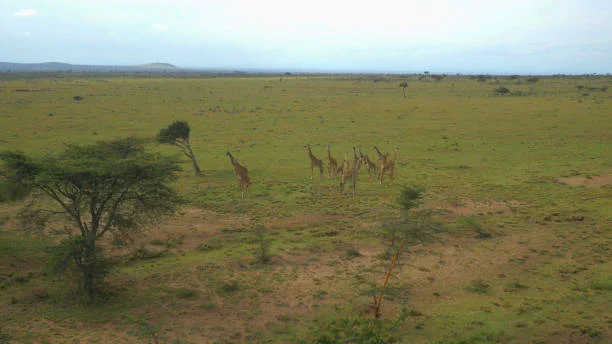
The Magical, 8-Day, 7-Night Helicopter and Wildlife Tour in Kenya
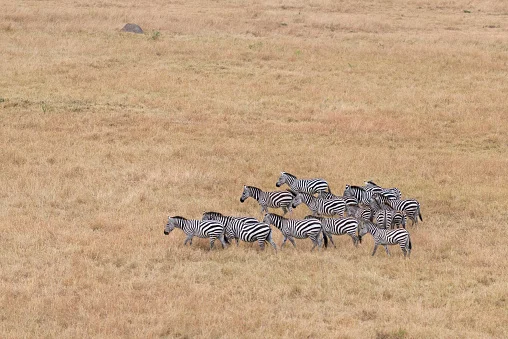
The Classic, 9-Day, 8-Night Helicopter & Wildlife Tour in Kenya
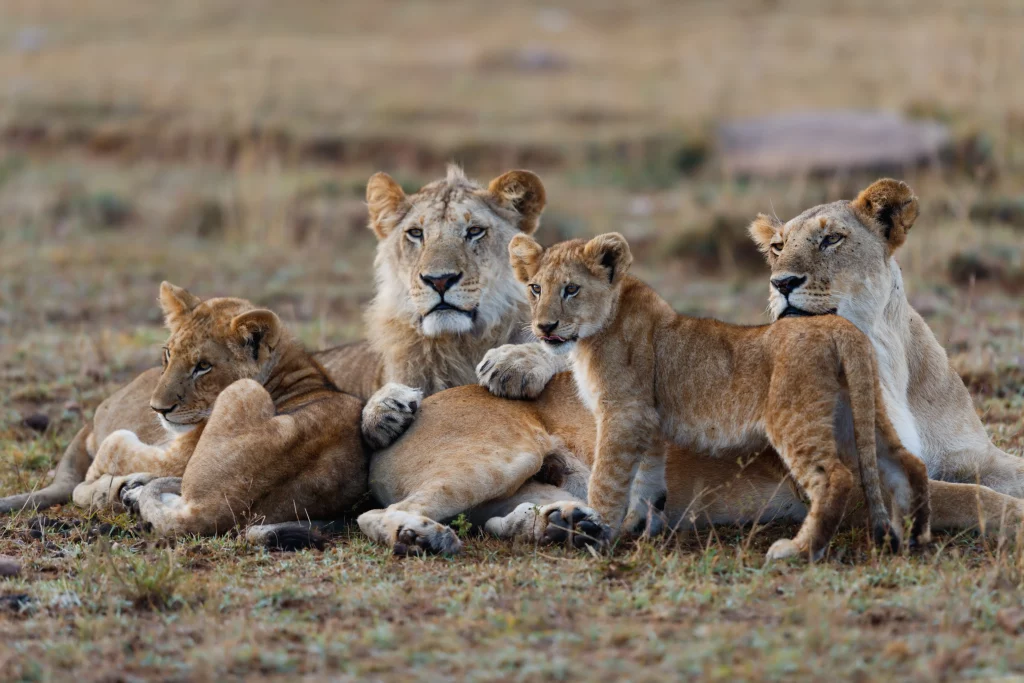
The Classic,3-Day, 2-Night Aberdare National Park Safari
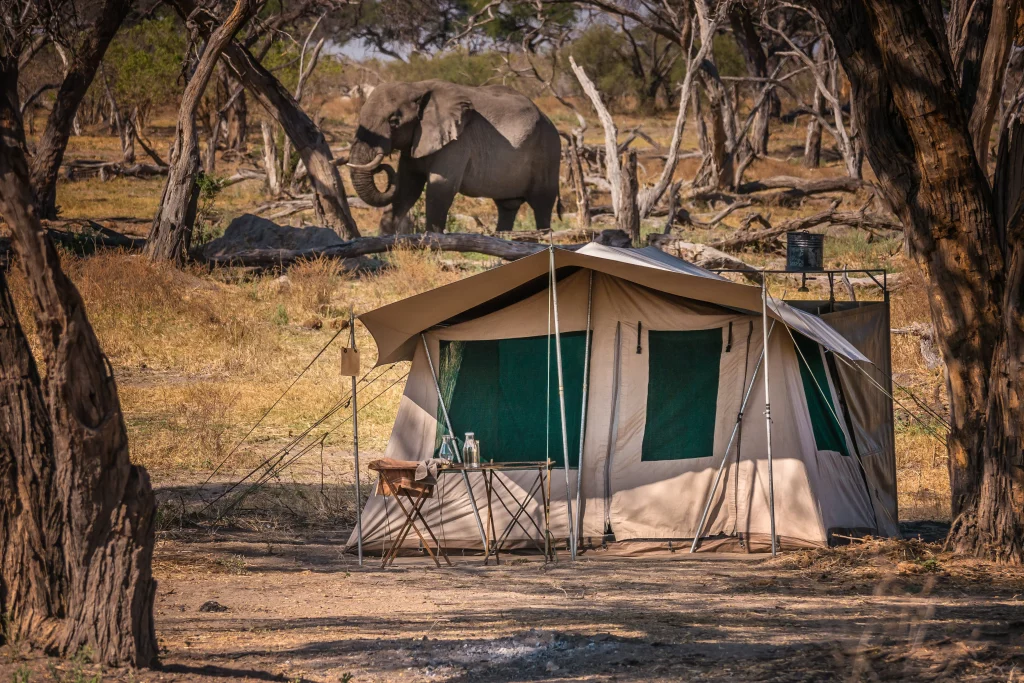
The Magical, 3-Day, 2-Night Amboseli National Park Safari
The best, 3-day, 2-night meru national park safari.
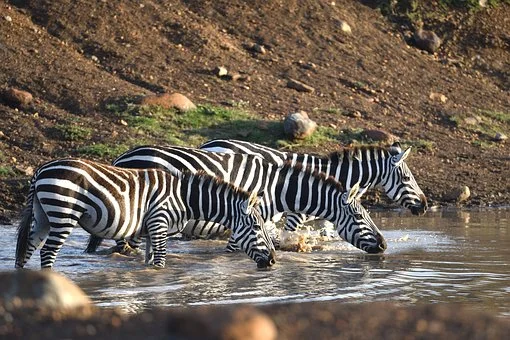
The Best-Selling, 3-Day, 2-Night Ol Pejeta Conservancy Safari
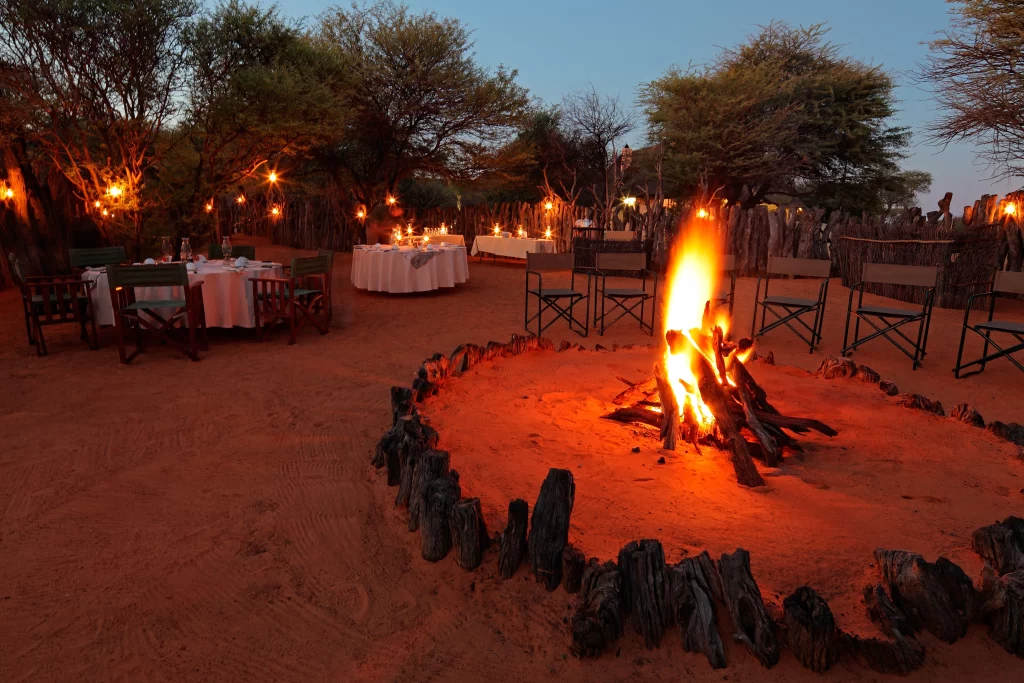
The Ultimate, 3-Day, 2-Night Samburu National Reserve Tour
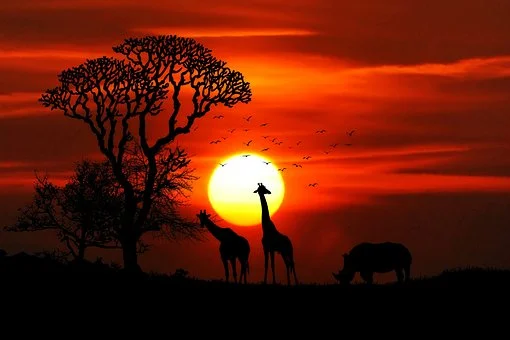
The Classic, 3-Day, 2-Night Tsavo East and West Safari
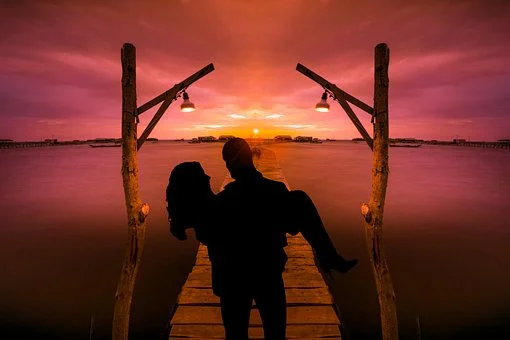
The Best, 12-Day, 11-Night Kenya Wildlife & Beach Safari
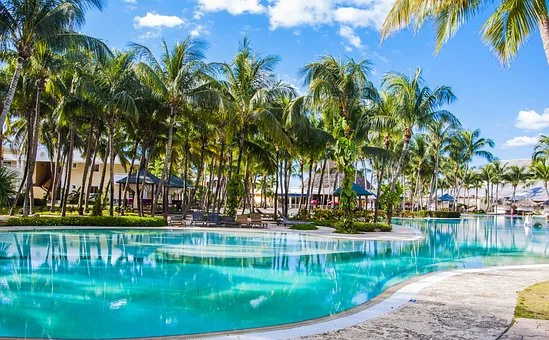
The Magical, 13-Day, 12-Night Kenya Wildlife & Beach Safari
The long rain season normally occur between April and early July. In most cases, it rains at night with short showers in the morning. Most of the day present clear skies and sunshine making it possible to still enjoy game drives . Those visiting Kenya at this time enjoy highly discounted prices.
The short rainy season is normally witnessed between October and December. The short rains extend across all of East Africa, mostly at night and late afternoons. Guests visiting Kenya at this time still get clear skies most of the day and excellent game viewing.

The rest of the months are dry and sunny. The dry months are ideal for game viewing, climb Mount Kenya or to go for a Masai Mara Safari. Visiting Kenya during the dry season allow full day game drive with no interruptions from rains.
Overall, the Kenyan climate is favorable enough to accommodate year round safari and beach holiday enthusiasts. The moderate to equatorial temperatures allow you to enjoy daytime activities and still participate in evening merry making. But the question remains: what is the best time to visit Kenya?
The best way to answer this is with another question: what do you want to do or experience in Kenya? Ideally, the best time to go to Kenya depends on whether you’re interested in going on a safari, climbing the mountains, or experiencing Kenya beaches . In the next phase, we will give a month-by-month guide on what you can expect if you travel to Kenya on different months.
Best Time of the Year to Visit Kenya - Month-by-Month Guide of Visiting Kenya
This page contains a month-to-month guide, handy hints, and expert recommendations on the best time to travel to Kenya .
Best Time to Visit Kenya: January - Festive to High Season
January often falls in the dry season on the broader sense of the term, lying just outside the two notables short rain and long rains seasons.
This can be considered the best time to go on a safari in Kenya since there is less rain and the landscapes are stunning. You can expect hot temperatures in Nairobi and central highlands, although you may also experience moderate showers from time to time.
The coastal region is scorching by the day and rather hot at night. There’s almost no rain at all in January at the coast.
Parks and reserves may be relatively quiet during this month, bar the New Year’s. In January, animals gather around the watering holes giving visitors front row seat of Kenya wildlife. Visitor numbers are normally in January seeing it comes right after the Christmas travel season. You should expect availability and reasonable prices at camps and lodges throughout the country.
If you want to visit Masai Mara , expect Mara Rivers and plains to be full of wildlife – from big cats to crocodiles. This month also offers you a chance of warm evenings characterized by breathtaking sundowners. If your goal is to visit Masai Mara National Reserve for photography or big 5 safaris , visiting Kenya on January is a perfect plan.
However, it would help if you also remembered that evening could get a bit cold at Masai Mara, Lewa , and Laikipia; make sure to pack layers when on safari.
January may be the best time for visiting Kenya, especially the coastal region. The weather in Mombasa and the surrounding towns offer the best time for diving and snorkeling.
Best Time for Safari in Kenya: February - Peak Season
February is one of the driest months in Kenya, averaging about three days of rain throughout the month. The absence of wet soil and mud makes the savannahs easy to access, making it the best time of year to go on safari in Kenya .
Destinations such as Masai Mara and Samburu National Reserve teem with giraffes, zebras, big cats, migratory bird species, and elephants at this time. Cities like Nairobi and Mombasa are warm and pleasant.
Tourists visiting Kenya at this time enjoy best wildlife viewing, warm weather in the coastal regions, and pay lower prices than those travelling to Kenya during the high season (June to October). The only difference between February and the dry seasons between July and october is that you don’t get to see the migratory herds.
Tourists visiting Kenya on February can expect the park to be full of predatory action, with numerous young herbivores present following last year Great Wildebeest Migration in the Masai Mara . Laikipia will also be a perfect destination for safari enthusiasts, where Elephants roam all over.
Those looking for the Kenyan coast tour will relish the clarity of the waters, providing the perfect opportunities for scuba diving, snorkeling, fishing, and other aqua activities. Sandy beaches such as Diani Beach will provide low chances of rain; hence great opportunities for relaxing and unwinding on the coast.
February is also a fantastic time to summit Mount Kenya, visit Amboseli National Park , or hike in Hell’s Gate National Park . Other great National Parks to visit on February include Tsavo National Park and Meru National Park.
Although February is more famous for tourists than January, the camp’s value remains as high as January’s. This is also the best time for anyone looking to enjoy Heli Safari in Kenya since the weather is clear. On January and February, game viewing action continues uninterrupted from Morning to evening. Consider travelling to Kenya at this time if you want a good game viewing experience with less crowd. The dry season provides a lovely time to beach goers as well.
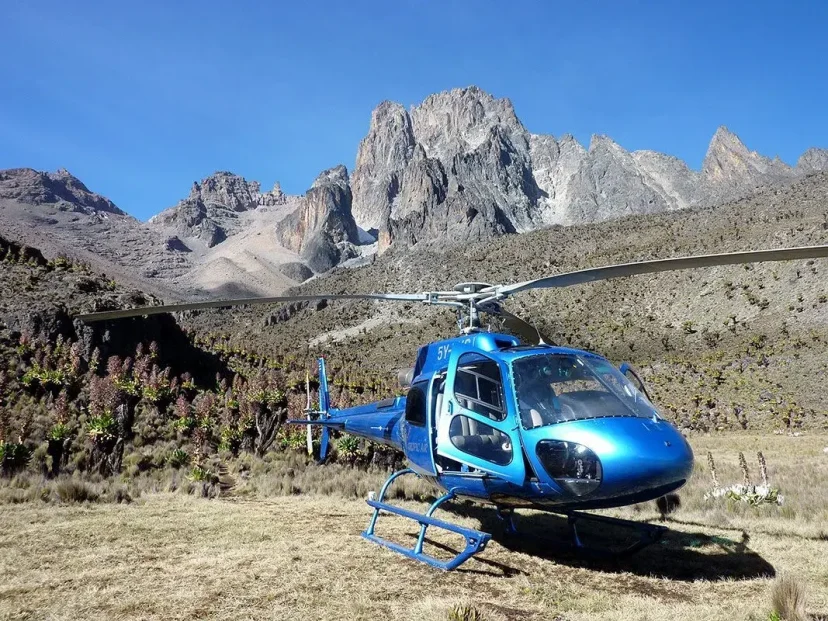
Best Time to Go to Kenya: March - End of Dry seasons
March in Kenya marks the end of the long dry season and the start of the long rainy season in Kenya as well as the neighboring East Africa countries. In Kenya, March starts pretty humidly, with high temperatures and good visibility of wildlife in all parks.
However, everything starts to change when the green season rains begin to sweep in.
The great migration remains absent for this month, but the wildlife viewing experience remains top-notch across numerous parks in the country, especially in the early days of the month.
Animals in many parks will spread as the rain starts in the latter stages of the month, and vegetation will become lusher. Game viewing action continues well in the early part of March all the way to the last week of March. By then, the grass will have grown tall.
Photography enthusiasts may want to pay particular attention to the rains, as bushes become greener and flower more effervescent. Clear waters on the Kenyan coast will continue to provide perfect conditions for water activities such as diving and snorkeling before the rains start in the last week of March.
After that, heavy rains and high temperatures may make the coastline and beaches less ideal.
Cultural enthusiasts and artists looking for the best time of year to visit Kenya should also consider March. The East African Art Festival usually takes place in Nairobi every March, providing an excellent schedule of literature, fashion, music, art, and theatre activities to enjoy.
The possibility of heavy rains at the end of the month makes March the end of the high season. This means lodges and camps across all national parks will offer better pricing in April, and availability may be higher than preceding months.
It is also worth noting that some safari lodges and camps close for the upcoming heavy rains. Only opening again in July in anticipation of the world’s greatest wildlife spectacle; the great wildebeest migration.
Best Time to Go on Safari in Kenya - April - Low/ Green Season
April is the wettest month in Kenya, with long rains at the peak. Expect a lot of rain with fewer sunshine hours if you want to visit Kenya this month.
Clouds often remain in the sky, even if it is sometimes dry during the day. With long rains comes increasingly verdant vegetation, which means more places for animals to seek shelter.
This, along with muddy roads, makes it very challenging to conduct game drives in some parks in Kenya, such as Aberdare and Mt. Kenya. Elephants are less likely to frequent the waterhole during the rainy season since the rain keeps them cool and there is water everywhere.
The best way to experience wildlife in April is by visiting animal conservancies such as the Ol Pejeta Conservancy . Here you will spot endangered species such as rhinos, chimpanzees, and hippos.
The Giraffe Centre is ideal for tourists looking to see endangered giraffe species up close. This time Mombasa and the entire Kenyan coastline are very hot by the day and receive little rain.
During this month, rainfall in the region tends to arrive in showers and often comes in the afternoon or overnight.
The overall weather condition on the coast isn’t ideal for beach-going or water-based sports.
Mosquitos are ubiquitous, especially in national parks and coast, making mosquito repellents mandatory items during your April visit to Kenya.
The great thing about rains and the green season is that it keeps visitors away. This means you can secure the most attractive rates of the year in April.
Most hotel accommodations and lodges will offer special low-season rates, and the airlines will also lower their prices considerably. Consider travelling to Kenya in April if budget is a huge limitation for you.
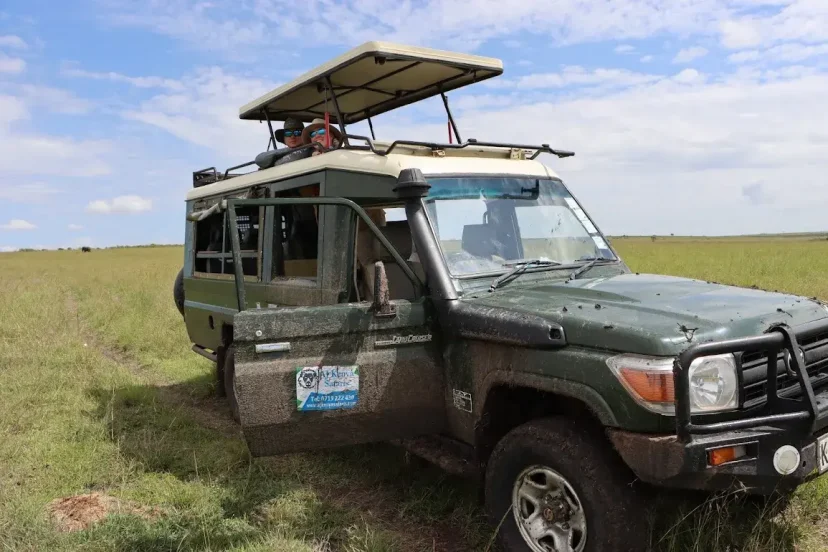
Best Time to Travel to Kenya - May - Low Season
May is also one of the wettest months in Kenya. You should expect a lot of rain throughout the month, along with relatively high temperatures and cooler evenings in most parts of the country.
Muddy tracks, dispersed wildlife, and thick vegetation will challenge game drives and wildlife sightings. However, this may appeal to safari-goers in the hunt for a challenge.
Those interested in wildlife exhibitions may still enjoy visiting conservancies dispersed across the country. On the Kenyan coast, water clarity will continue to decrease compared to earlier months in the year.
This will be bad news if you seek scuba diving, snorkelling, and other water activities in the coastal region. We suggest seeking accommodation in lodges and hotels with swimming pools, for maximum relaxation and unwinding by the pool.
You should expect accommodation prices to be at their lowest as May is still in the low season. However, some lodges and safari camps may remain closed during the wet season. Remember, waterproofs and mosquito repellents are essential for all activities during this time.
Best Time for great wildebeest migration - June - Low to Peak Season
June ushers the beginning of drier weather in Kenya after the long rains of April and May and the busy high season.
The early days of the month continue to be wet, but as you move towards the middle and the end, the month starts to get drier and sunnier. The western interior and the Rift Valley are sweltering by day, fantastic evening and night, and occasional rainfall.
Some of the rains are brought by the Kusi (Swahili for southern wind) Moonsoon winds in the early days of the month. Moonsoon rain season is still warm in the Kenyan coast.
Some grasses in Kenyan plains and parks will remain tall, making it difficult to spot some animals. However, some parks, such as the Masai Mara, will remain beautiful and scenic for photography.
Animals will start to congregate around shrinking water sources, which will increase your chances of wildlife viewings.
This is an excellent time to visit or start thinking about a trip to the Masai Mara to see the wildlife as the wildebeest migration . At this time, the wildebeest will have started gathering along the Kenya Tanzania boarder, ready to cross the Mara River.
We also recommend visiting the Meru National Park at this time. The park’s waterways will be in full flow following the long rains. This makes it an idyllic destination for spotting distinctive bird species such as the African pygmy kingfisher and African fish eagle.
The first rainy season will also leave the Amboseli National Park full of greenery. Although the area will be increasingly hot, the drying period will attract giant elephants to rivers and watering holes.
Mombasa and the coast region will remain hot by day and relatively calm by night. The area also receives a fair amount of rainfall.
Water activities such as diving and snorkelling may be conducted in areas like Diani Beach . The availability of lodges and camps will start becoming harder to come by as we approach the high season.
But since the Great Migration won’t be happening till the start of July, June becomes the perfect month to snap up an ideal accommodation. It is worth noting that some hotels still treat June like the low season while others hike their prices from 15th June.
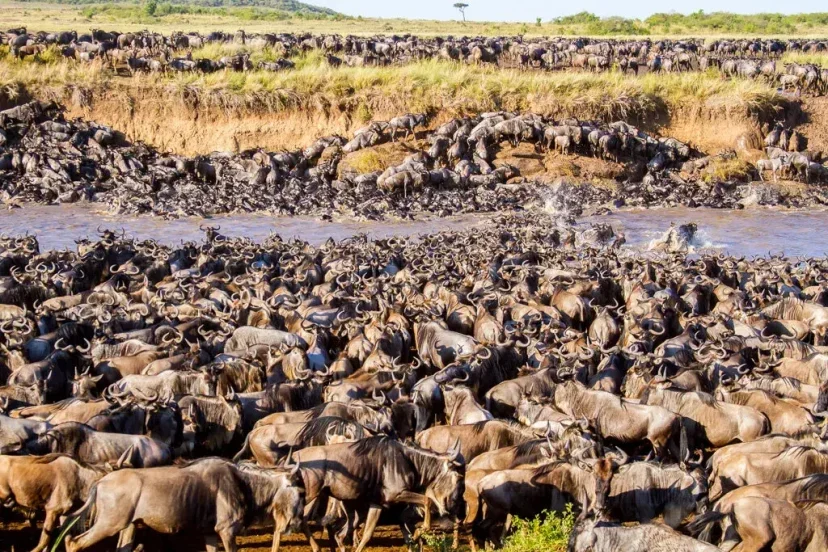
Best Time to Visit Kenya for Safari - July - Peak/Migration Season
The wet season will be gone by the start of July, ushering in the dry season, and the peak season will be in full swing.
Scarcity in water sources and thinning of lush greenery will make animal sightings considerably easier.
July is a fantastic time to catch a glimpse of roaming wildlife in savannahs and national parks .
This month is also widely regarded as the best time to go on safari in Kenya because it coincides with the Great Wildebeest Migration.
The first herds of wildebeests, gazelles, and zebras will start arriving in the Masai Mara during this time, pursued by fearsome crocodiles in the Mara river and by big cats on land.
The massive Masai Mara river crossing will not start until the mid of July, although there’s some degree of wildlife crossing by the end of June. We recommend visiting some smaller parks and conservancies such as the Tsavo East if you want to avoid the crowd. Amboseli National park is also a good destination to visit at this time.
Expect properties to charge the highest of prices during the great migration season. Availability of accommodation will also be a hustle. We, therefore, recommend booking two to three months in advance to get the best rates and picture-perfect accommodation options.
In addition to wildebeest migration, July coincides with the arrival of migratory bird species in Masai Mara. Game viewing is perfect at this time of the year and the Masai Mara Savannahs are mostly still beautifully green from the just ended long rain across East Africa.
Best Time to Visit Kenya - August - Peak/Migration Season
August is one of the coolest months of the year in the country, with temperatures hitting as low as 10° C at night time.
The days are generally sunny and hot, particularly in regions with higher altitudes.
The low humidity and little to no rainfall in the coastal region make August one of the best months to sunbathe and conduct water activities.
That means you can try out scuba diving, surfing, swimming, kayaking, and snorkelling.
The herds will mostly have settled by mid-August on the plains of Masai Mara, although there will still be activities in terms of animal crossings at the Mara River.
But it will be breathtaking to witness the action on the plains as the wildebeests, gazelles, and zebras demonstrate survival for the fittest trick.
They will be against the predators such as cheetahs, leopards, and lions, and the life cycle will be in full motion.
Expect accommodation rates to be at a premium price and next to no availability, especially for luxurious accommodations.
As such, we also recommend booking early in advance to secure sublime options.
Best Time of Year for Kenya Safari - September - Peak/Migration Season
September is undoubtedly on the list of the best time for a Kenya safari . It is still hot and sunny like August, but the crowds will slowly reduce.
The last of the wildebeests will still be wandering around the plains of the Mara, so you’ll still catch a glimpse of the Great Migration.
The sheer number of herbivores in the plains will still make for thrilling encounters between prey and predators.
You can relish the sighting at other tourist attractions such as Lake Naivasha , Lake Nakuru, Ol Pejeta, etc.
Here, you will get a chance of memorable wildlife viewing, including hippos, impalas, giraffes, and zebras, to name a few species.
You’ll have a good time seeing massive flocks of flamingoes as well as other migratory birds in destinations such as Lake Bogoria and Nakuru .
Clear conditions throughout the country provide textbook backdrops for wildlife and nature photography.
The great weather with less rainfall will allow for some exciting water activities along the coast.
Ivory sand in the area will feel very soft on toes, and the water will be warm and sparkly. Unfortunately, the fall-off in crowds at tourist attractions won’t mimic prices.
High season rates will remain throughout September and the first half of October.

Kenya Safari Best Time to Go - October - Peak to High Season
The peak season will continue in some places while others will start the month with the high one.
This will still be an excellent time to visit the country, although you might want to come earlier in the month for the best tourist condition in areas such as Masai Mara.
The Great Migration will depart from Masai Mara, but massive herds can still be seen in the park, especially in the southeastern parts.
Wildlife devotees and photographers, in particular, should take advantage of excellent wildlife sightings in parks and conservancies.
The highest concentration is usually around rivers and watering holes.
Enormous numbers of migratory birds will be flying from Europe around October to areas such as the western parts of Lake Nakuru and Amboseli National Park.
Attractions such as Mount Kenya National Park and Hell’s Gate National Park will also make good destinations during this period.
The days are hot, nights cool, and might receive occasional rainfall in Nairobi and central highlands.
Mombasa and its surrounding will remain hot by the day, rather hot by nighttime, and may receive moderate rainfall.
This means that water activities can still take place. October is ideal for budget-conscious travellers.
Prices will also fall dramatically as accommodation availability increases, especially in lodges and camps near Masai Mara .
This will give safari-goers seeking private exploration a perfect chance to navigate the park.
Best Time of Year to Go on Safari in Kenya - November - High Season
The weather in November can be described as wet, with common tropical showers.
This means that the temperature is high enough to wear light clothes, but waterproof options can save you from getting caught in unexpected showers.
The country’s rift valley and western interior parts become hot by day, cool at night, and may receive moderate showers.
In November, animals cluster around the few remaining water sources in most parks and game reserves, which means perfect opportunities for wildlife sightings.
You can still enjoy the Big Five, baby animals and migratory birds abound the Masai Mara, although the Great Migration is over by Now.
You can move to the Kenyan coastline to enjoy the beaches and water sports if you seek wildlife viewing and safari alternatives.
The coastal region is scorching by the day, rather hot by night, and may receive moderate rainfall in November.
The oncoming short rains bring mosquitoes, and we recommend packing some repellents, regardless of the place you intend to visit.
Hotel’s prices and travellers are markedly lower compared to former months and the ensuing month of December. November is referred to as a ‘shoulder month,’
Despite this, we still recommend booking well in advance if you want to combine November with the incoming Christmas Holidays.
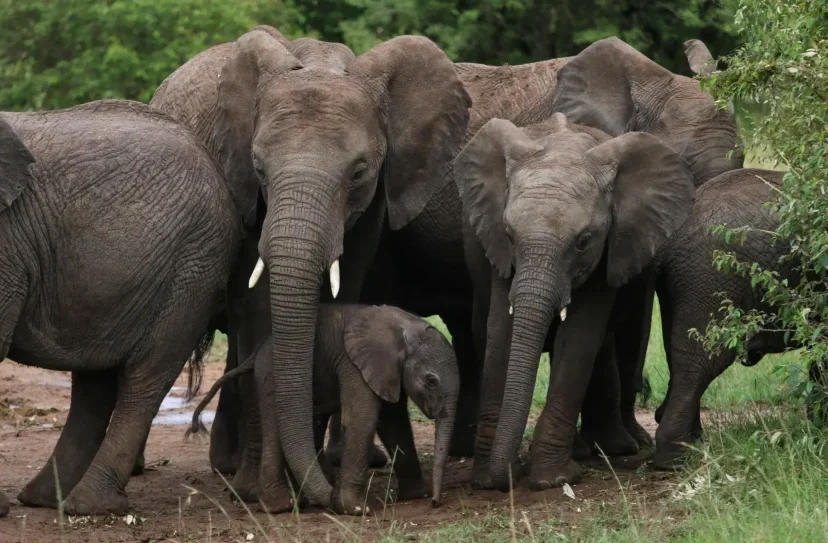
Best Time to Visit Kenya - December - High to Festive Season
The end of the year starts with a high season, and then the festive season kicks in from 20th December to the 3rd of January.
Christmas holidays attract huge crowds at major attraction sites and destinations , such as national museums, national parks, historical sites, beaches, and major towns.
New Year’s and New Year’s Eve also attract many domestic and international tourists who look to end the year and start a new one in style.
The temperatures across the country are ideal if you are looking to celebrate the festival in various parts of the country, especially if you want to head to Mombasa or similar towns.
The constant warm temperatures and ocean breeze provide a perfect blend for beach vacations in December, although the coastal region’s humidity is high.
Due to the short rains, Kenyan plains and savannas will be flush with greenery .
Water sources begin to dry up in the later stages of the month, making wildlife sightings easier.
A visit to the Masai Mara and similar game reserves is ideal for merry-making during Christmas and New Year’s celebrations.
This is also a stunning month for photography, where migratory birds and other animals can easily photograph amidst the thriving foliage.
Since this is a high season, accommodation availability may be tricky. Prices also tend to rise with a decrease in accommodation options.
As such, we recommend booking two to three months early if you are looking to go on a late or early December holiday.
When is the best time to visit Kenya?

Nov 17, 2023 • 7 min read
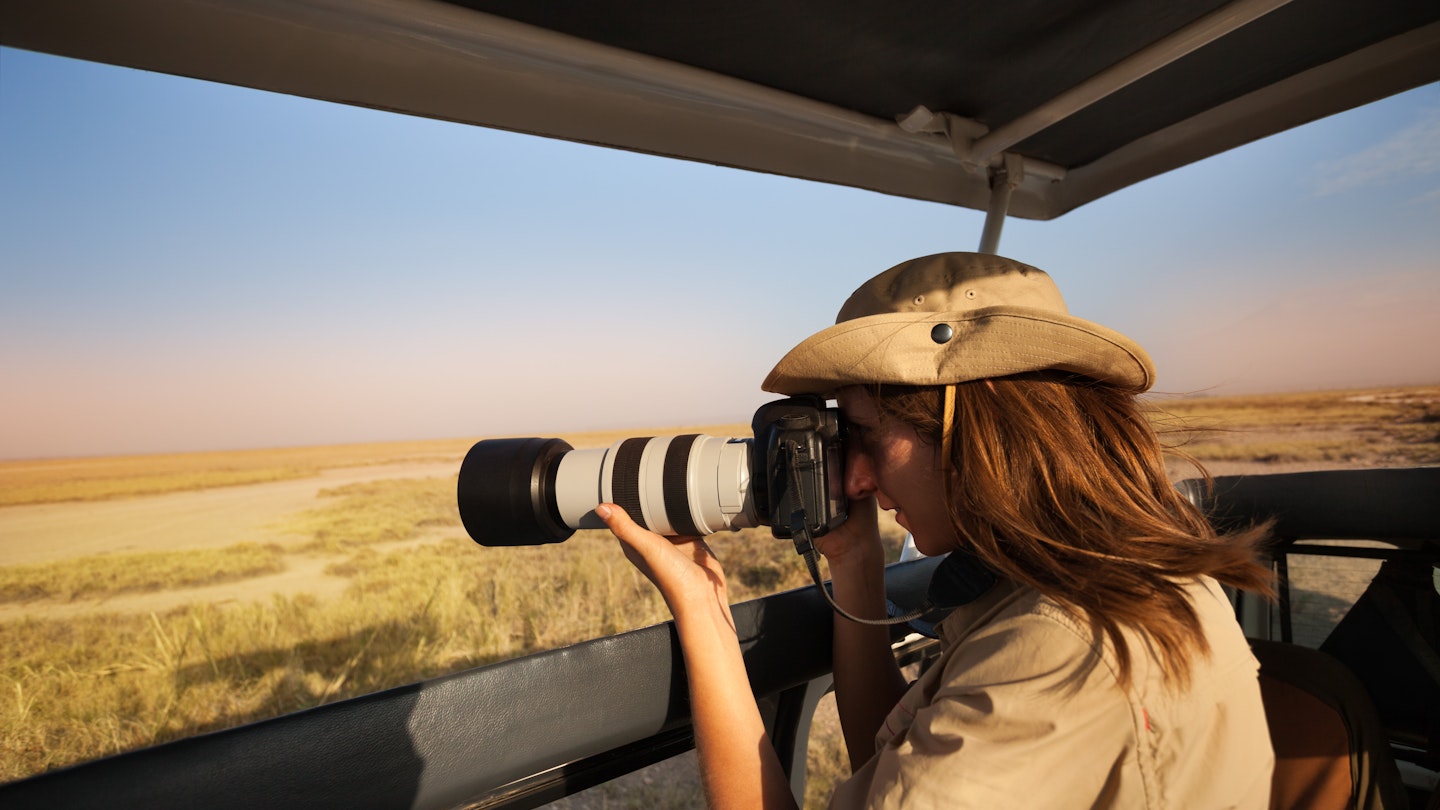
May is a good time for wildlife photography in Kenya, with incredible light and colors © SerrNovik / Getty Images
With about half the country on either side of the equator, Kenya ’s climate isn’t a straightforward split of dry and wet seasons. In fact, its dry season has a short wet season, and its wet season is interrupted by a dry one – clear as mud, right?
What this means practically is there’s not exactly a single best time to visit Kenya. There is somewhere ideal to visit at any time of year, but for the Great Migration, bird migration or quality diving, you’ll need to pick specific months.
For climbers, the dry season is prime time for safety and visibility. Temperatures are generally consistent across Kenya, with the coast hotter – but humidity can vary. It can get cold in the mountains, and Kenya’s highest peak, Mt Kenya , is always covered in snow.
This East African nation counts more than 42 Indigenous communities in its population of nearly 54 million people, and many festivals and events explore this diversity – from the Lamu Cultural Festival celebrating the archipelago’s Swahili heritage and the exuberant Mombasa Carnival to the diverse gathering that is the Lake Turkana Festival.

July to October and January to February are the best times to see the Great Migration
If the wildebeest migration is on your must-see list, head to the Masai Mara from July onward to observe one of nature’s greatest sights – thousands of wildebeest, zebras and giraffes making the move across the Serengeti.
These high-season months are an enjoyable time to visit any of Kenya’s parks because the grass is thin, there’s little rainfall and sightings are easier as animals congregate around waterholes; they're also climber-friendly because of good visibility and lack of rain. July is also a good time to spot huge flocks of pink flamingos at Lake Nakuru .
Much like July, August is one of the best all-around months to visit Kenya, but it’s a busy time. The Great Migration is well and truly underway, and wildebeest are filling the plains of the Masai Mara. If you’re not in the Mara, August is an excellent time to visit other national parks and conservancies around Kenya .
You can also visit Nairobi without the humid stickiness that makes urban exploring harder work. The capital’s food scene is popping, and Nairobi Restaurant Week is a chance to get your fill. For a hyper-local experience in Samburu County in northern Kenya, the one-day Maralal Camel Derby is a colorful display of camels, costumes and culture.
September offers the best of July and August in terms of weather and wildlife but with slightly fewer crowds, especially in the latter part of the month. You can still catch the migration as hot, dry weather sets in, and there’s almost no chance of rain. It's also when the East African Community Arts Festival JAMAFEST takes place. It’s every two years and rotates between East African nations.
Nairobi hosts the Tusker Safari Sevens in October, an annual Rugby Sevens tournament open to international teams, creating a buzz in the city. October 20 is Mashujaa Day, also known as Heroes Day, honoring those involved in Kenya’s independence movement. It’s a public holiday, and Nairobi and coastal areas are buzzing as Kenyans head to the beaches and parks.
Hot and dry, the high season beckons as the new year begins. January is a popular and busy time for everything: safari, hiking, city exploring, diving, snorkeling and beach stays. Dry season is particularly good (and safe) for climbing Mt Kenya and other peaks and for hiking in places such as Hell’s Gate National Park .
You can usually benefit from low season prices at Masai Mara because the big migration is over, and migratory birds fly into the Mara instead. Celebrate the dawn of a new year on a Mombasa beach ; the city hosts major celebrations.
February sees both the high and dry seasons in Kenya. The lack of rain makes it a popular choice for safari, with minimal muddy terrain and plenty of wildlife to see. It’s also a top time for climbing and hiking , although as it's peak season, crowds and prices can both increase.

November, December and March are the best times for lush landscapes and underwater adventures
November is a fun month for festival lovers, with both Mombasa Carnival and Lamu Cultural Festival celebrating the rich heritage of Kenya’s ethnic groups and communities.
Floats, music and dance epitomize Mombasa’s street party while on the archipelago of Lamu off the northern coast, Lamu Cultural Festival includes traditional dancing called ngoma and centuries-old skills such as dhow (sailboat) building, donkey racing, fish-trap making and dhow regattas.
For Kenya’s South Asian population, Diwali/New Year celebrations take place (sometimes in October), so the temples are buzzing, decorations are up and there’s an above-average production of Indian mithai (sweets). Weather is mixed with sun and rain, but November remains a good bet for safari.
If you like your landscapes lush and abundant, December in Kenya is magical. The rains tend to stop around the middle of the month, and Kenya’s parks take on a gorgeous green hue ahead of the upcoming second “high season” of January and February. Water visibility is optimal during the shoulder season too, so this is a great time for divers and snorkelers.
December 12 marks Jamhuri Day. Jamhuri means republic in Swahili, and this day is when Kenya marks its 1963 independence from Britain and its constitution as a republic a year later, with cultural events, dances and music.
The two-day Rusinga Cultural Festival on Lake Victoria celebrates the threatened culture of the Abasuba people, while the Beneath the Baobabs Festival in Kilifi is one of the country’s best music festivals, with East African and international performers, giant art and cool costumes.
It's getting hotter and more humid as the rainy season beckons, but March remains a particularly enjoyable time to be in Kenya. Prices can be in the traveler’s favor , and often the rains arrive later in the month, so you should be fine in the earlier half.
Diving and snorkeling are rewarding in March, with clear water and good visibility, and beach parties are especially welcome on these balmy evenings as the hot, dry season begins to give way to the rains. Muslim Kenyans observe the holy month of Ramadan, while for walkers, climbers and outdoors types, the Mount Kenya Festival is a celebration of the country’s highest peak.

April to June is the best time for smaller crowds and lower prices
The “long rains” hit in April and May, and sometimes in March too. While the rainy season can be off-putting for some travelers, this time of year can be incredibly rewarding, and the Mara remains accessible in March. Crowds thin out, and you can enjoy the quietness and solitude of nature.
Some safari lodges and camps close during this time because constant rain can hamper visibility in some parks, and the humidity can be uncomfortable. It’s still a great time to be by the coast, but heavy rains can reduce visibility for divers and snorkelers.
But don't dismiss May for safari or wildlife viewings! Yes, the grasses are longer, and sightings are trickier, but the light and colors can be extraordinary for photography. Samburu National Reserve in northern Kenya is a good choice as wildlife gathers on the riverbanks of the Ewaso Ngiro River.
June is a wonderful time to experience Kenya’s highlands, and with low humidity, walking and climbing become a little easier. This shoulder-season month is a lovely time for wildlife viewing, especially in northern Kenya after the long rains, and it’s also the start of the migration. The coast is mostly dry, and prices are a little lower before the high season kicks off in July.
Parades, singing and dancing take place on Madaraka Day on June 1 – the anniversary of Kenya’s move to self rule. The visually spectacular Lake Turkana Festival in the Rift Valley brings together different ethnic groups in the region, to both celebrate their diverse cultures and promote peace.
If you’re into off-road racing or want to watch, the Rhino Charge , a 4x4 race that raises funds to conserve mountain ecosystems, is quite a spectacle.
This article was first published Jul 3, 2022 and updated Nov 17, 2023.
Explore related stories
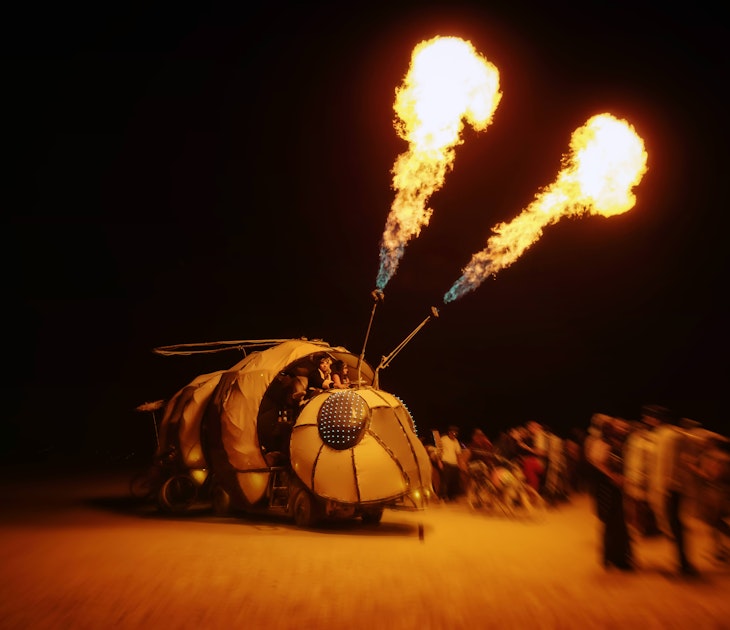
Jan 2, 2023 • 12 min read
Want to start planning for the year ahead? Featuring sports events, natural phenomena and more, these are 20 amazing trips to consider taking in 2023.

Feb 20, 2024 • 17 min read

Jan 2, 2024 • 11 min read
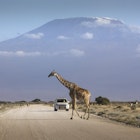
Dec 13, 2023 • 9 min read
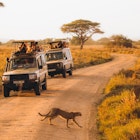
Dec 8, 2023 • 4 min read

Nov 30, 2023 • 9 min read

Nov 29, 2023 • 4 min read
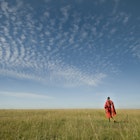
Nov 28, 2023 • 8 min read
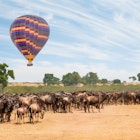
Nov 23, 2023 • 8 min read
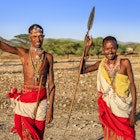
Nov 21, 2023 • 7 min read
- Email: [email protected]
- Call: +254 722 444 445

- Camps & Lodges
- Airport Transfers

Packing List for Kenya Safaris
You’re about to embark on an adventure of a lifetime—a safari in Kenya! From the stunning landscapes of Maasai Mara to the vibrant wildlife that calls it home, a Kenyan safari is an experience like no other. You’re likely already dreaming of getting up close and personal with some of Earth’s most magnificent creatures.
But before you jump on that plane, there are a few things you need to consider when packing on preparing for a Kenya safari. A safari in Kenya is unlike any other holiday—you’ll be spending the majority of your time outdoors, exposed to the elements, and you need to make sure you have all the right gear.
Whether you’re planning a camping trip out in the wild or a luxurious stay at one of Kenya’s world-famous game lodges, it pays to be prepared. To help ensure everything runs smoothly during your travels, we’ve put together a comprehensive packing list for exploring Kenyan safaris. Read on for our ultimate guide!
What to pack for your Kenya Safari
Are you ready to explore the wilds of Kenya? If so, you will want to make sure that you pack the right items to make your safari as enjoyable and memorable as possible. What should you include in your packing list? Let’s take a look.
First, when it comes to clothing, make sure to bring along light and breathable fabrics that are comfortable against the skin. Shirts, shorts, and pants made from quick-drying materials like nylon or polyester are best. Additionally, hats and sunglasses are a must-have for protection against the sun’s strong rays, while a light raincoat or poncho will come in handy during the rainy season.
In terms of footwear, sturdy hiking boots with good grip are essential for keeping your feet protected during long treks. You may also want to pack a water-shoe–to keep your toes out of harm’s way when crossing rivers or streams.
Finally, don’t forget important items like insect repellent (to keep away pesky insects), water bottles (staying hydrated is key!), binoculars (for bird watching or spotting wildlife from afar) and a camera (for capturing unforgettable memories).
What to Wear on a Kenyan Safari
When it comes to what to wear for a Kenyan safari, comfort and practicality is key. You’ll be spending a lot of time outdoors, so you want clothes that are lightweight and breathable. You’ll also need to think about covering yourself up from the sun and the dust. Here’s what you should include:
- Lightweight Tops : Loose, long-sleeved shirts are best, as they will protect your skin from the sun while still being breathable. A couple of lightweight sweaters or cardigans may also come in handy in case of cooler weather.
- Pants and Shorts : Khakis or cargo pants are great for safaris as they are durable enough to withstand plenty of outdoor activities. Some shorts should also be packed if you expect warmer temperatures.
- Footwear : The key here is to bring shoes that you can easily slip on and off but that gives you enough support when walking around outdoors. Closed-toe shoes are recommended as they will protect your feet from any bugs or reptiles out in nature. Spare laces may also come in handy if needed.
Gadgets and Tech Accessories for a Safari travel
Gadgets and tech accessories are essential for any Kenyan safari . You’ll need items such as a camera, phone, power bank, binoculars, and more to stay connected and capture all the amazing sights and experiences you encounter on your journey.
Here is a comprehensive checklist of must-have gadgets and tech accessories for your Kenyan safari:
- Camera: A good camera is essential for documenting your safari journey. Make sure you bring extra lenses, battery packs, tripods, and lens cleaners.
- Phone: Cell phones can be an indispensable tool when exploring Kenya’s wonders. Make sure to bring the necessary chargers and adaptors for staying connected while on the go.
- Power Bank: Power banks are a great way to stay charged up while exploring remote areas of Kenya. Look for compact models that provide plenty of juice but still fit in your bag or pocket.
- Binoculars: Binoculars are essential for spotting wildlife from afar, so make sure to bring a pair along on your safari. Look for lightweight models with good magnification power so you don’t miss out on the beautiful sights of Kenya’s wildlife!
- GPS device: A GPS device can help you navigate safely through unfamiliar terrain while keeping track of landmarks and other points of interest.
Health and Safety Items to Pack for a Kenyan Safari
When exploring Kenya safaris, you may think about what clothes to bring, but health and safety items should be at the top of your packing list as well. It’s always a good idea to be prepared in case of any medical emergency or other unexpected situation. So here are some health and safety items to consider bringing on a Kenyan safari:
First aid kit
Pack a compact but comprehensive first aid kit containing bandages, gauze, antiseptic wipes and ointments, painkillers like aspirin and ibuprofen, insect repellent, anti-malarial tablets, sunscreen and more.
Bring along any prescription medication you need for your trip. It’s also a good idea to have over-the-counter medications for common ailments such as allergies, headaches,s or nausea on hand just in case.
Personal safety items
You should also pack personal safety items such as a whistle (for drawing attention in case of an emergency), a flashlight or headlamp with extra batteries, a pocket knife and a multitool for those small fixes or sudden situations.
Medical insurance
It’s essential that you get medical insurance for your Kenyan safari trip. You don’t want to get stuck with extremely high bills if you have an accident or need emergency medical care while away from home. So make sure that your policy covers medical treatment abroad before you leave!
Accessories and Miscellaneous Items to Pack for a Kenyan Safari
No adventure is complete without the right accessories and miscellaneous items. Here are some of the must-haves you will want to bring along with you on your Kenyan safari:
First Aid Kit
No matter where you go in the world, a first aid kit should always be a part of your packing list. Make sure to include things like bandages, disinfectants, painkillers, insect bite remedies, and any other medications you may need.
Bring along binoculars so you can get a better view of some of Kenya’s amazing wildlife from afar.
Camera Gear
Of course, an essential for any adventure is a good camera. If you plan on taking high-quality photos or videos, remember to pack your extra lenses and memory card as well.
A flashlight can come in handy when exploring Kenya’s many national parks after dark or if you find yourself in an unanticipated situation when visibility is low. A headlamp is a great option as it not only keeps your hands free while navigating but can make finding small items much easier.
Sun & Rain Gear
A wide-brimmed hat and sunglasses are a must when exploring any outdoor environment – especially one as diverse as Kenya! Bringing along rain gear is also recommended for sudden downpours that occur during the wet season.
What to Expect on a Game Drive in Kenya
Are you ready to explore the wilderness of Kenya? Before you go, you should put together your packing list. Game drives in Kenya offer amazing opportunities to see wildlife in its natural habitat. But you’ll need to have the right items with you if you’re going to make the most of your experience.
Besides the basics like light clothing and comfortable shoes, here are a few things you’ll want to bring:
- Sunblock and insect repellant: Even if it’s cool, the sun can be intense on a game drive and insect bites can ruin any fun.
- Binoculars: A good pair of binoculars will allow you to spot animals from a distance.
- Camera and extra lenses: You won’t want to miss capturing all those moments so be sure to bring something good with plenty of memory cards or film rolls.
- Sunglasses: Protect your eyes with some shades so you can really enjoy the sights without discomfort from the sun’s glare.
- Hat or scarf: Keep your head covered while driving in an open-top vehicle so it doesn’t get too hot or too cold
- Water bottle: Make sure you stay hydrated and have something handy to refill whenever possible!
- Snacks: Useful when long drives take longer than expected, they will be lifesavers!
Remember that while venturing into nature can be breathtaking, comfort should always come first when packing for a game drive in Kenya!
What Should You Not Bring to Kenya
When packing for your Kenya safari, there are a few things you should definitely leave at home. Firstly, don’t bring any valuables that you’re not comfortable losing – there’s always a risk of losing your belongings when traveling.
Secondly, avoid bringing anything that could potentially offend or upset local cultures and customs – be respectful of Kenya’s traditions and customs.
Lastly, make sure you’re not packing anything that could potentially harm the environment – leave your single-use plastics at home, and don’t bring anything that could potentially disturb the delicate ecosystems you’ll be encountering on your safari.
Travel Papers
No matter where you’re going in the world, it’s always important to have your travel papers in order. That’s especially true when you’re planning to explore Kenya safaris. Before you set off on your adventure, make sure you have your passport, visa, and other required documents in hand.
Having your travel papers in order is the first step in ensuring a smooth and enjoyable trip. So take the time to do some research and make sure you have everything you need before you head to Kenya. With the right preparation, you’re sure to have an amazing safari experience.
No one wants to be caught off guard when going on a safari in Kenya, so here are the answers to some of the most commonly asked questions about what to pack for your trip.
What kind of clothing should I bring?
It’s important to dress comfortably and practically, while also thinking about the climate of Kenya. Layers work best—lightweight tops, breathable shirts or blouses and long pants will be the most useful. For footwear, you’ll need something that’s comfortable and sturdy, like sneakers, hiking boots or sandals.
Do I need insect repellent?
Yes! Especially if you plan on visiting during a wet season or in areas with high humidity levels. You’ll want an effective insect repellent like [Featured Product], which is specifically designed to repel mosquitos and other pesky bugs. Additionally, you may want to bring along a few insect-fighting essentials like DEET wipes, mosquito coils, citronella candles and mosquito nets for extra protection against mosquitoes.
Do I need to bring a hat?
Absolutely! A wide-brimmed hat is essential for keeping your head cool when you’re out walking in direct sunlight and under scorching temperatures. It also helps keep sun out of your face so you can better enjoy your safari experience!
What colors to wear on safari in Kenya?
When you’re packing for a Kenya safari, you’ll want to make sure you have the right clothing to blend in with your surroundings. Depending on the time of year you’re visiting, you’ll want to pack light-colored clothing that won’t absorb too much heat, like khaki, beige, or white. You’ll also want to avoid wearing anything too bright or flashy, as this can scare away the wildlife. In terms of footwear, closed-toe shoes are a must, as you’ll be doing a lot of walking. And if you’re planning on going on any bush walks, you’ll need to pack a good pair of walking boots.
Packing for a Kenyan safari is all part of the adventure, and there’s really no right or wrong way to go about it. The key is to think ahead, prepare and be flexible. The ultimate goal is to make sure you have everything you need to make the most out of your safari and have a safe and enjoyable experience.
Though packing for a safari in Kenya may seem overwhelming, the time and effort spent before your trip will make a world of difference during your game drives. Prepare and pack accordingly and you’ll be ready for whatever the Wild brings your way.
Quick links
- Nairobi Excursions
- Tours & Safaris
- Mombasa SGR Transfers
- Safari Destinations
- Airport Meet & Greet
- Mombasa Airport Taxi
- +254722444445
- [email protected]
- Krishna center, woodvale groove, Westlands, Nairobi
Terms & Conditions | Privacy policy
Copyright© 2023 Denki Travel | Powered by Ikera Consult
Plan your tour

How Much Does an African Safari Cost?
B eing surrounded by giraffes, elephants, lions, zebras, and cheetahs in Africa sounds like a dream come true. But it also sounds expensive. Getting a guide, secluded accommodations, and travel can add up. So, how much does an African safari cost? An African safari can cost between $200 and $1,600 per person per day. Read more on the breakdown of these costs below.
How Much Does an African Safari Cost on Average?
The cost of an African safari will vary depending on where it is, what type of accommodations you get, and what time of year you go.
The most budget-friendly, camping in a tent, will cost about $200 per person per day. The most luxurious African safari can cost up to $1,600 per person per day.
Your African safari cost includes all park admission fees, meals, camping equipment, drinking water, and transportation. They can be a short one-day adventure to a multi-week long excursion. You should account for tipping your guides during your journey. The standard tip is $10 to $20 per person per day.
Things That Impact Your African Safari Cost
You can do many things to cut your African safari cost, while other things will bring the price up. I always tend to focus on what’s important to me and splurge on those aspects. For instance, if you like staying in luxury accommodations, you can splurge on your stay and go during the off-season to save a little bit.
The Length of Your Safari
Obviously, the total cost of your safari will be more the longer your safari is. However, the daily cost is cheaper when you book multiple days under one guide. It’s like buying in bulk at Sam’s Club. You save money in the long run.
The Time of Year You Go
There is a high and low season for African Safaris. The high season is when school is out, and during the dry season. There will be more tourists and higher costs from June to September on most safaris.
The low season is during the rainy season, typically between March and May. The problem with going during the rainy season is animals don’t tend to come out as much. The best time to go on an African safari is during the winter, between January and February.
Where Your Safari Is
The country and park you decide to do your safari in will sway the cost. Doing a safari that goes across multiple countries will cost more while staying in one park is less expensive. South Africa has some of the cheapest safari options because they have more self-drive options, and the parks are built better for these types of excursions.
The Level of Accommodation
You can stay in everything from a camping tent that you could buy at your local outdoor store to permanent yurts with furniture and modern technologies. There are even resort-like stays that you can book for your African safari with pools, villas, and bar and restaurant service.
Your Mode of Transportation
Driving yourself through one of the many parks and reserves is an option sometimes, but it’s not the best option. Your best bet is to book a guided safari because the guides know where all the animals like to go. That way, you’re more likely to see all the wildlife you want.
Less costly guided safaris are also typically in open-roof minivans that they cram people into. The nicer African safari tours use nice jeeps that are entirely open, giving you a chance to see everything wherever you sit.
How Many People Go On The Safari
The more people that come with you, the less your African safari will cost. Most accommodations will hold two people, and some will hold up to five. They will still charge per person for the safari. Even though, it will be less than if you go by yourself because you are sharing one accommodation.
The Best African Safari Destinations
You can go on a safari in different areas of Africa. Each location has unique wildlife that they are known for. You should choose a particular destination depending on what kind of African safari experience you want. Some destinations are also more budget-friendly.
Kenya is the original safari destination. It makes sense, with multiple large game reserves, the great migration, and a slew of cultural experiences to encounter. Some of the best reserves to visit in Kenya are:
- Masai Mara National Reserve- The most popular park in Kenya.
- Samburu Game Reserve- Has unique wildlife, like Beisa Oryx, Reticulated Giraffes, and Somali Ostrich .
- Tsavo National Parks- The largest and most remote park in Kenya.
- Amboseli National Park- You can see Mount Kilimajaro at this park.
- Lake Nakuru National Park- Millions of flamingos and white rhinos live here .
There are many great lodges to stay at in and around these parks that will take you on a drive to see the wildlife every day. One that I recommend is Elephant Bedroom Camp. It gets its name because elephants frequent the grounds, making sure to say hello to all of the visitors. You may also see monkeys and Impalas from your luxury tent.
This camp has all of the comforts that you would see at any modern accommodation, including a pool, hot and cold water, electricity, and WIFI. You will get a daily drive through the bush in an open-air vehicle, a picnic lunch, cultural visits, and entertainment by Samburu warriors.
If your dream is to see a gorilla or chimpanzee in the rainforest, then Uganda is the African safari destination for you. It’s different than most other African safaris in the way that the safaris in Uganda are set in rainforests instead of desert land. You can even stop by some amazing waterfalls along your safari. Some parks to check out in Uganda are:
- Murchison Falls National Park- Has various mammals, like giraffes, buffaloes, and crocodiles.
- Bwindi Forest National Park- Has the largest population of endangered silverback gorillas.
- Kibale Forest National Park- Has the highest diversity of primates in Africa.
- Mgahinga National Park- A large park spanning three countries where endangered silverback gorillas live.
- Queen Elizabeth National Park- One of two places you can find lions that climb trees.
To be fully immersed in the rainforests that gorillas and chimpanzees roam, stay at Bwindi Lodge . You may get the chance to spot some birds and chimpanzees swinging from the trees in the Bwindi forest right from your room. There’s also a village nearby that has the award-winning Bwindi Bar.
Another advantage of staying at the Bwindi Lodge is you can trek into the forest to see the mountain gorillas and other wildlife instead of having to take a drive. They also have a waterfall trail for you to enjoy the landscape as well.
Botswana is a lesser-known safari destination, so it will feel more exclusive at a smaller cost. Even though it has a variety of landscapes to view different types of wildlife. One of the most popular types of safaris you can do in Botswana is a boat safari, where you can see elephants and hippos. The best parks to see in Botswana are:
- Okavango Delta- The most popular park in Botswana, famous for boat safaris on the wilding channels.
- Chobe National Park- You can take a car to this park, making it more accessible. Elephants are a popular group here.
- The Kalahari- You can find a black-maned lion here during the wet seas on.
- Makgadikgadi Pans- Find unique African animals across glistening salt pans.
- Moremi Wildlife Reserve- One of the most remote and diverse wildlife areas of Botswana.
Staying at Abu Camp gets you up close and personal with elephants. Since the camp is next to a lagoon, there is a herd of elephants that call this camp home. There’s even a chance to sleep in the elephant boma for the ultimate experience. You can also experience every type of safari you want, whether it’s a game drive or a boat safari.
Abu Camp has super comfy accommodations with modern furnishings and all the luxuries you would see in any other hotel. There’s a plunge pool to cool off during the day while you wait for your evening safari. Each private canvas tent overlooks the Delta for amazing views.
Tanzania is home to the well-known Serengeti, known for the safaris that explore the great herd. It is also the home to Mount Kilimanjaro, where the most adventurous can summit its peak. This place is basically the home of everything you think of when someone says “Africa.” The most popular safari parks in Tanzania are:
- Serengeti National Park- The world’s most popular destination for a safari.
- Ruaha National Park- The largest park in Tanzania with many elephants and giraffes.
- Ngorongoro Crater Conservation Area- Home to the Ngorongoro Crater, where you can find the largest population of lions in the world .
- Lake Manyara National Park- Home to a massive lake where you can spot animals looking for water during the dry s eason.
- Mikumi National Park- Mostly flat grassland, making it easy to spot wildlife.
For the best views over the Serengeti day and night, Klein’s Camp is a great place to stay for your safari. It is situated just on the border of the national park, so they are one of the only camps to offer open-air night drives. It is also in the perfect position to watch over the Serengeti from your room.
Klein’s camp feels extremely exclusive because they have 10,000 hectares of privately leased land. You can go offroading, go any time of day, or follow a zebra trail. They will also take you on specialized photography tours and visit the Maasai village to see their unique culture.
South Africa
South Africa is where you want to go to save a few dollars. There is plenty of wildlife, but it has better infrastructure than most other safari destinations. That means there’s more opportunity to do a self-guided tour, which saves you tons. There are also great guided tours too. The best reserves in South Africa are:
- Kruger National Park- The most popular park in South Africa with the big five.
- Madikwe Game Reserve- A malaria-free, affordable park with rare wild dogs.
- Sabi Sands Game reserve- A private reserve bordering Kruger National Park.
- Phinda Private Game Reserve- Famous for cheetah sightings.
- Tswalu Kalahari Reserve- The largest private game reserve in South Africa.
If you want to stay in luxury on your South African safari, Loapi Tented Camp gives you the safari aesthetic. However, it comes complete with a butler, fully stocked kitchens, and an environmentally friendly plunge pool. Each of the six accommodations has plenty of space between each, giving you a secluded feel.
Each safari home has its own butler, a private chef to cook all your meals en-suite, a study with wifi, a full bar, and indoor/outdoor showers. You will also get your own safari vehicle with a private tour guide to take you out every evening. If you don’t feel like taking a vehicle out, go horseback instead.
The post How Much Does an African Safari Cost? appeared first on honeymoons.com .
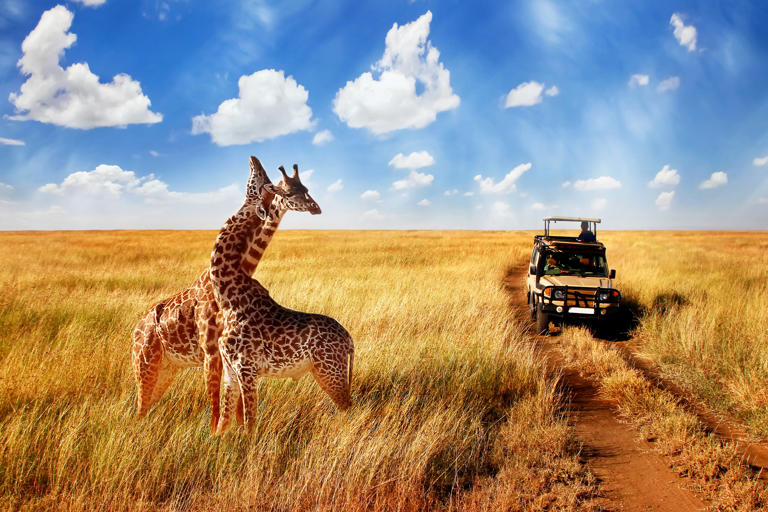

COMMENTS
Fair. Poor. The best months for visiting Kenya (and the best time for wildlife viewing) are during the Dry season from June to October. The wildebeest migration usually reaches the Masai Mara in July or August and remains in Kenya throughout September. It starts moving back to Tanzania's Serengeti National Park around October.
Kenya will abolish visa requirements for global visitors starting in January 2024, guaranteeing a smooth and expedited entry process. The best times to visit Kenya for a safari are from July to September or January to February during the country's dry seasons, however, these are also the most crowded travel times.
Traveling to Kenya in September? Check out this great itinerary. Kenya Wildlife Safari - 10 Days: After 10 days of touring Kenya's most pristine and beautiful places, you'll never want to leave. The tour begins with some sightseeing in Nairobi before heading to Amboseli National Park, home of the spectacular Mt. Kilimanjaro.
September is a good time for beach holidays on the Kenyan coast, being relatively cool and dry. Game viewing in most safari destinations during a holiday in Kenya is good in September. The wildebeest migration is usually well ensconced in the Masai Mara, making it arguably the best time to visit this reserve. Humpback whales are often seen off ...
The months of June through to October mark the start of the long dry season, which is regarded as the best time to go to Kenya for a truly 'Out of Africa' safari experience. The weather is at its best in these dry months, wildlife congregate around water sources, and there is an air of anticipation for the arrival of the Great Migration's mega-herds into the Masai Mara.
Discover the unparalleled allure of Kenya in September. Immerse yourself in magnificent safaris, where you can witness majestic wildlife in their natural habitat. Then, unwind on pristine beaches as you bask in the African sun. Plan your unforgettable luxury adventure today!
On the other hand, the worst month for safari in Kenya is probably April: the height of the wet season, with many camps closed and roads washed away. Overall best months: June & September-October. High season: July-September & Christmas-February. Low season: March-April & November.
Photo: Getty. The best time to go on safari in Kenya is anytime between June to October. Travel in early September and you can almost guarantee that your trip will coincide with the famous wildebeest migration across the Masai Mara. That said, Kenya is brimming with wildlife throughout the year, so it's tough to go wrong.
Find out all about Kenya safari holidays, from the best time for a safari in Kenya to Kenya's national parks. Book your luxury Kenya safari with us! ... September - Best month to visit Kenya. September is a superb month to visit Kenya, as the Great Migration herds are grazing in the Maasai Mara.
The best time to visit Kenya for wildlife viewing is from January to February and from June to September, which also coincides with the Great Migration of millions of wildebeests and zebras. These are dry season months when animals tend to gather around the remaining water sources, making them easier to find in big numbers.
SEP. OCT. NOV. DEC. January is generally a warm and dry month in Kenya, with hot temperatures and low humidity. The weather is ideal for outdoor activities and wildlife viewing, making it a popular time to visit the country. The average temperature in Kenya during January is around 25°C (77°F), with average highs of 29°C (84°F) and lows of ...
September is an equally superb time of year to be in South Africa. The north of the country, especially, ... Kenya was the original birthplace of safari vacations, a diverse destination offering seriously good game and great beaches. Home to the Maasai Mara, and the stunning Laikipia Plateau, this is undoubtedly one of Africa's top safari ...
Kenya is an incredible country with breath-taking scenery, sunny beaches, and lush mountains. Being one of the best safari destinations in Africa is an added reason to visit Kenya.. The country is considerably diverse, so your Kenya packing list will depend on which part of the country you intend to visit and the type of activities you will take part in.
Best Time to Visit Kenya for Safari, Migration, Beaches + Worst Time month by month. Between July and September, you may experience the Great Migration of wildebeest and zebra, making it one of the prime periods to visit Kenya. This is also the dry season of the country. There are less tourists and more opportunities to see the breathtaking ...
Kenya is one of the top safari destinations in Africa, and given its breathtaking landscapes, abundance of wildlife and luxury lodges, it's no secret why. From family-suited sojourns and romantic retreats, to immersive bush experiences and informative guided safaris, Kenya has a spectacular offering suited to all tastes and occasions.
Weather in Kenya in September. Kenya in September experienced varied weather conditions across different regions. Generally, the country enjoys warm and sunny weather, making it an ideal time for outdoor activities. Temperatures range from around 20°C to 30°C (68°F to 86°F) in most areas. Along the coastal regions like Mombasa and Malindi ...
Kenya in September : In September, you can expect bright skies and mild weather in Kenya. The arid winter season is in the midst... +254-753-029-209 [email protected] +254-759-588-041
Wildebeest crossing the Mara River during the Great Migration in September. Depending on the rains, the Masai Mara in Kenya is the best place to see the world-famous wildebeest migration when on safari in September. Many of the large herds have crossed the Mara River, which separates the Serengeti and Masai Mara. A river crossing is still possible in September, but safari-goers are better off ...
The best time for safari in Kenya is during the great migration season that occurs between July and October. The great migration involves the movement of over 1.2 million wildebeest from Serengeti National Park to Kenya's Masai Mara National Park. ... September is undoubtedly on the list of the best time for a Kenya safari. It is still hot ...
July is also a good time to spot huge flocks of pink flamingos at Lake Nakuru. Much like July, August is one of the best all-around months to visit Kenya, but it's a busy time. The Great Migration is well and truly underway, and wildebeest are filling the plains of the Masai Mara. If you're not in the Mara, August is an excellent time to ...
Camera: A good camera is essential for documenting your safari journey. Make sure you bring extra lenses, battery packs, tripods, and lens cleaners. Phone: Cell phones can be an indispensable tool when exploring Kenya's wonders. Make sure to bring the necessary chargers and adaptors for staying connected while on the go.
How I Used My Layover in Kenya to Go on a Safari Private tour companies specialize in helping travelers turn a hassle into a highlight. By Jessica Kelly. Published on Feb 14, 2024 at 9:01 AM.
Find out all about Kenya safaris, from the best time to visit Kenya, to Kenya's best safari lodges and national parks. Book your Kenya safari vacation with us! ... September - Best month to visit Kenya. September is a superb month to visit Kenya, as the Great Migration herds are grazing in the Maasai Mara.
An African safari can cost between $200 and $1,600 per person per day. ... There will be more tourists and higher costs from June to September on most safaris. ... Kenya. Kenya is the original ...